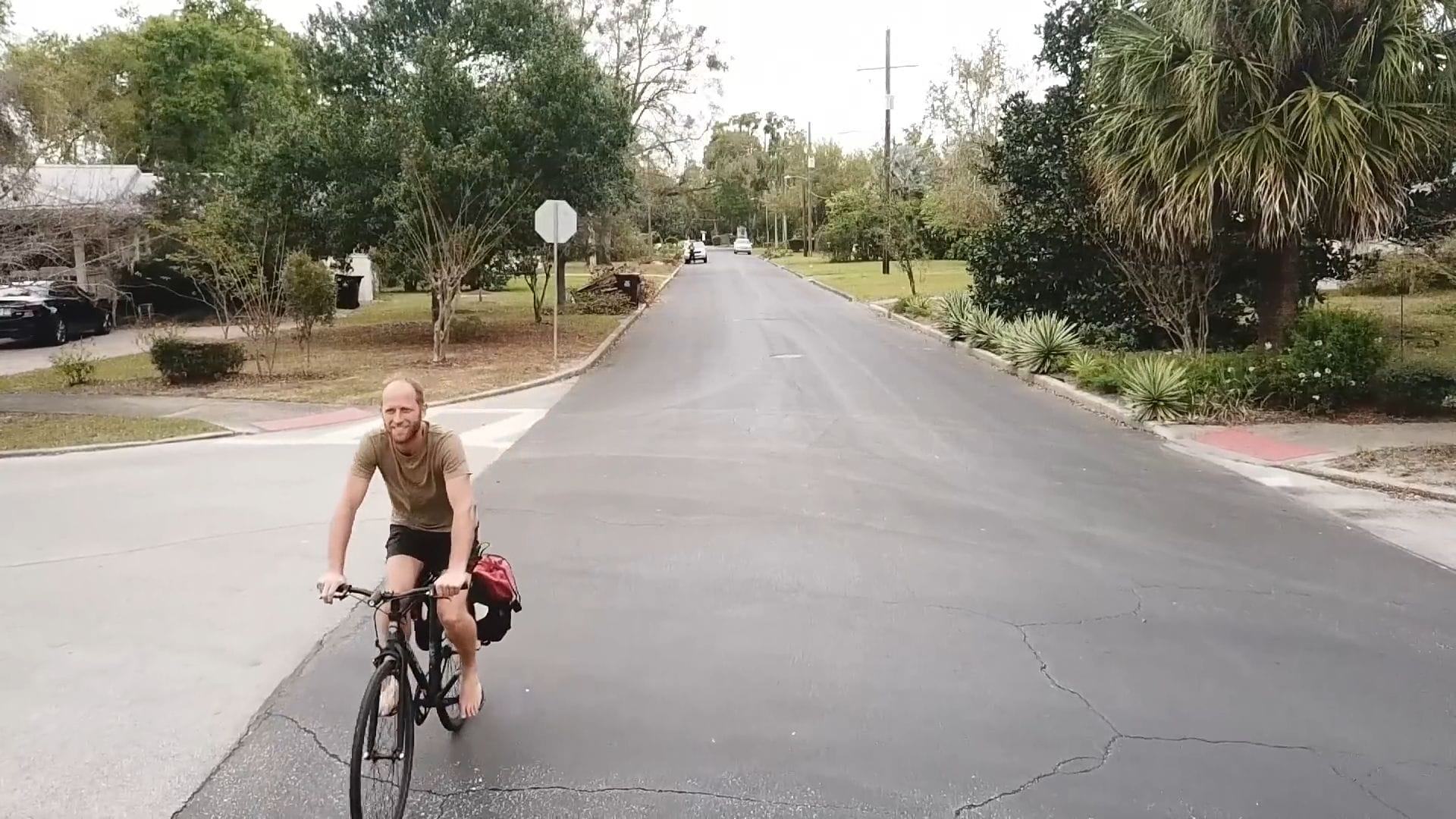This Man Grows His Own Toilet Paper And Lives Debt Free
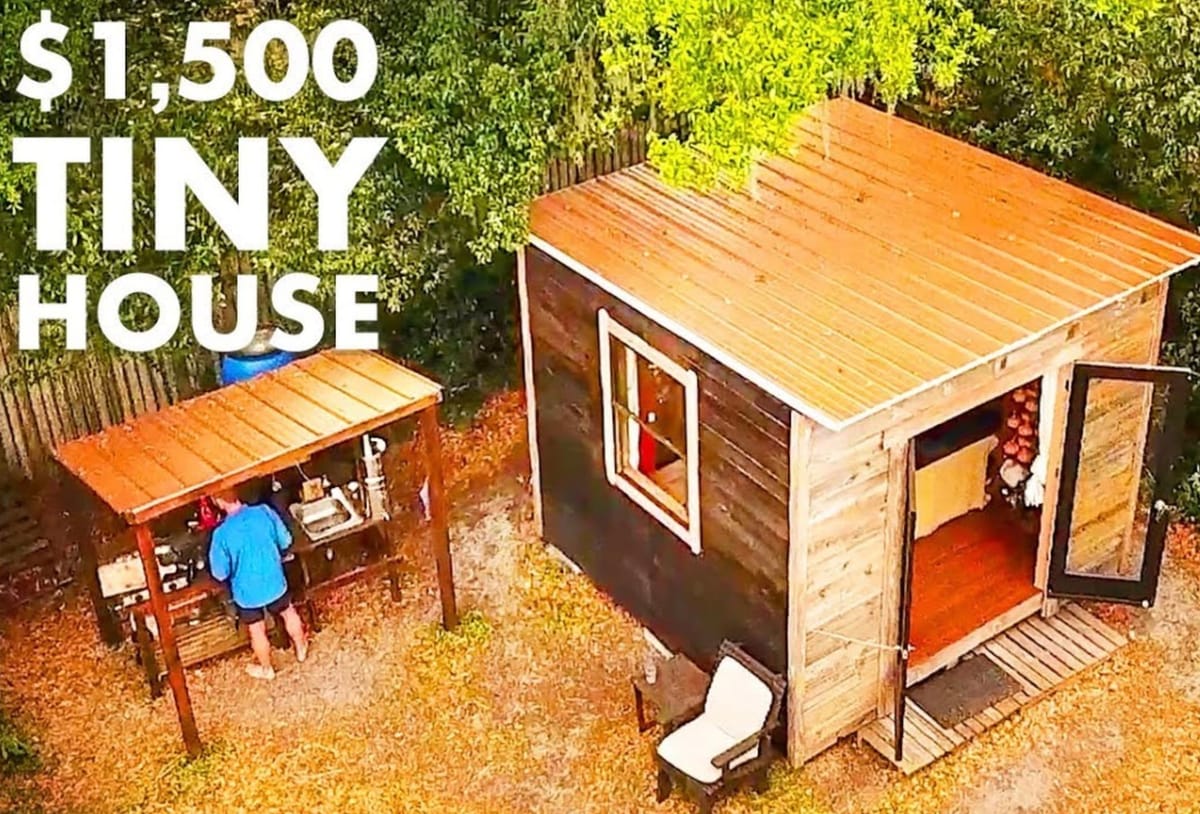
Welcome to one of the most inspiring tiny house projects you’ll ever encounter, where sustainability meets simplicity in just 100 square feet of thoughtfully designed living space.
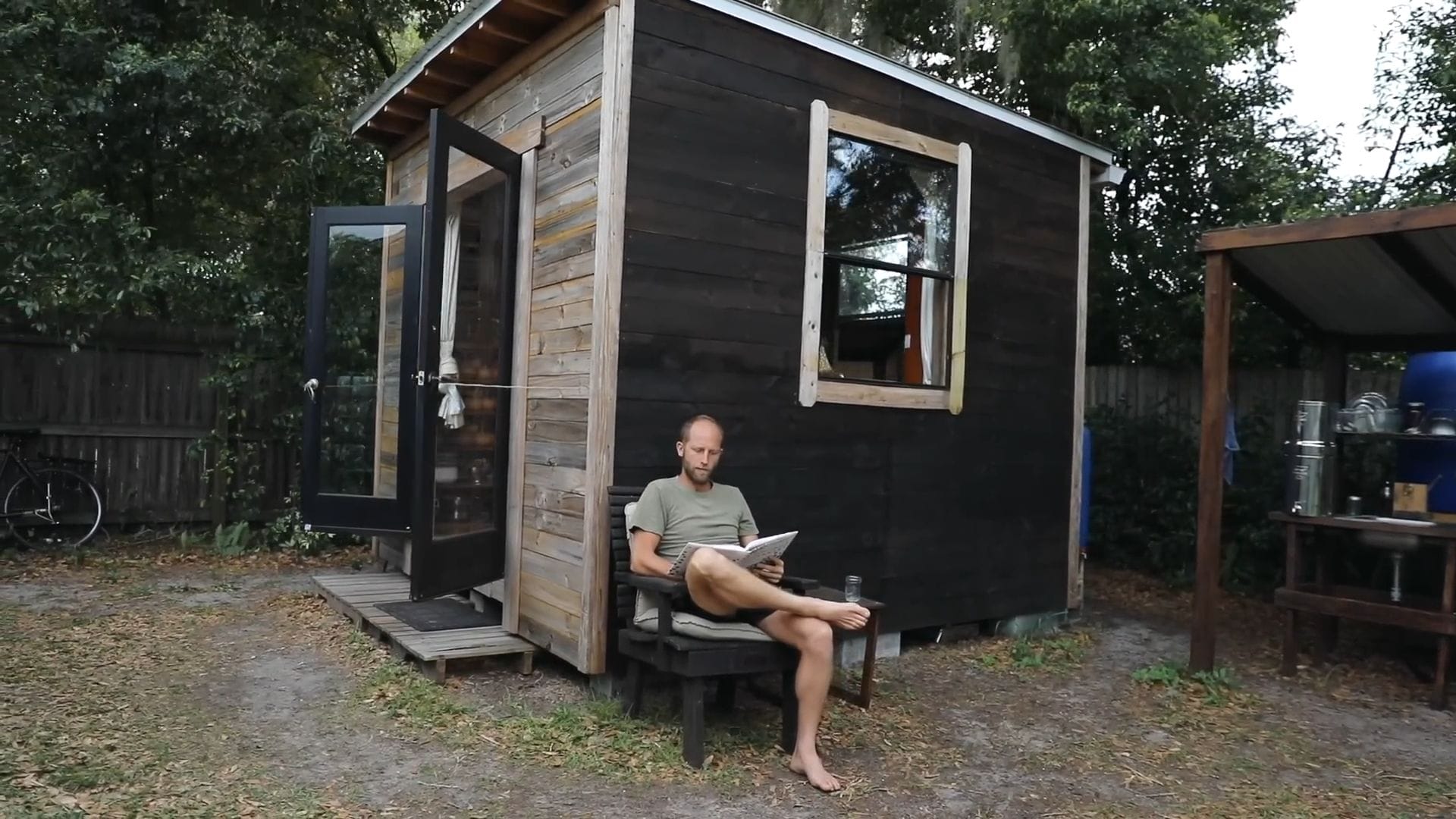
Rob has created something truly remarkable here – a completely self-sufficient homestead that allows him to live without any bills, debt, or even a car.
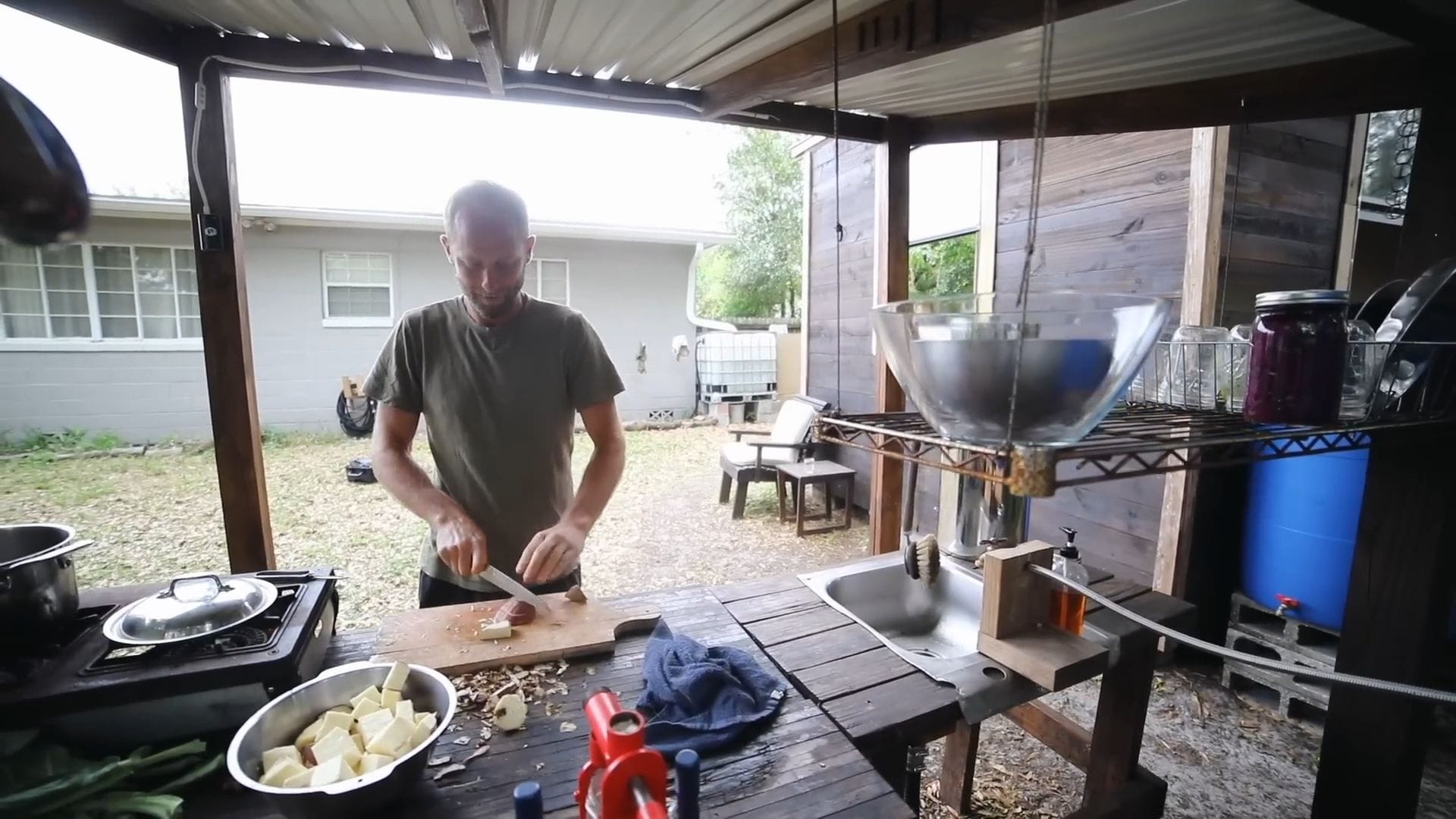
The beauty of this setup is how it prevents the common trap of overextending yourself, providing just enough to meet basic needs while maintaining a peaceful, content lifestyle.
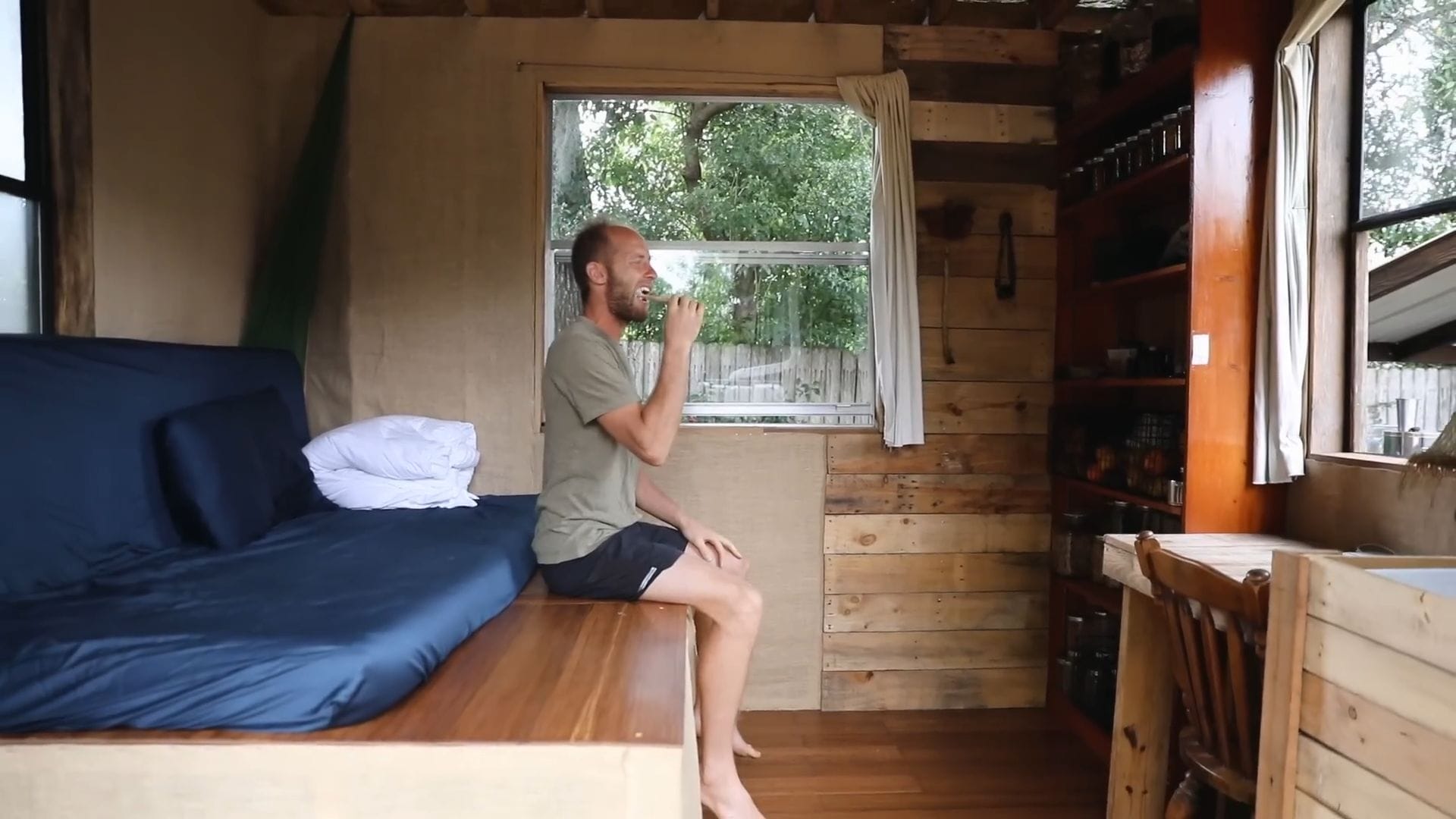
Standing before this modest 10×10 foot structure, you’d never guess the incredible systems and thoughtful design packed into such a small footprint.
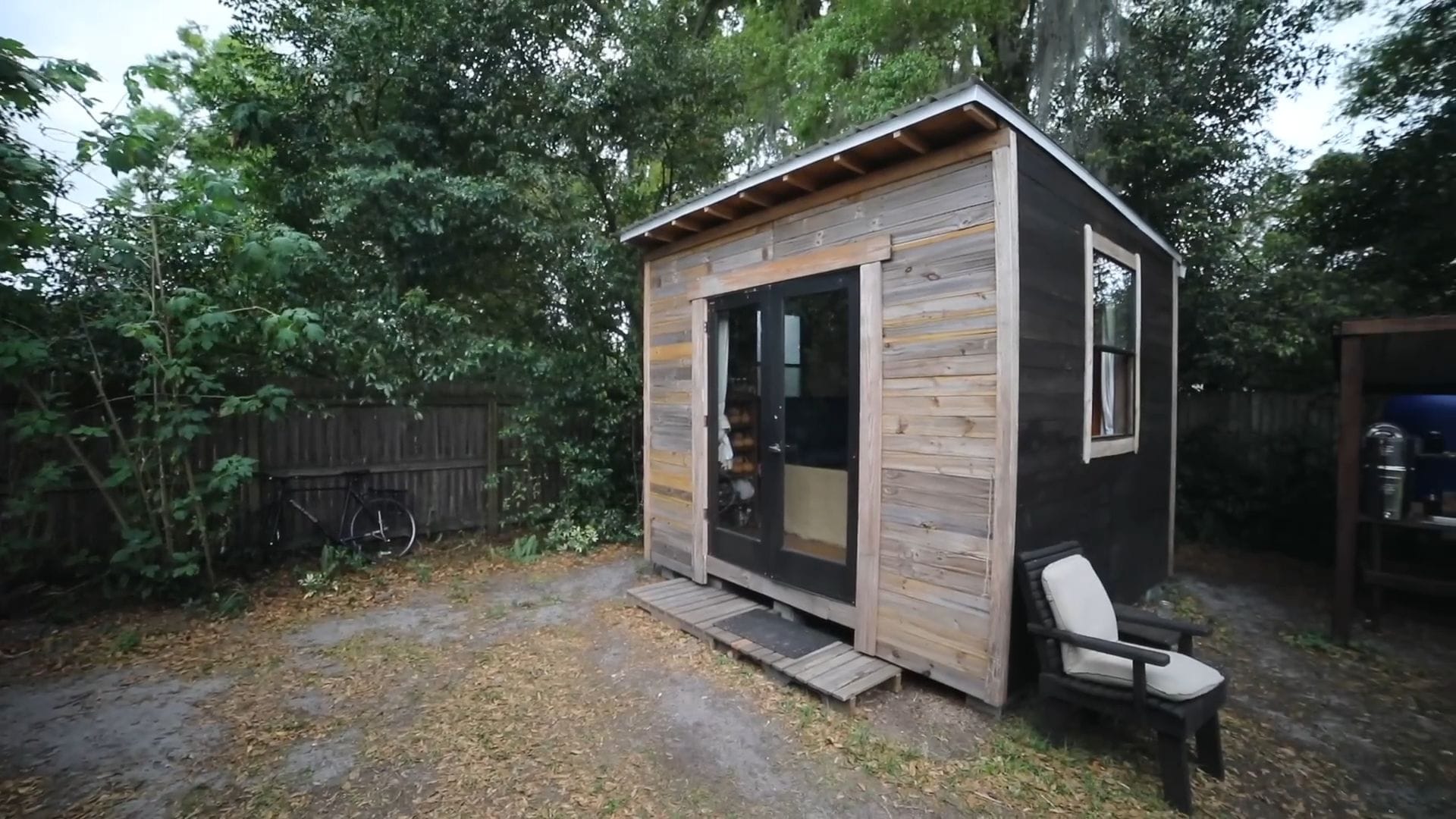
What makes this build truly extraordinary is Rob’s commitment to minimal environmental impact, constructing the entire house from 99% secondhand and repurposed materials for just $1,500.
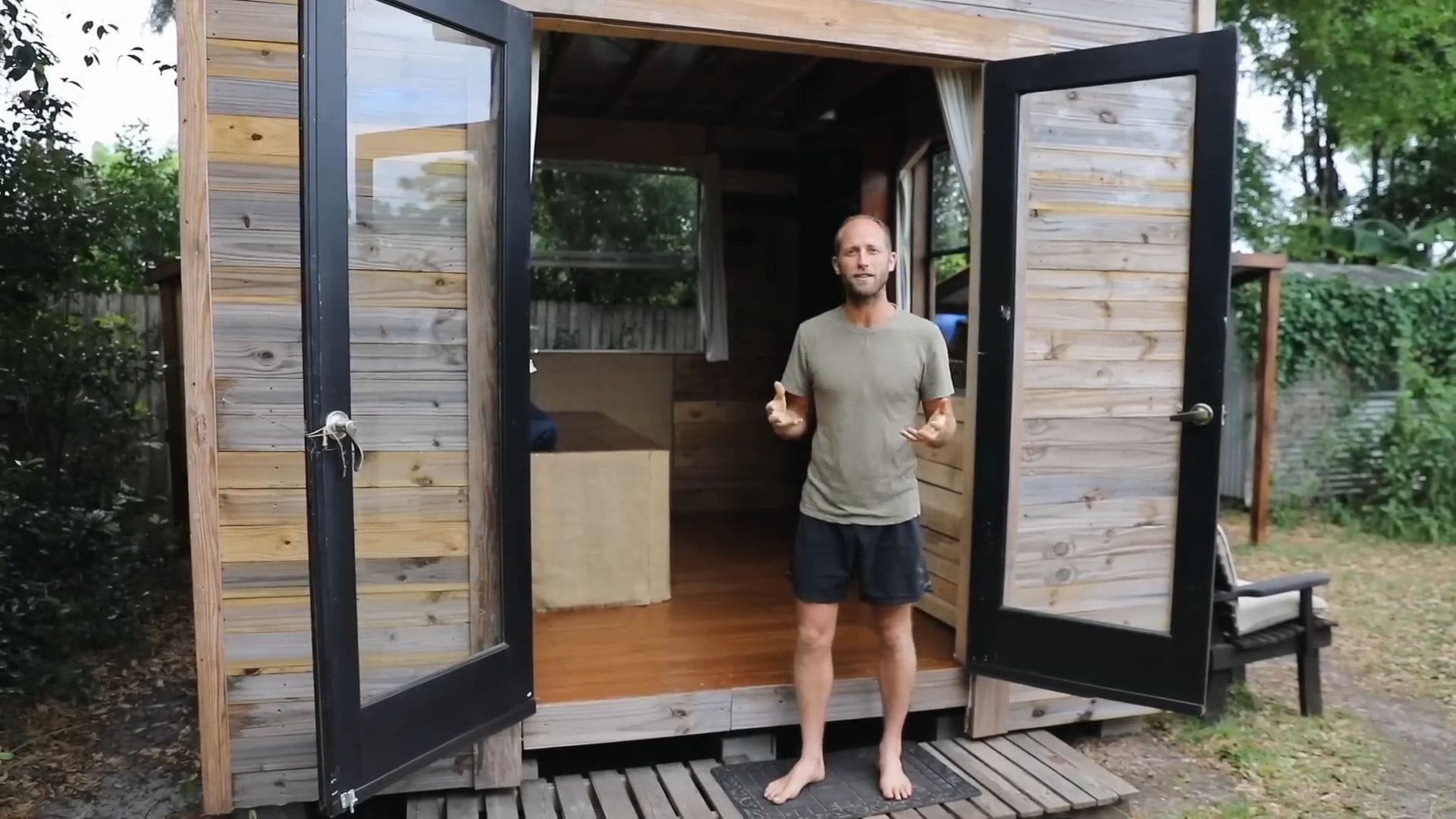
This approach proves that sustainable living doesn’t require the $100,000 to $150,000 price tags we often see with luxury tiny homes.
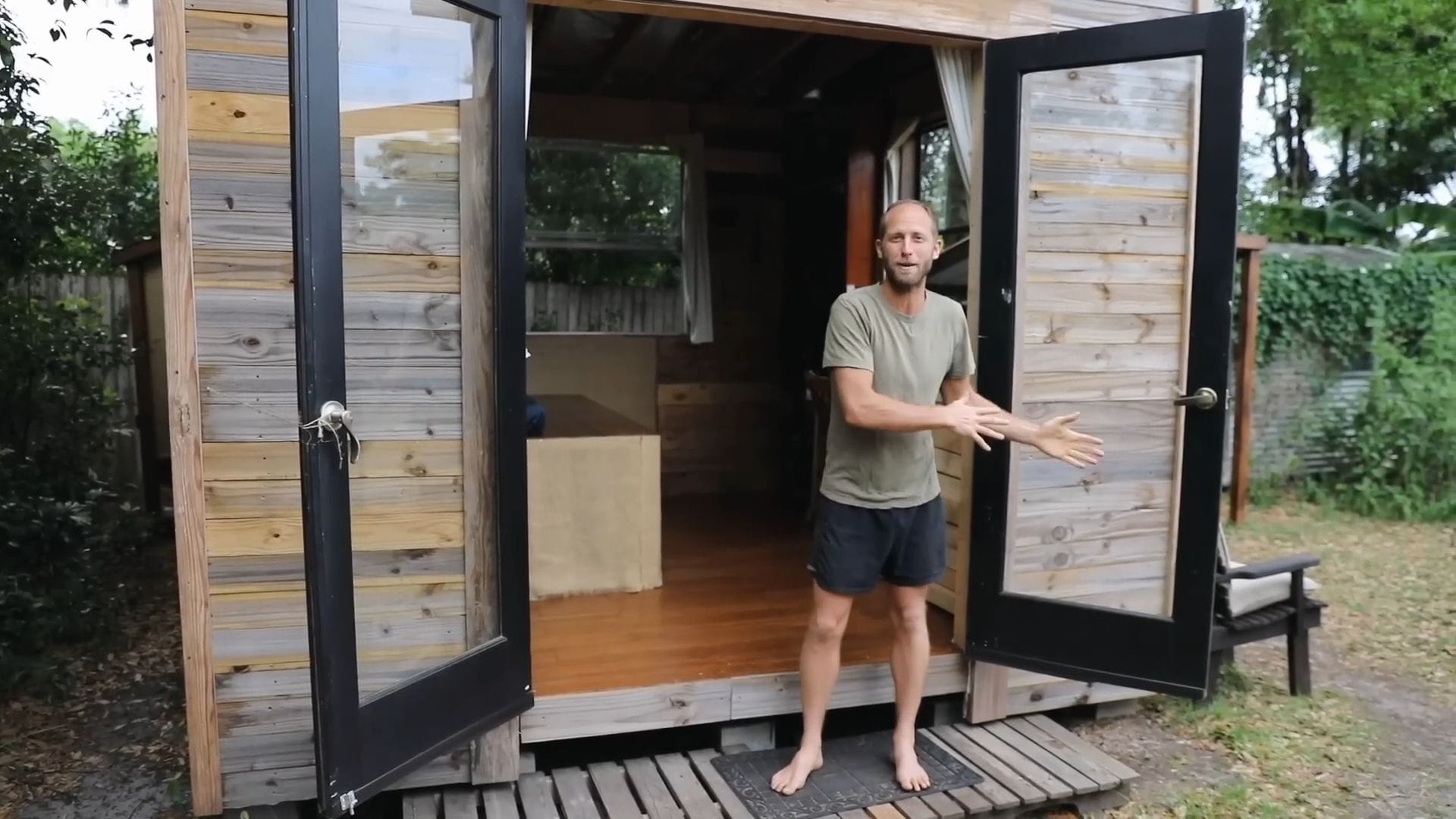
Located just three miles from downtown Orlando, Florida, this tiny house was deliberately designed to blend seamlessly into the urban neighborhood.
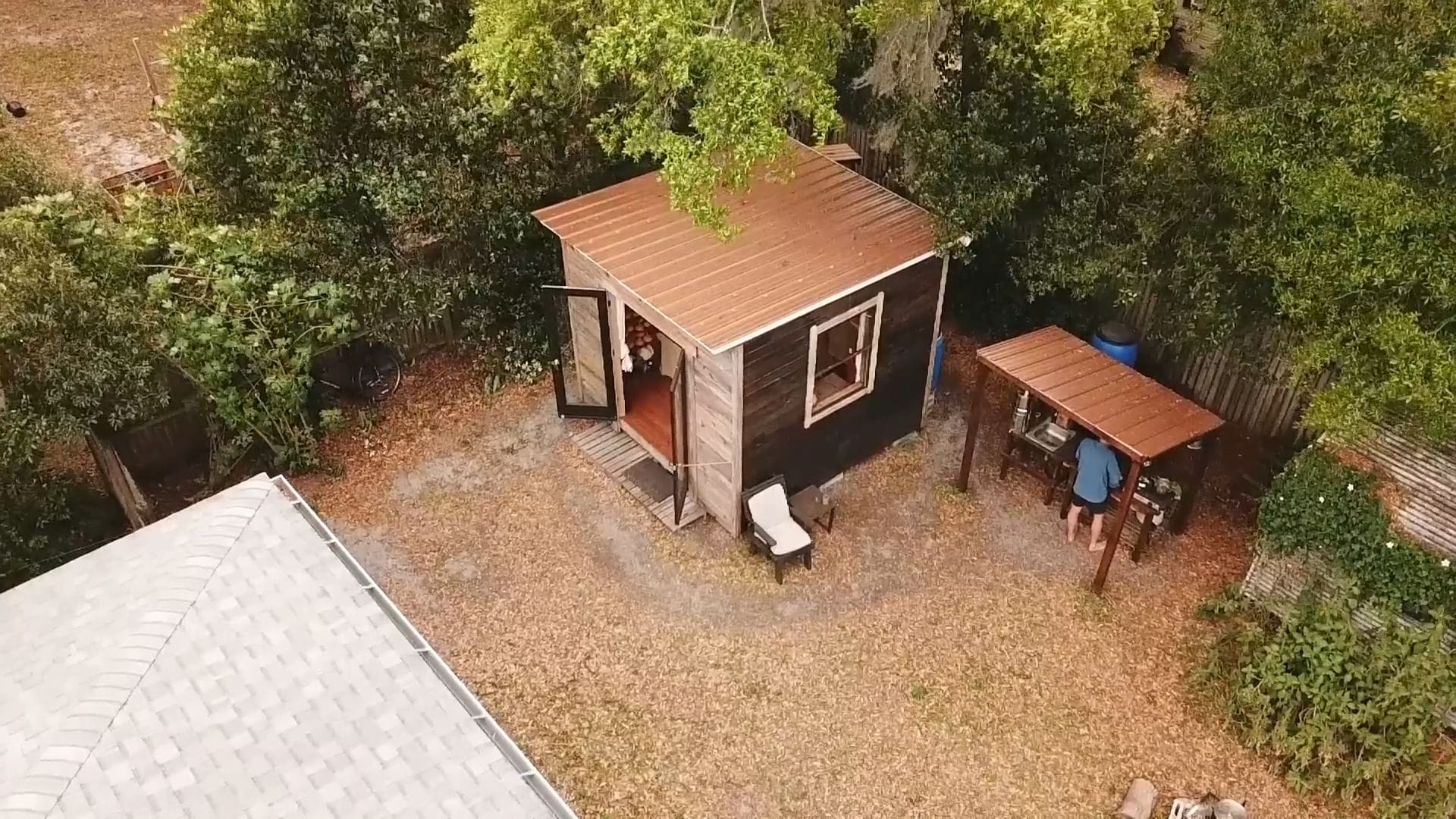
The shed-like appearance was a strategic choice, since tiny houses aren’t legal in many areas and this one isn’t built on wheels.
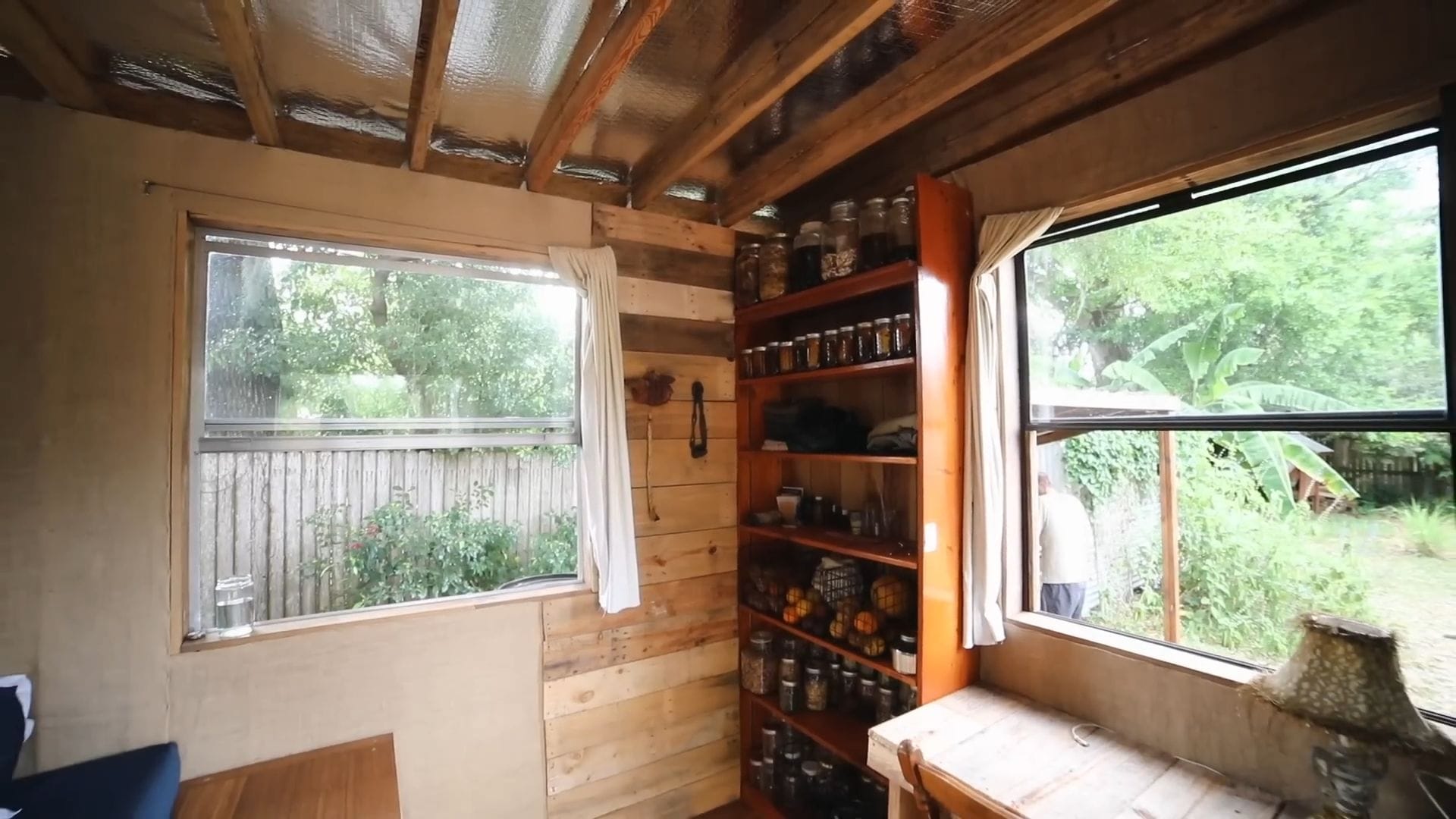
Rob sourced most materials from construction site leftovers, using basic 2x4s, plywood, and pallets for the foundation.

The metal roof and windows came from Craigslist finds, while the doors were also secondhand treasures.
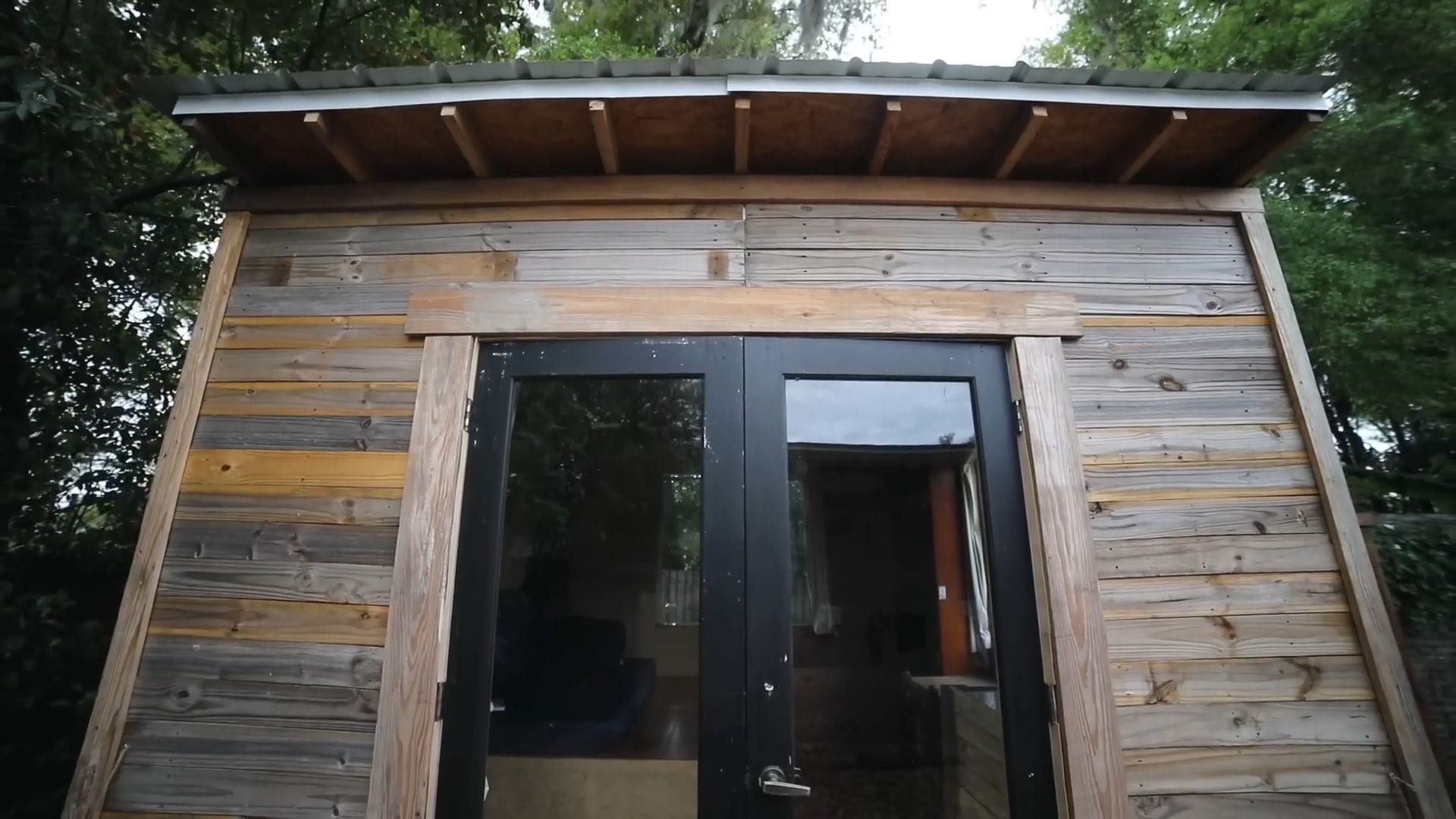
Step inside and you’ll immediately notice how the design prioritizes airflow over insulation, a crucial adaptation for Florida’s brutal summer heat.
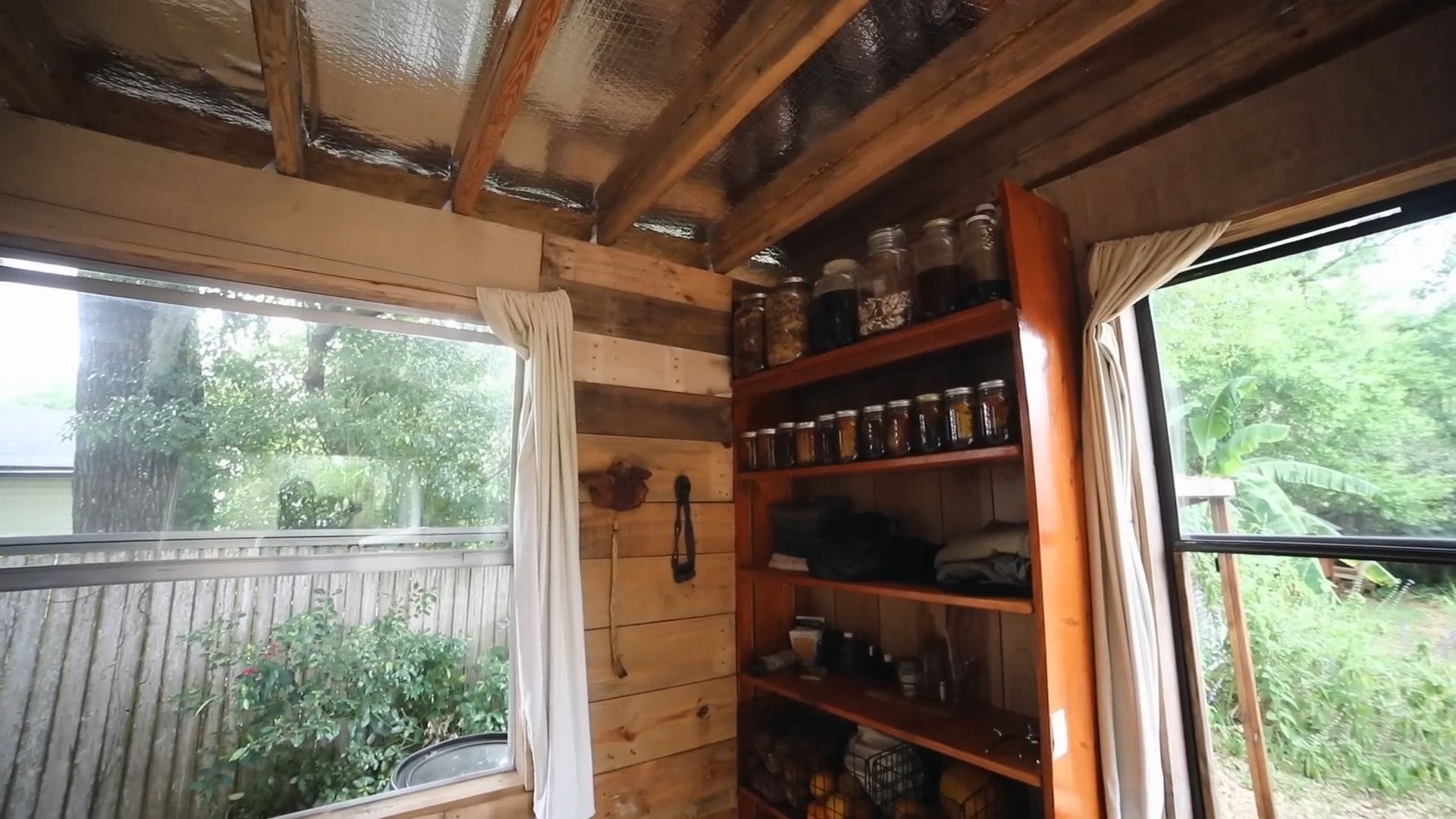
The open roof design creates a constant cross breeze that flows through strategically placed windows and doors on either side.
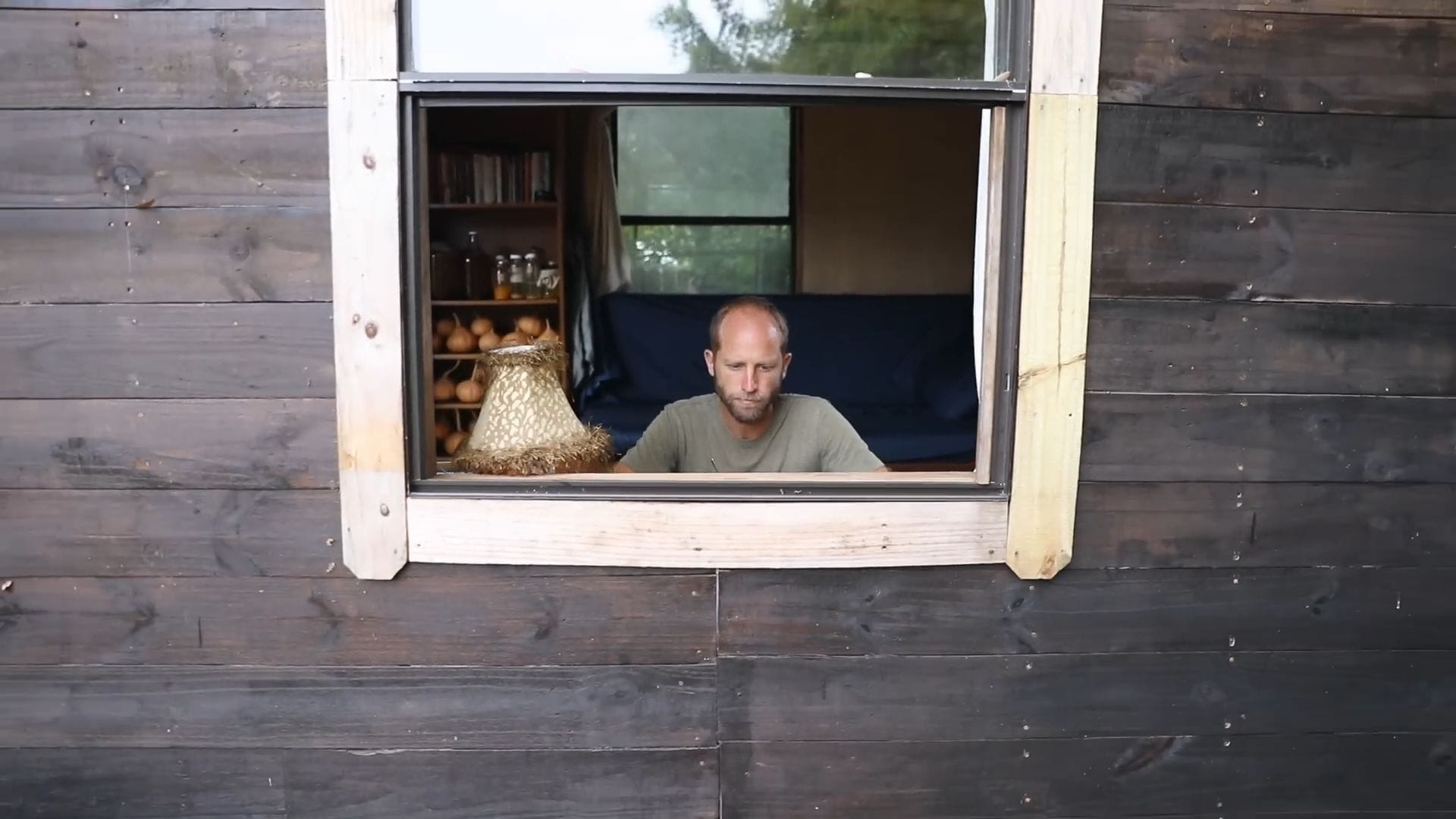
Without air conditioning or traditional insulation, the space relies on burlap coverings that improve aesthetics while maintaining maximum ventilation.
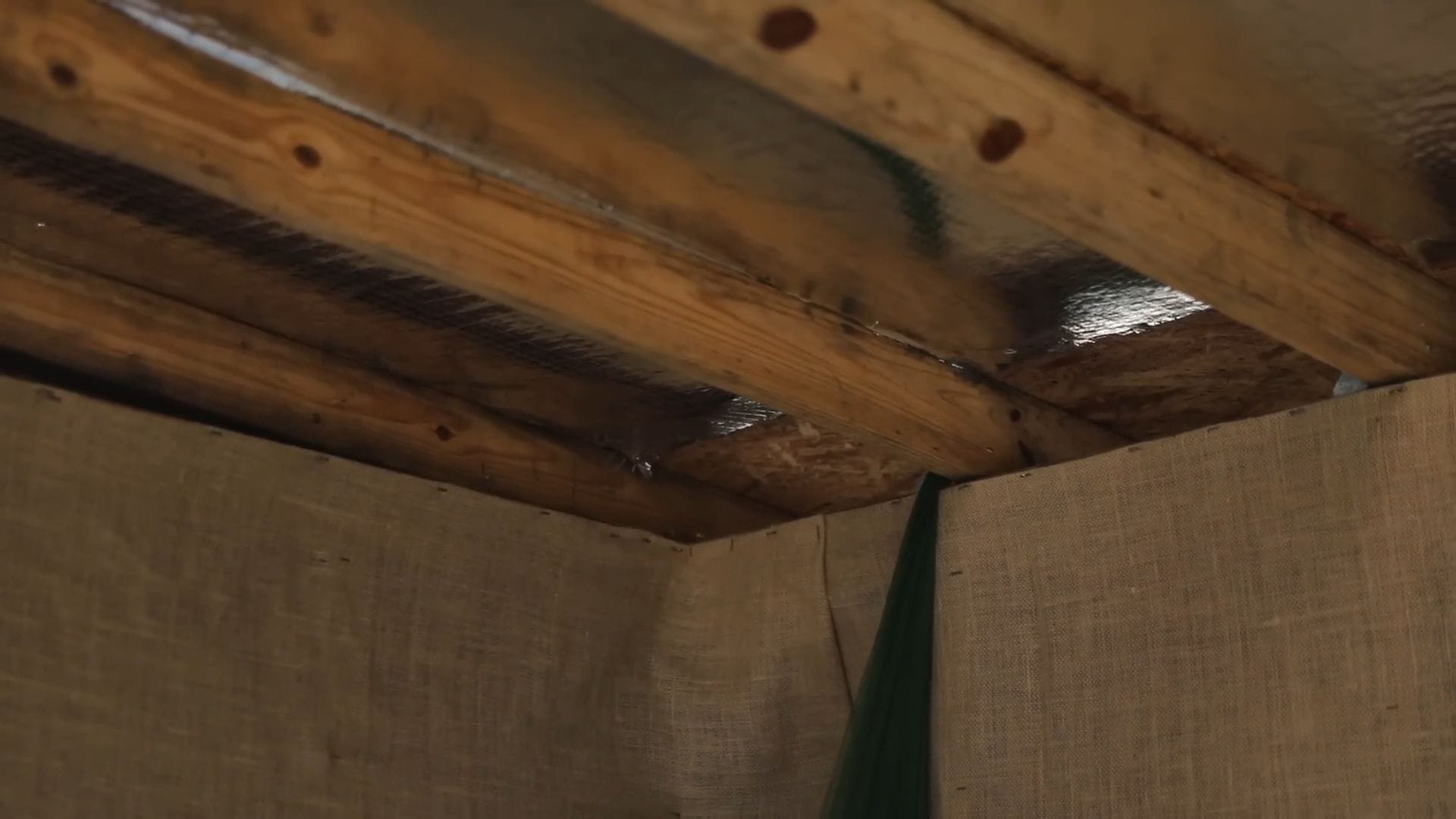
The bed frame, constructed from leftover 2x4s, sits elevated above beautiful flooring salvaged from a flooded house.
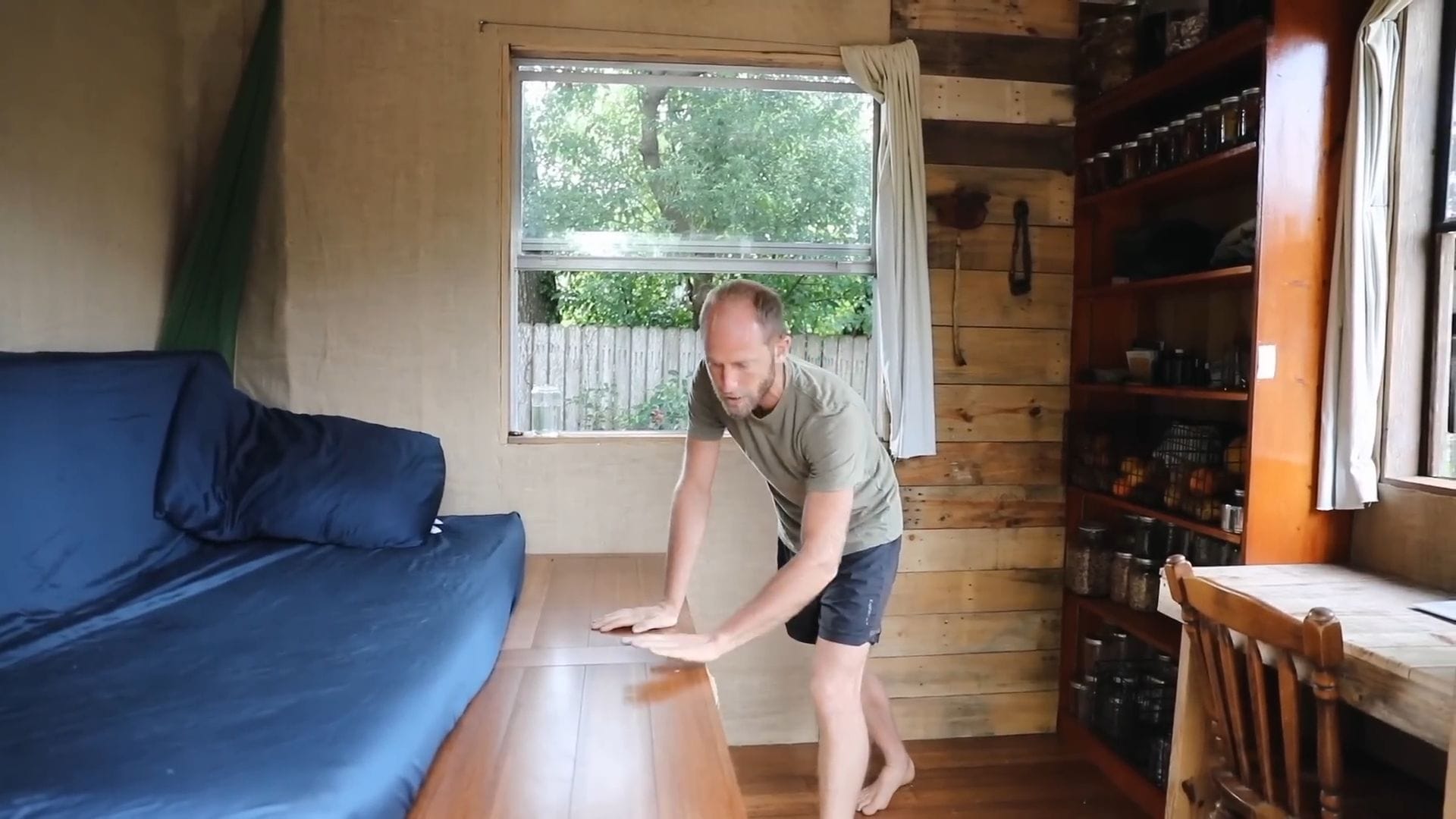
The desk area showcases more creative repurposing, built entirely from pallets and construction scraps.
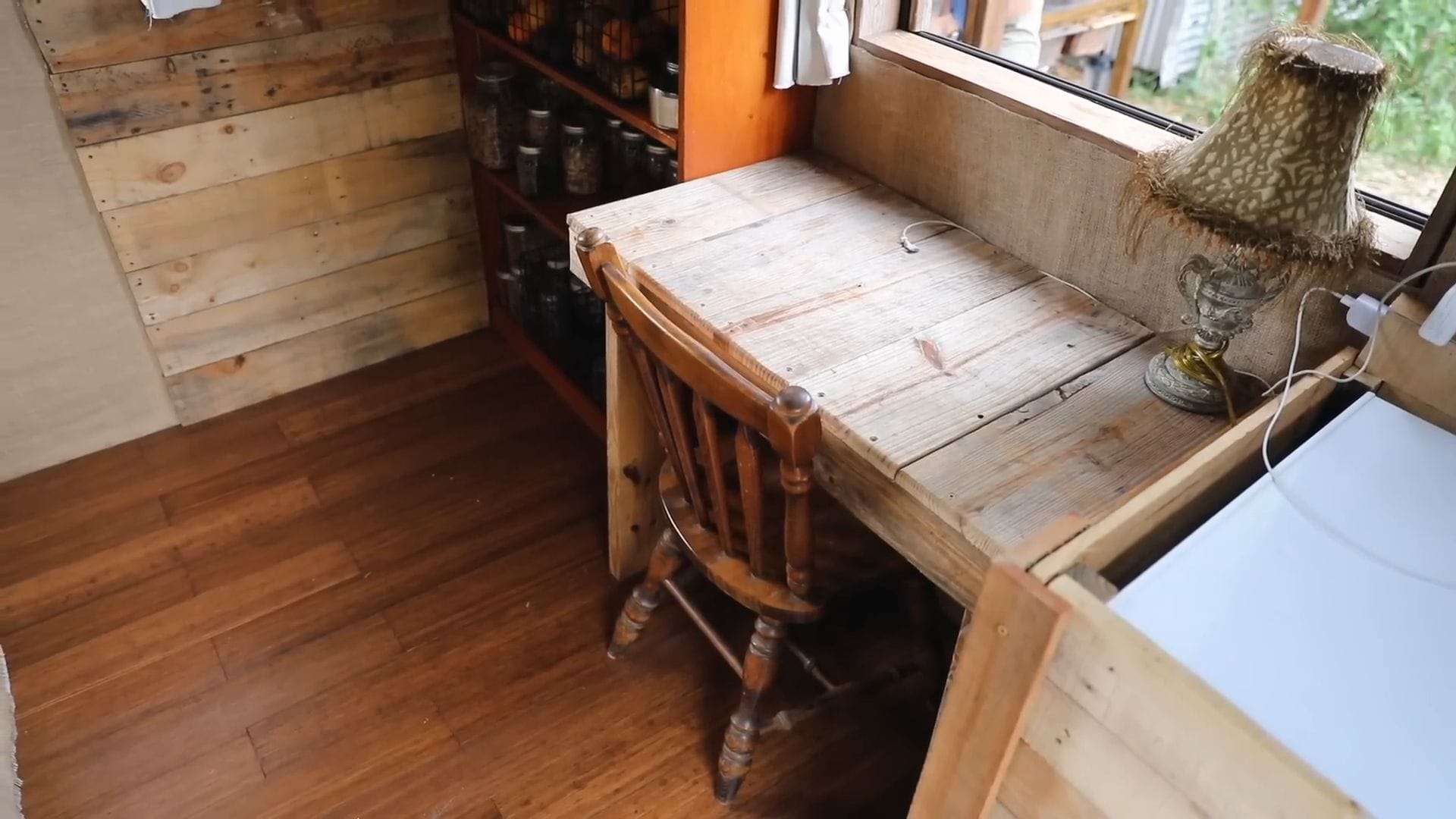
A $15 garage sale chair provides the perfect workspace seating, while Habitat for Humanity shelves offer simple storage solutions.
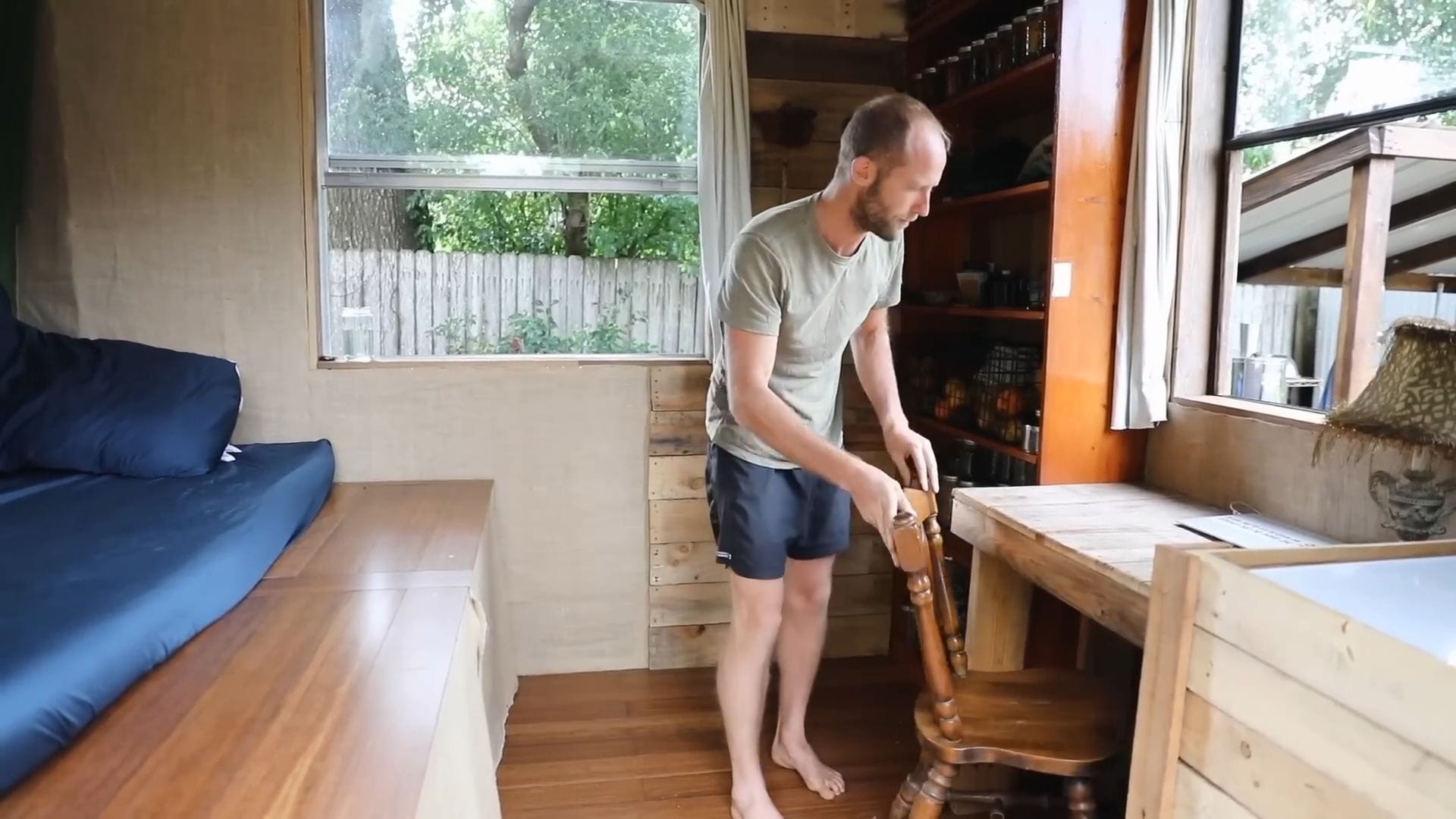
The real star of this tiny house isn’t furniture – it’s food storage, supporting Rob’s incredible project of growing and foraging 100% of his food for an entire year.
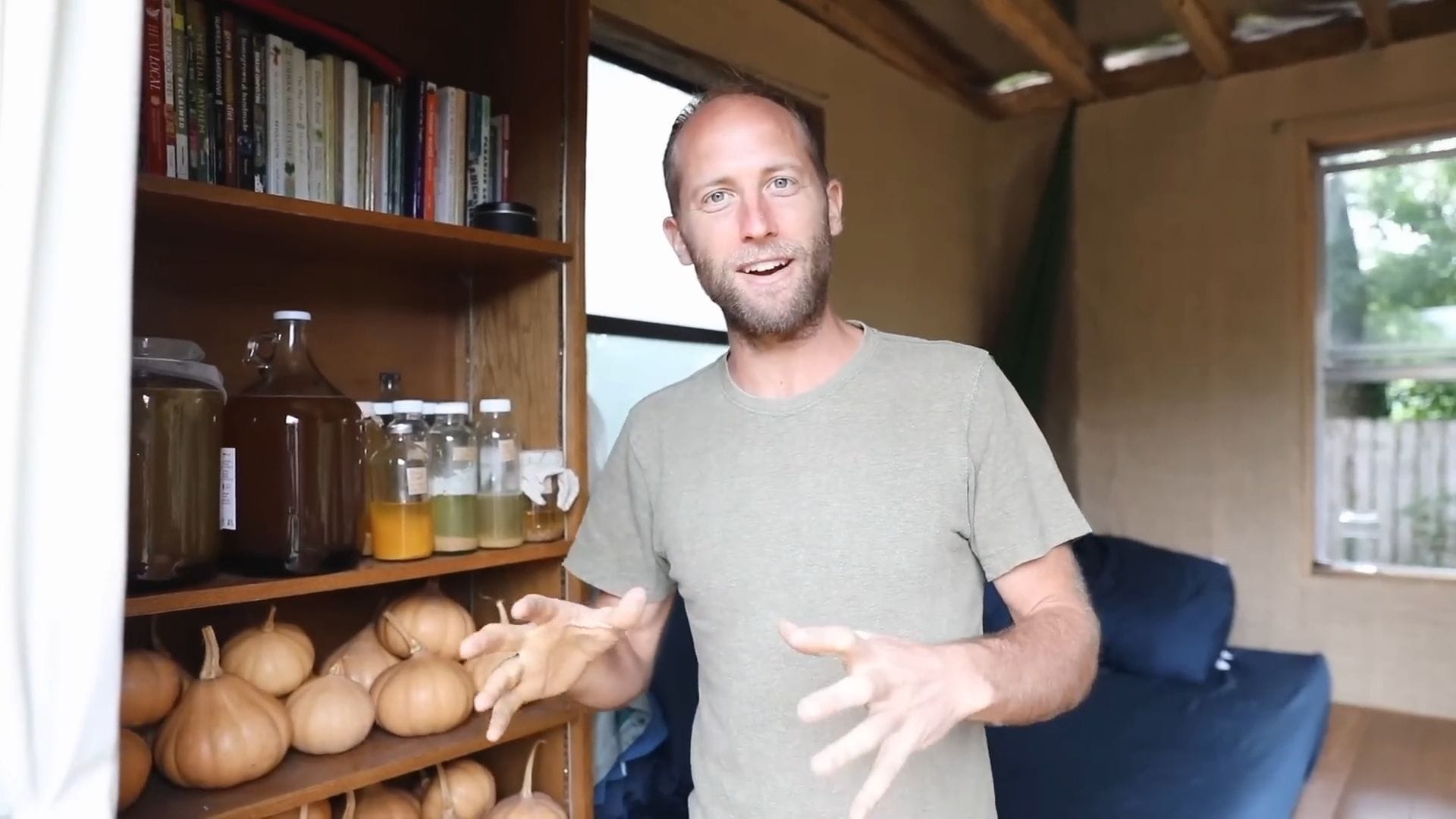
Every corner serves as a carefully organized food storage system, with Seminole pumpkins from last summer’s harvest displayed prominently.
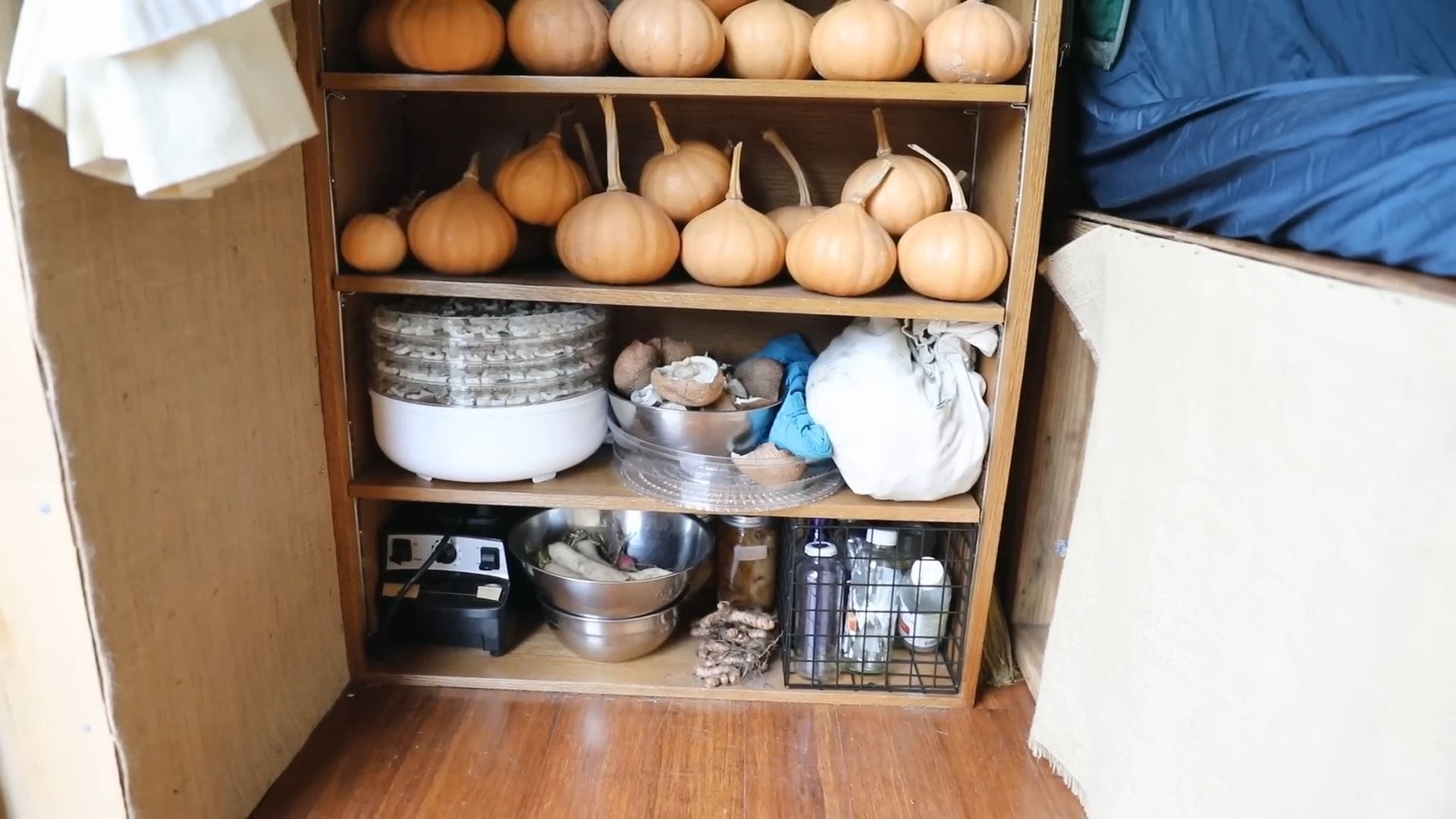
Shelves overflow with homemade ferments including honey wine, vinegars, ginger beer, and jun.
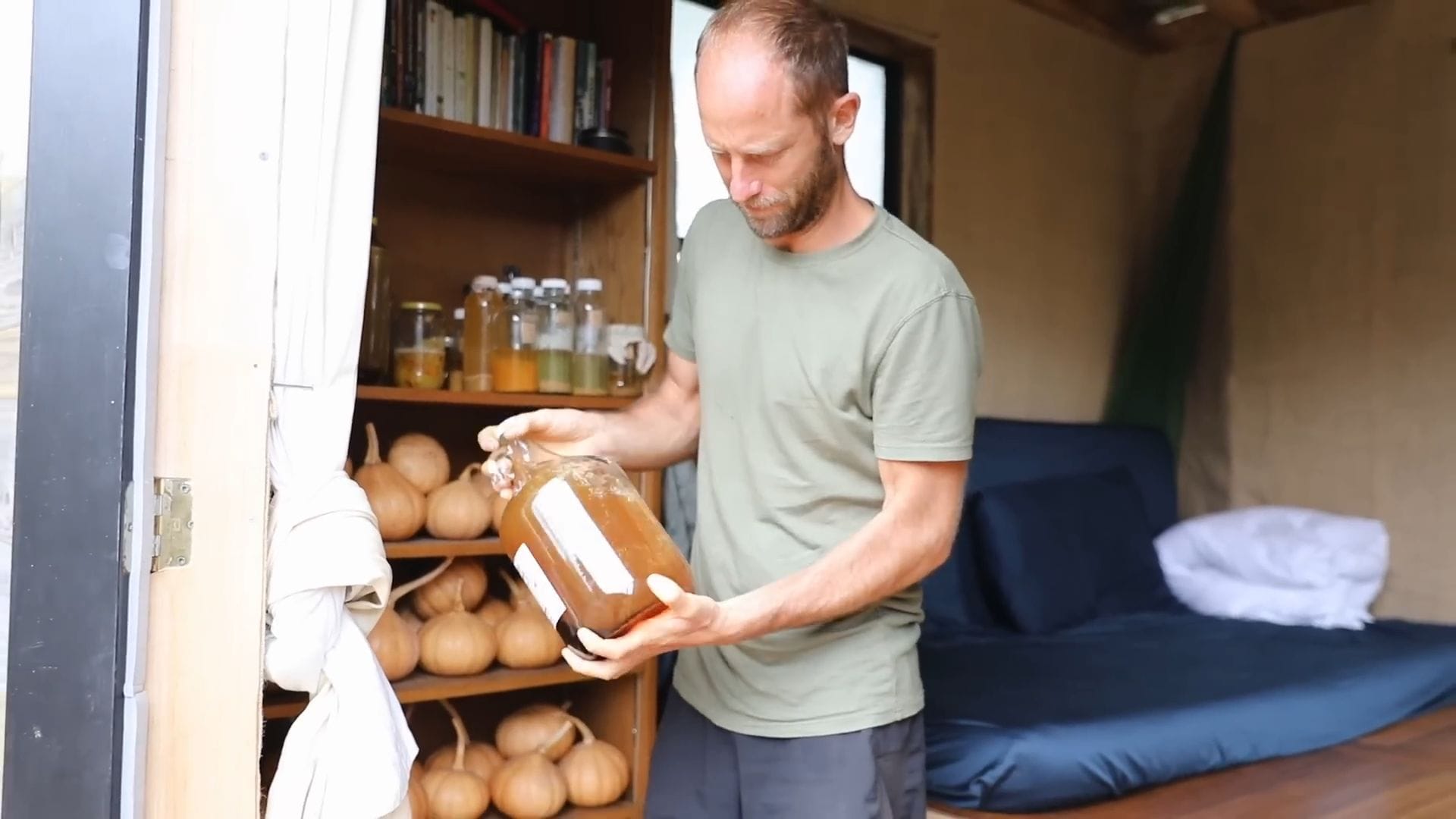
The back storage area reveals the true scope of this food independence project, featuring jars of honey from four beehives that produced 75 pounds last fall.
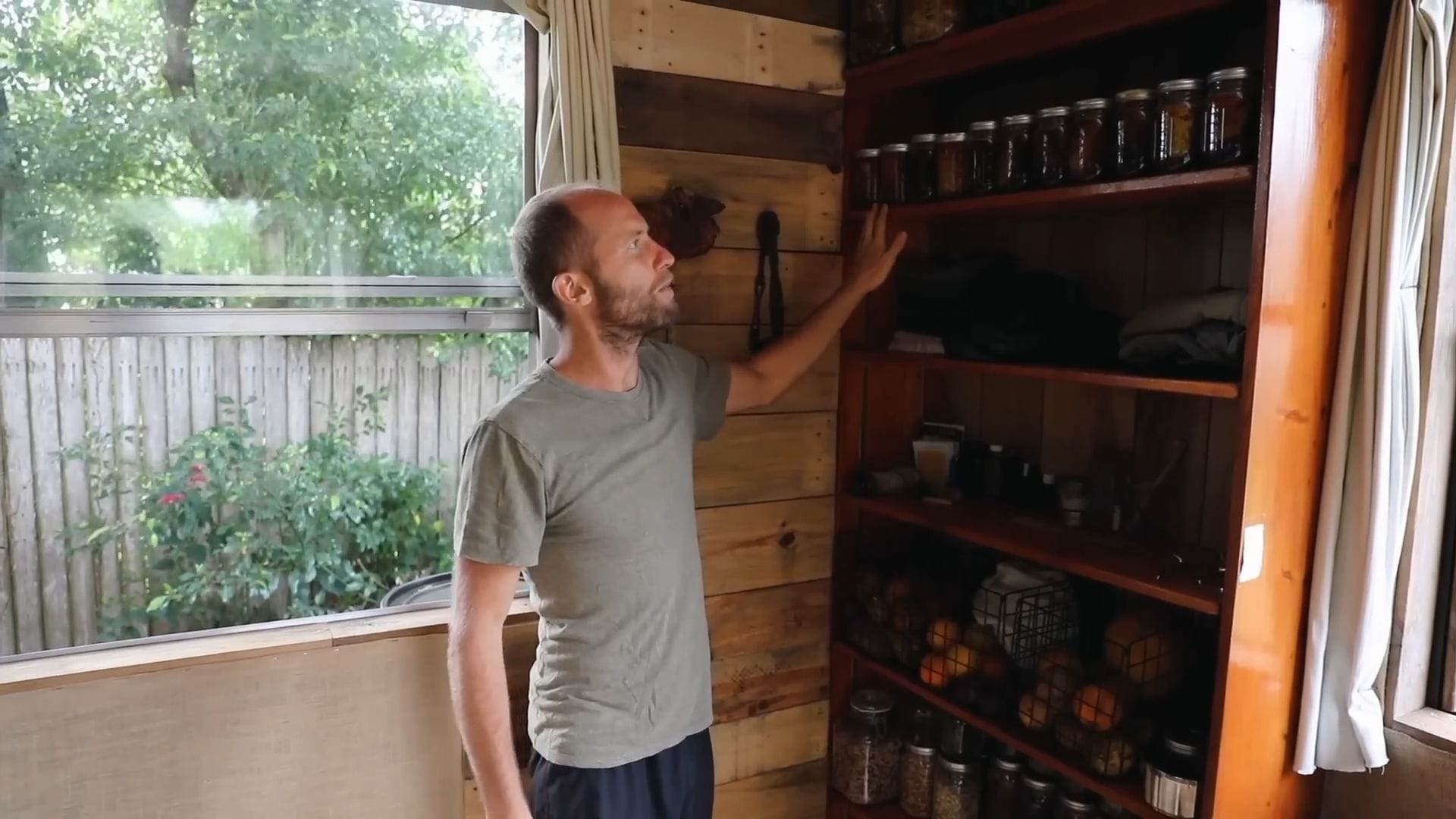
Foraged citrus including oranges, grapefruits, and lemons share space with homegrown papayas.
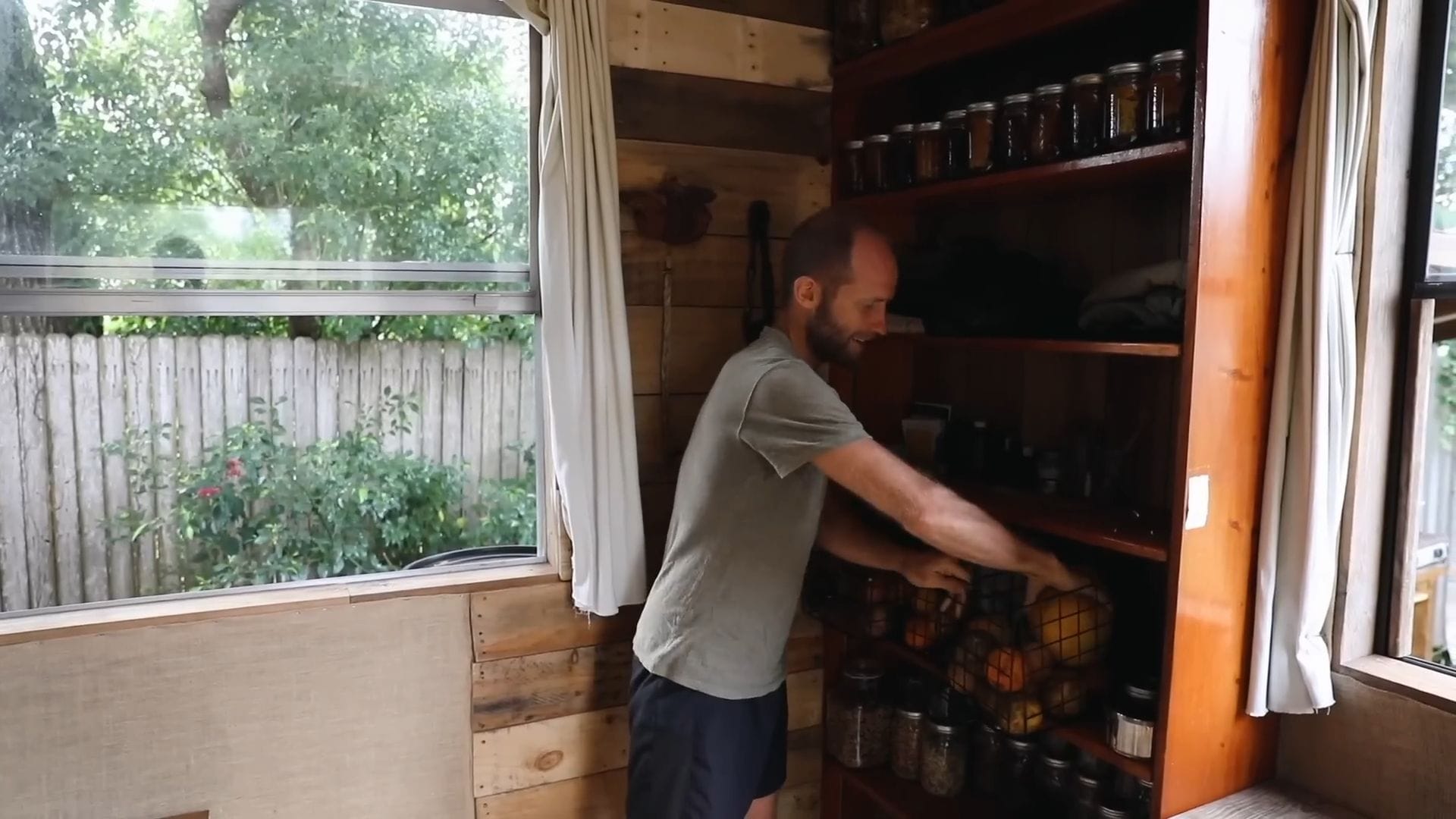
The lower shelves contain essential staples like pigeon peas from the front yard, pumpkin seeds, and dried herbs including onion and garlic.
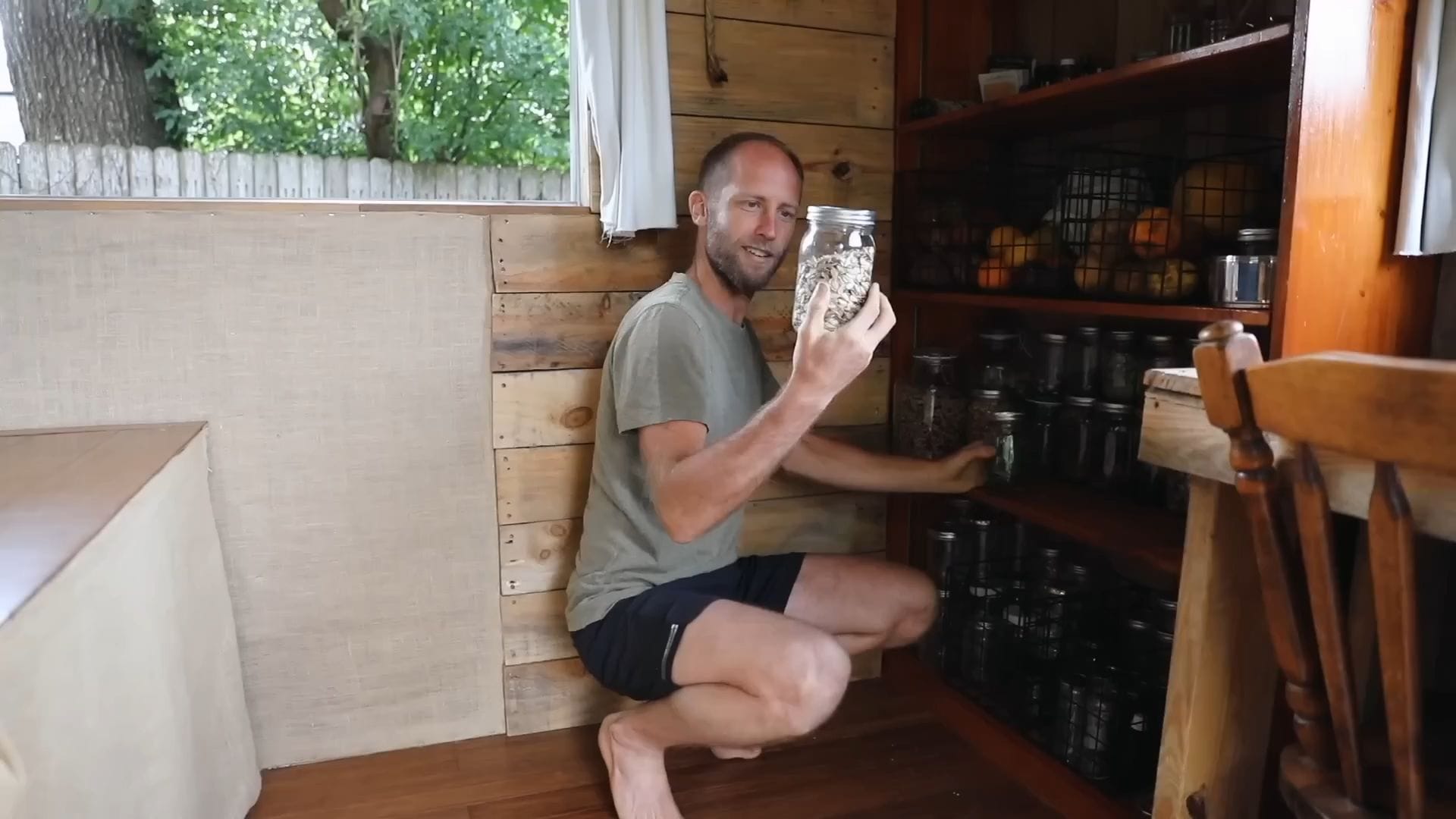
Rob even makes his own coconut oil from foraged coconuts and harvests salt directly from the ocean.
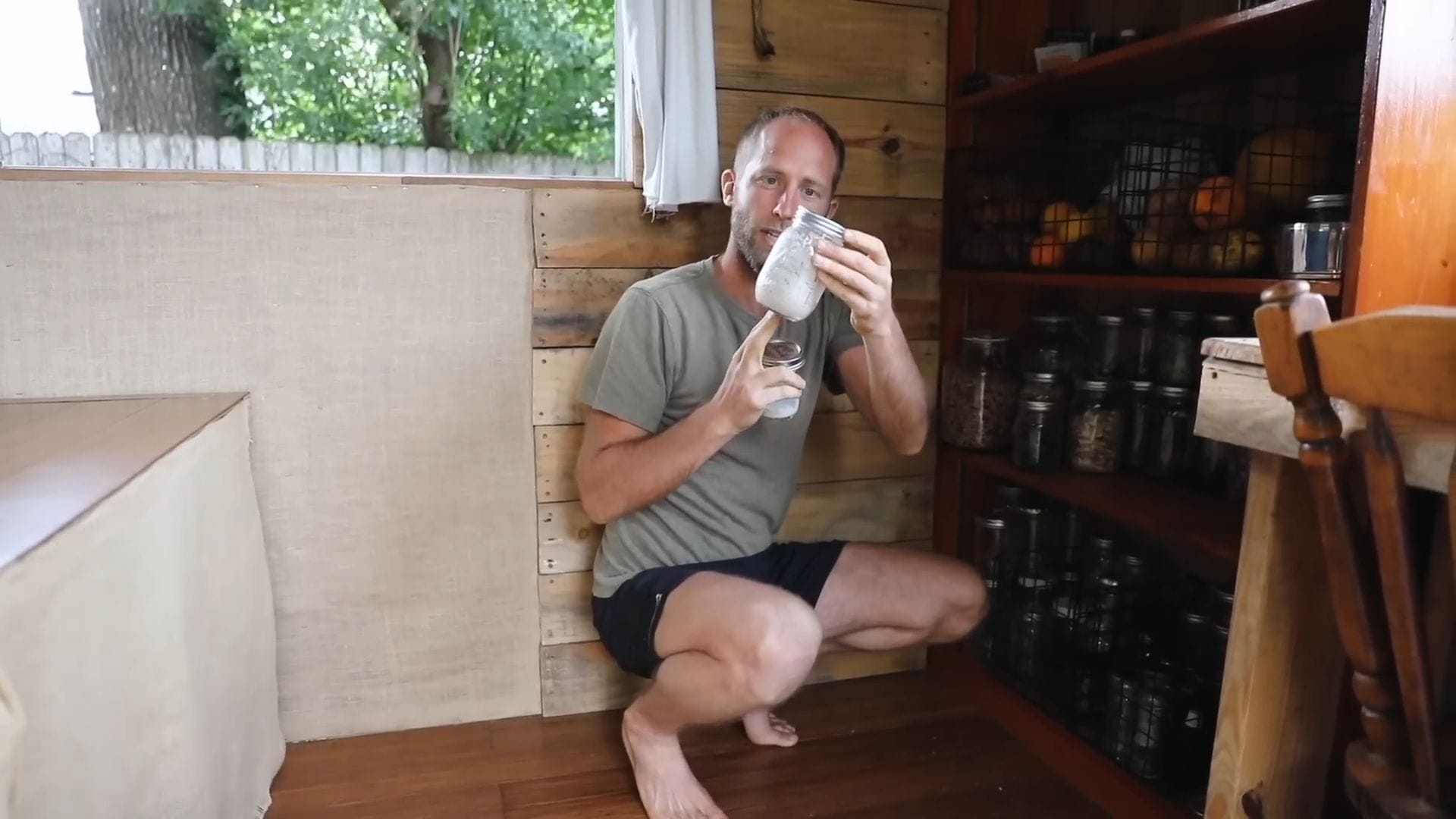
This single clothing shelf holds Rob’s entire wardrobe, proving that living simply doesn’t mean living without style.
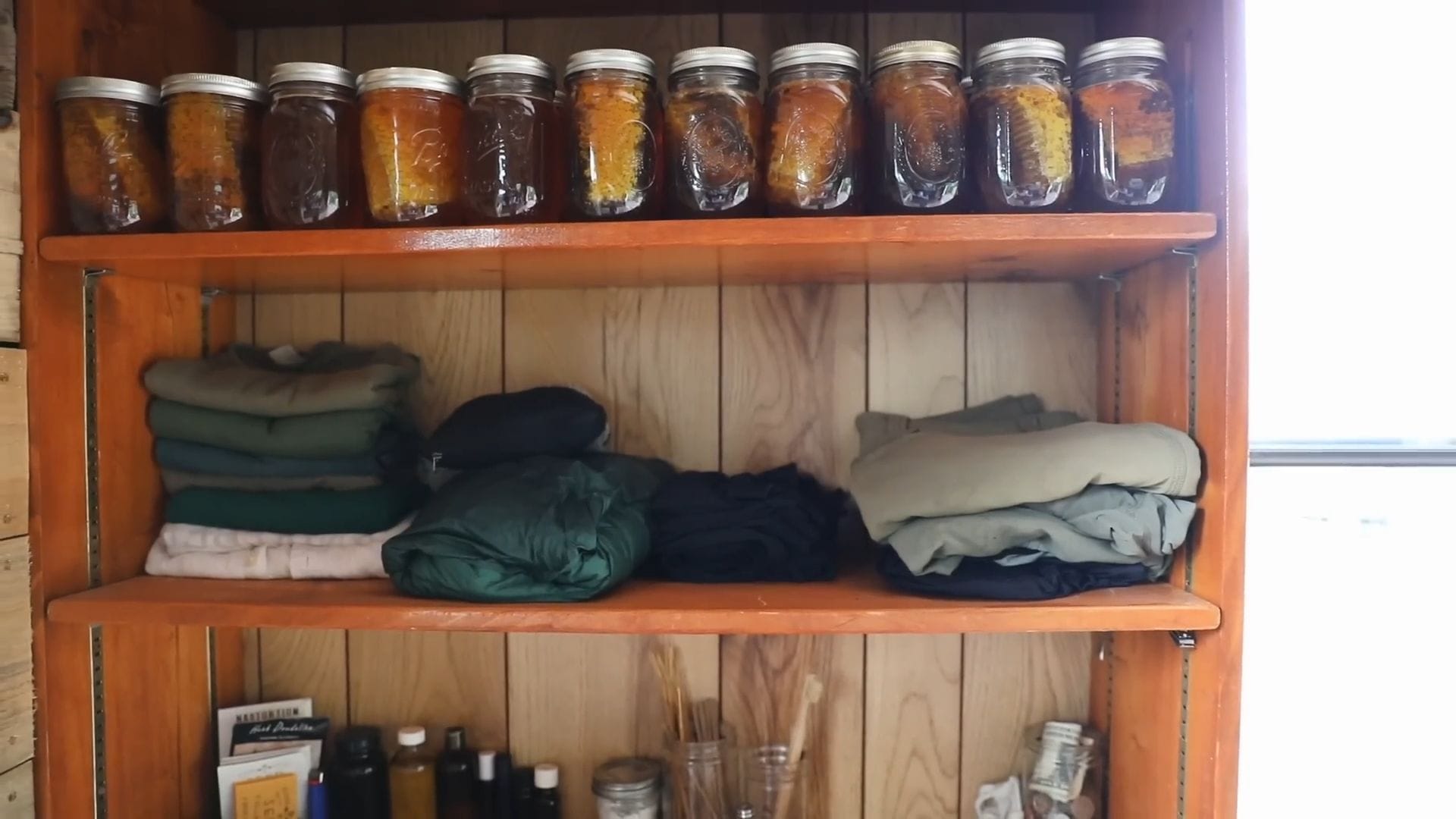
Personal hygiene items remain equally minimal – a bamboo toothbrush, chew stick, essential oils, and dental floss cover all the basics.
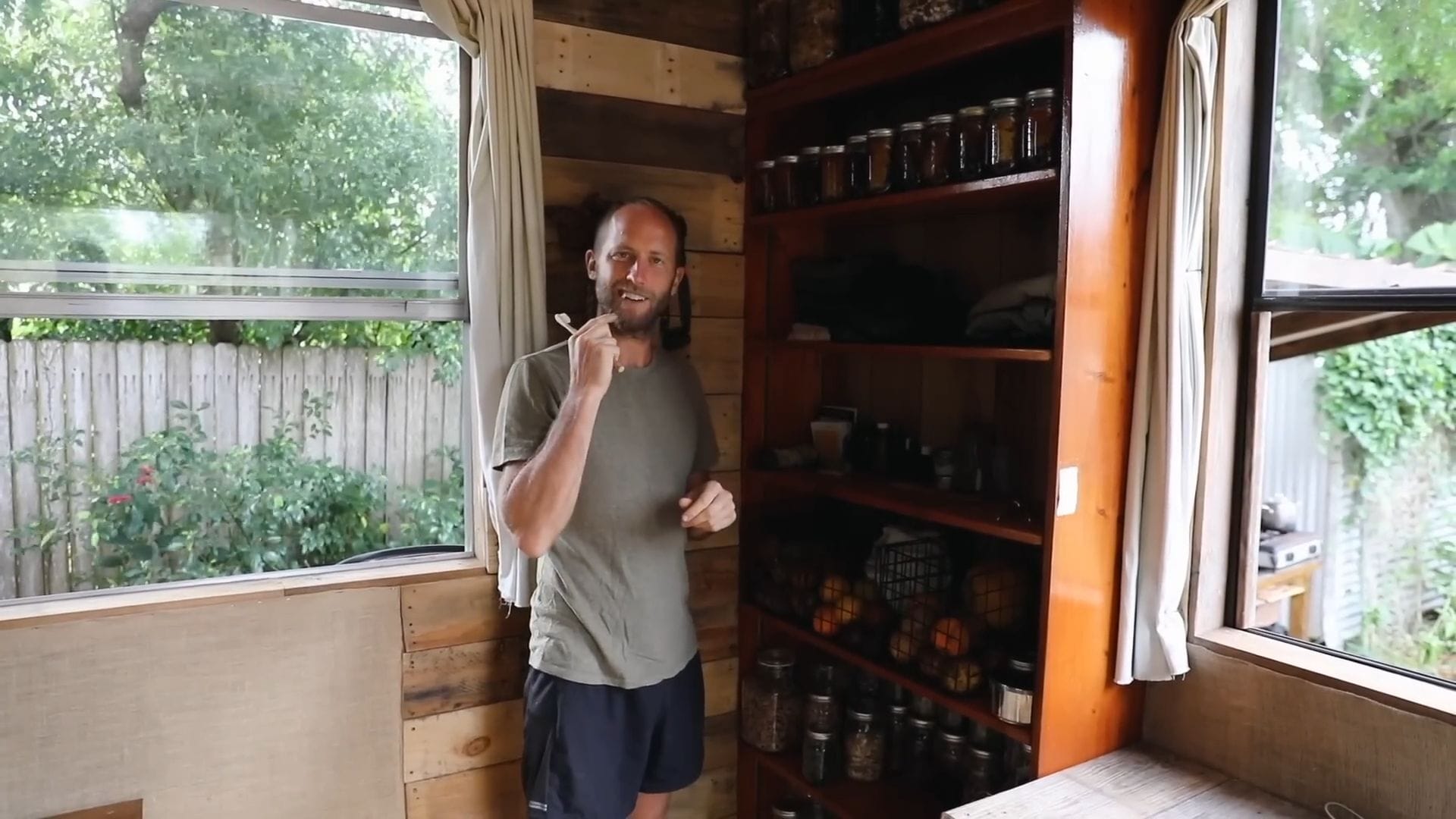
The electrical system represents a thoughtful compromise between sustainability and practicality.
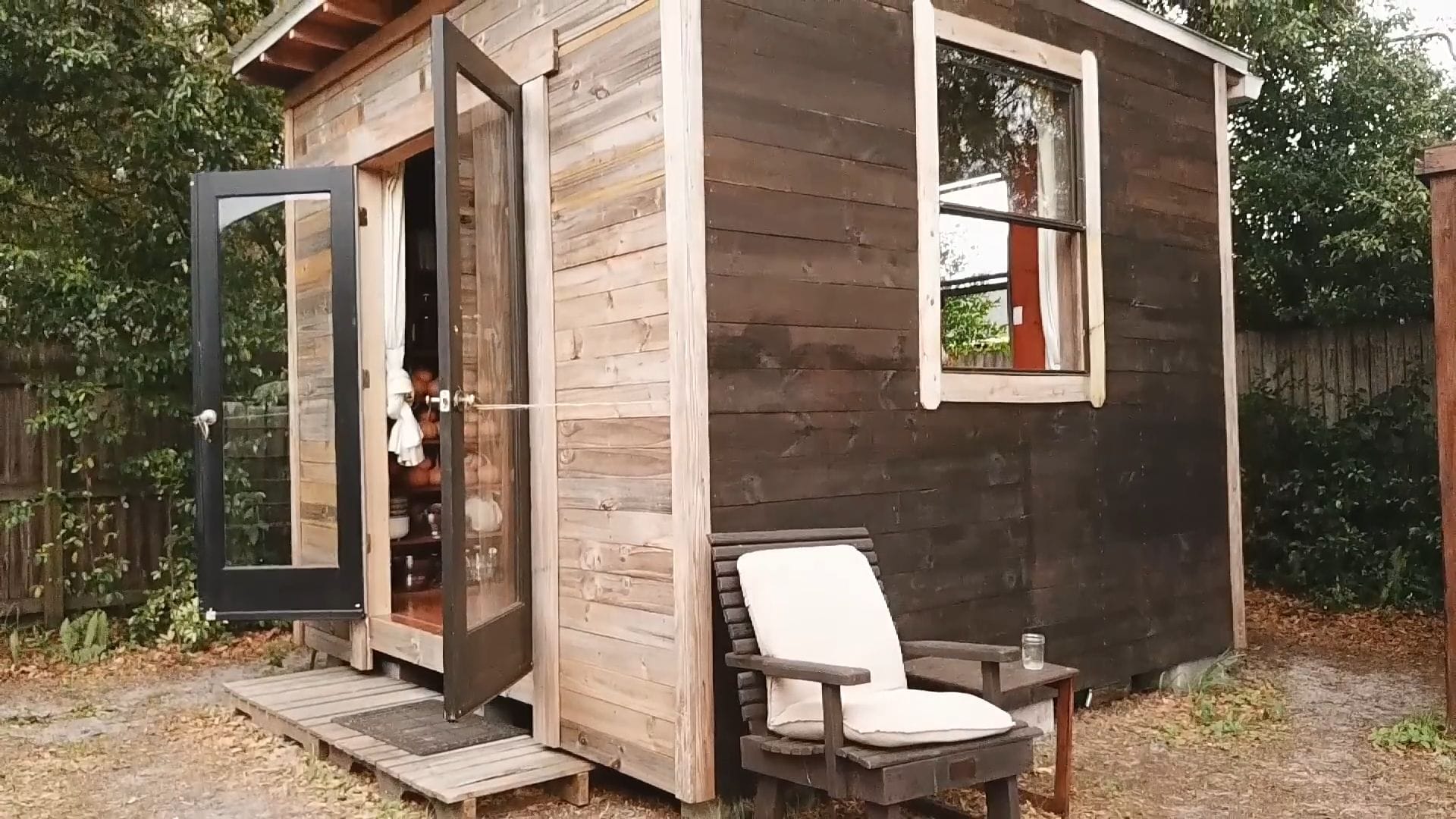
While Rob’s previous tiny house operated completely off-grid with solar panels, this setup connects to municipal electricity primarily to power a crucial deep chest freezer.
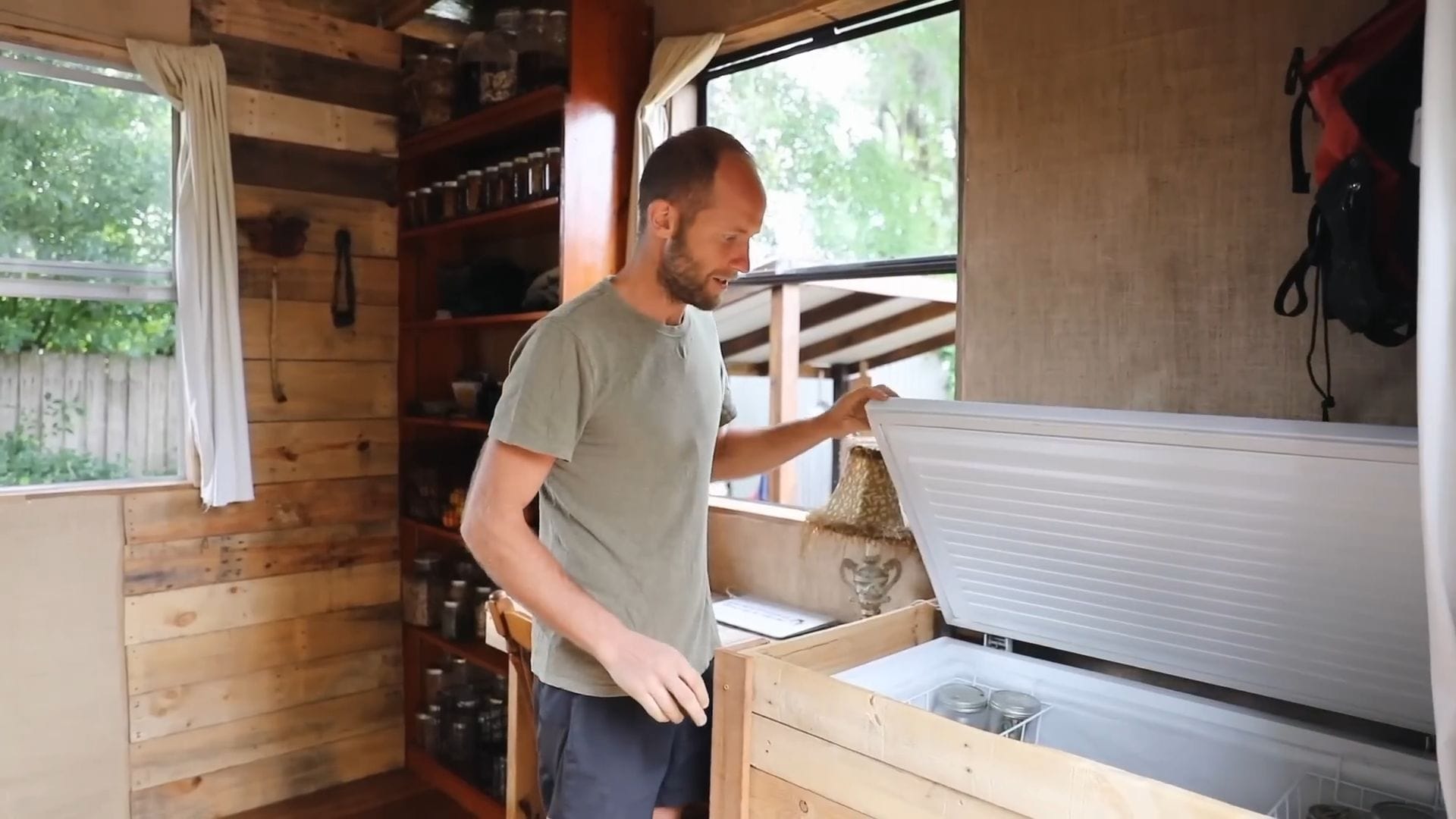
This freezer stores bulk amounts of preserved foods like prickly pear cactus fruit, Roselle, and yuca – one of his staple crops.
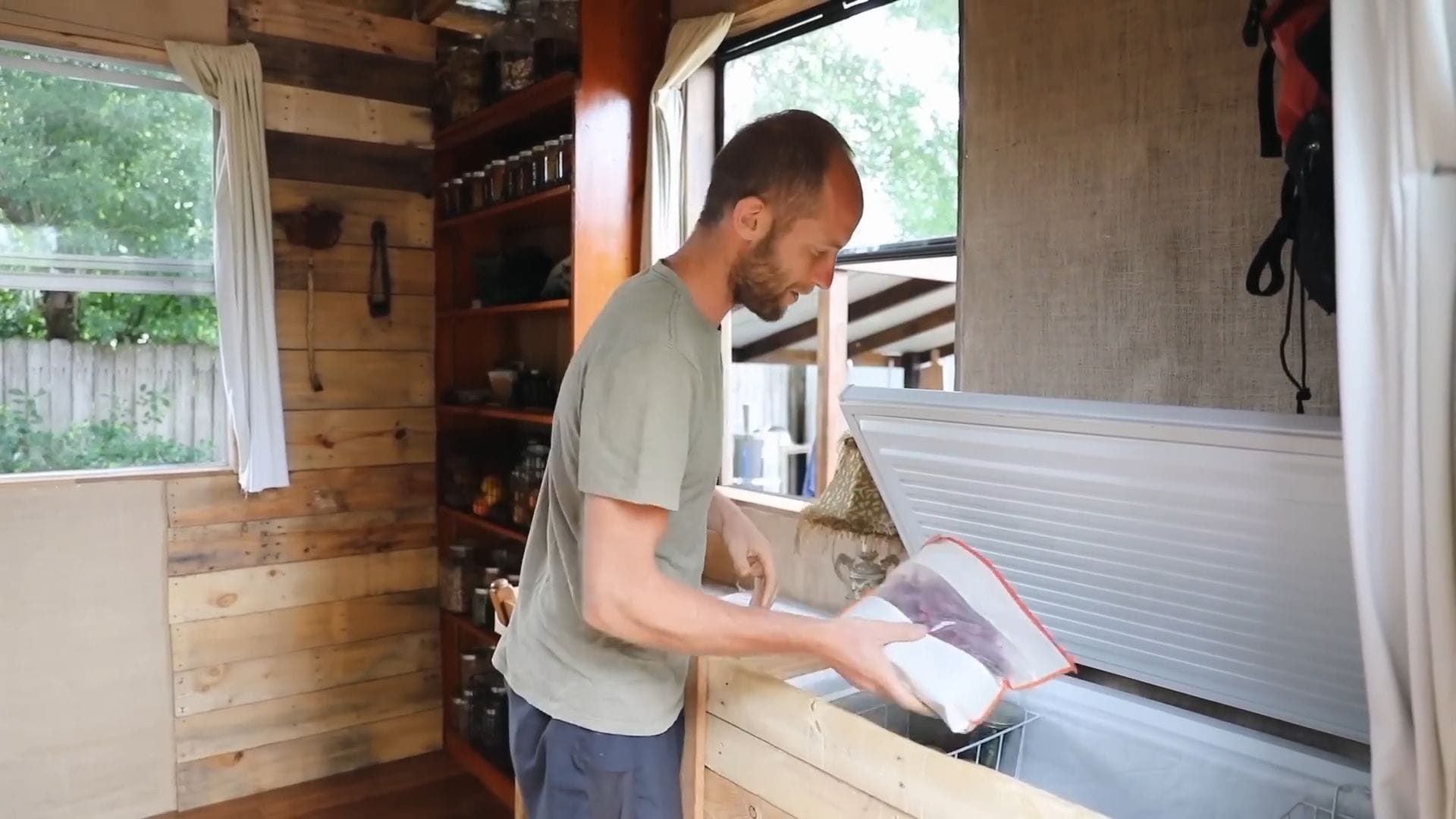
The entire electrical usage costs less than $10 monthly, running through a simple extension cord with just three outlets to minimize consumption.
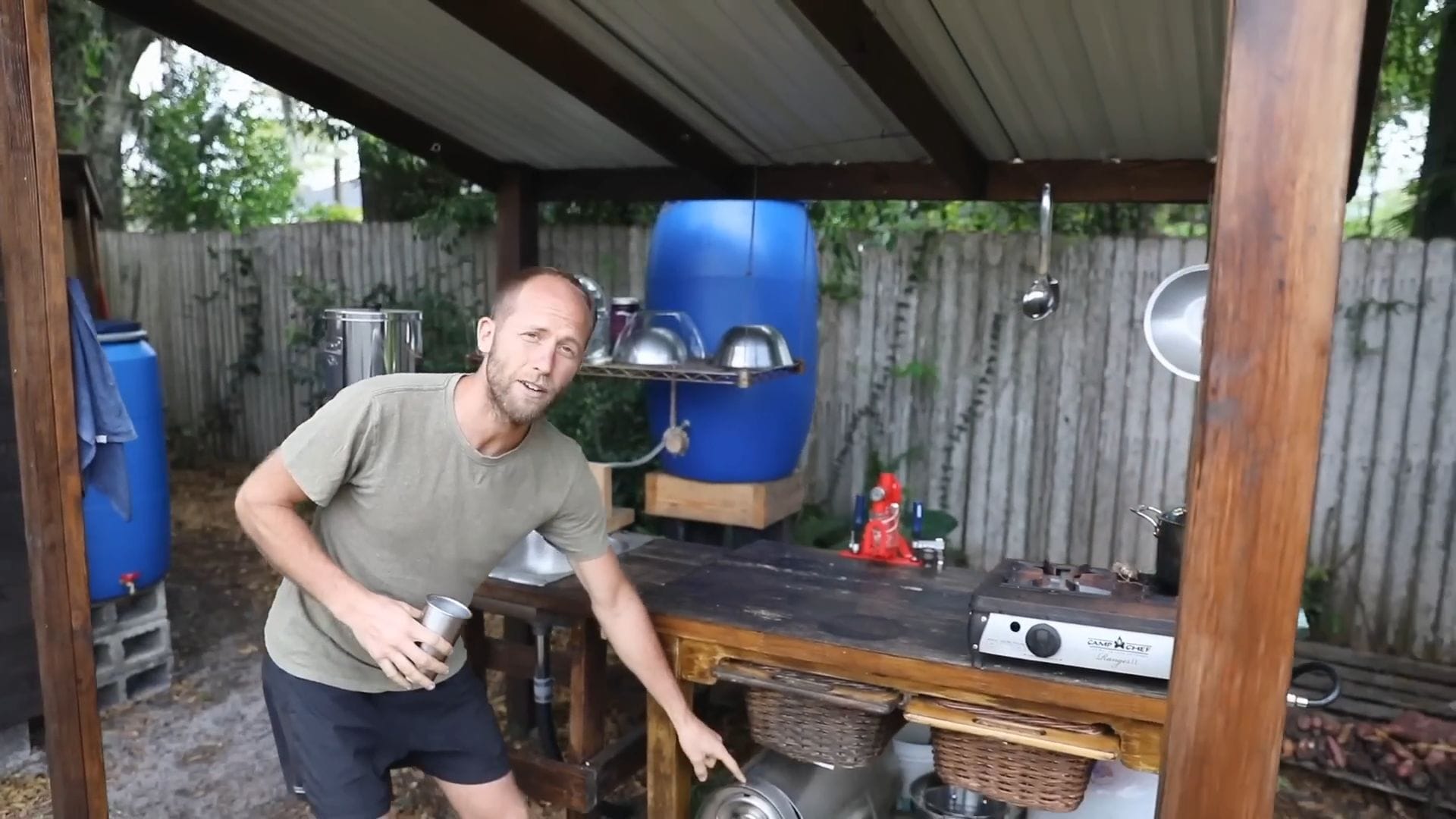
Storage solutions maximize every inch of available space, with the area underneath the elevated bed housing bee boxes, honey supers, and food-related supplies.
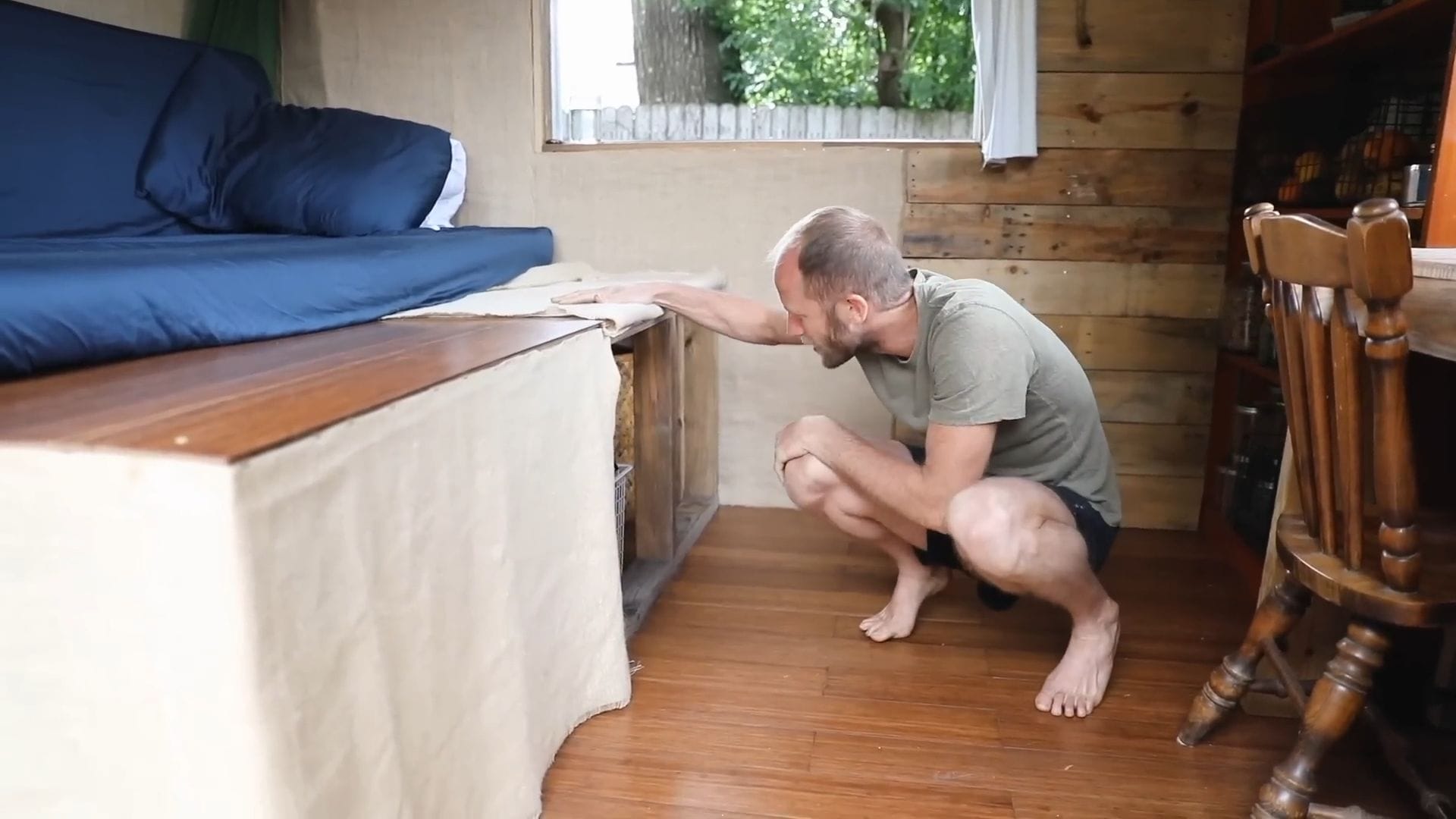
The bed ingeniously converts from a couch during the day to a full sleeping area at night with a simple pull-out mechanism.
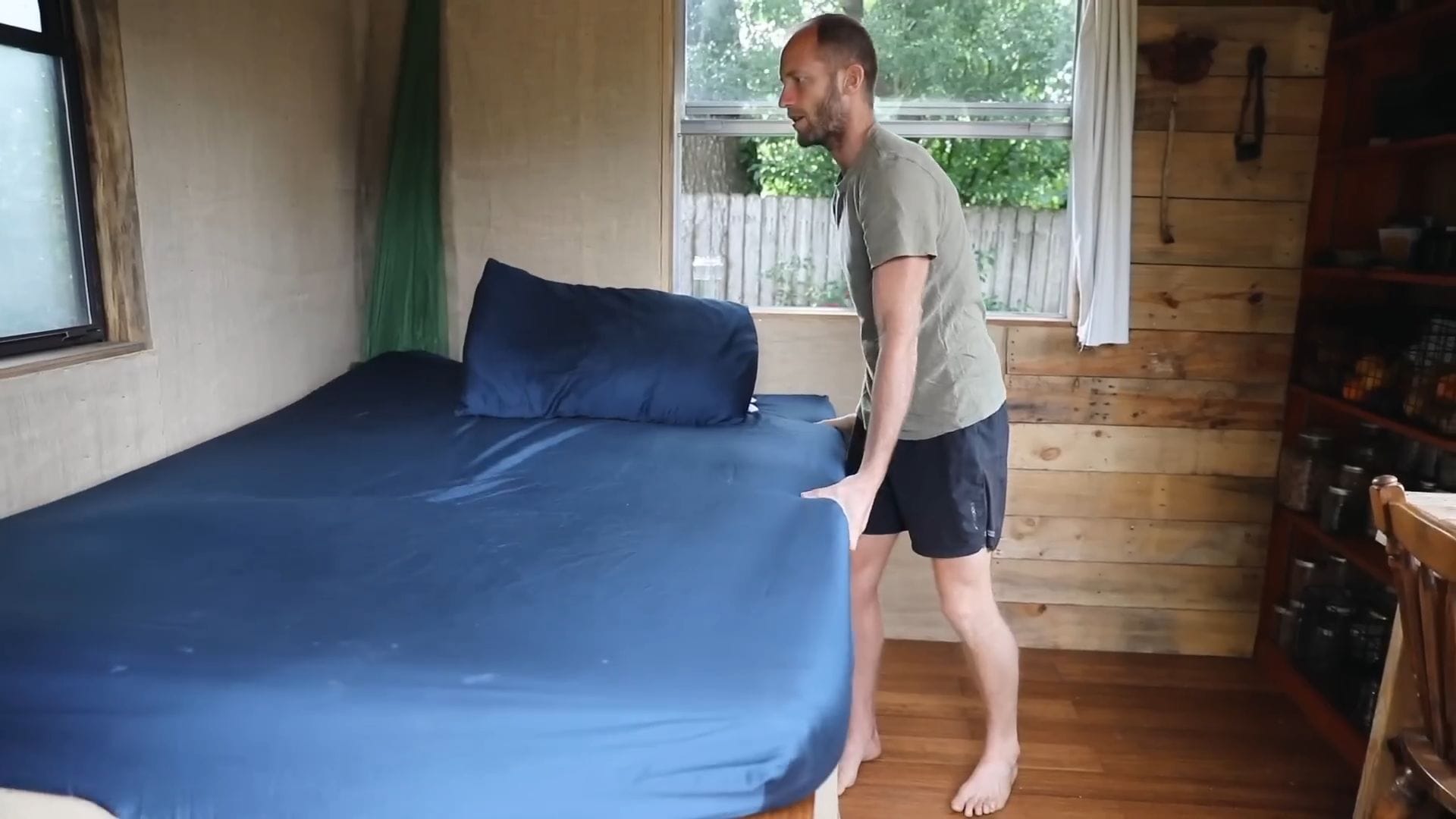
A mosquito net provides essential protection in this screen-free environment, though Rob admits the mosquitos were quite challenging during his first summer.
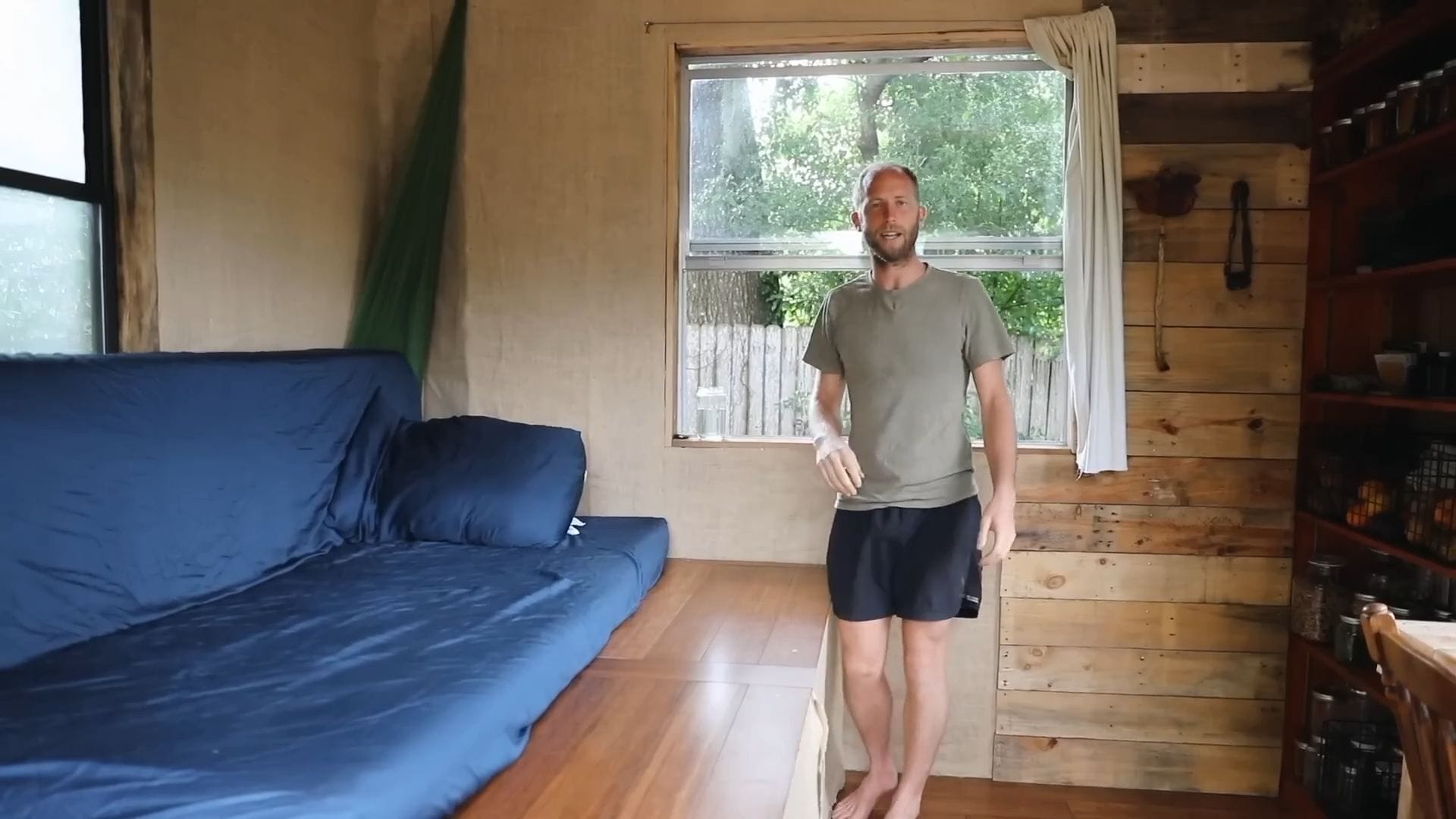
The decision to build on pallets rather than a trailer foundation eliminated the most expensive component while creating a permanent installation that perfectly suits this urban homestead.
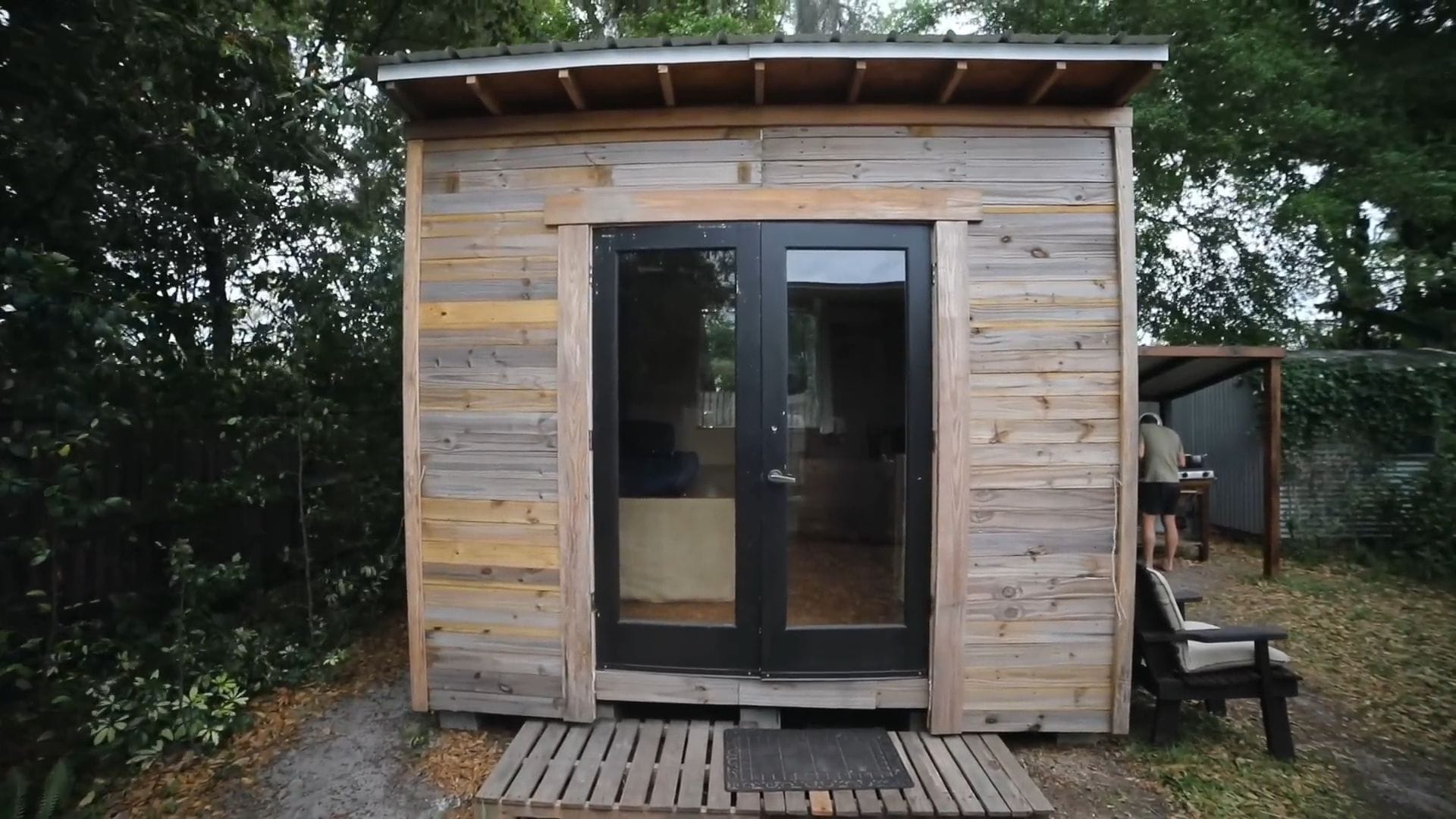
Rob spends most of his time outside the tiny house, whether in the community, the yard, or his outdoor kitchen where the real magic happens.
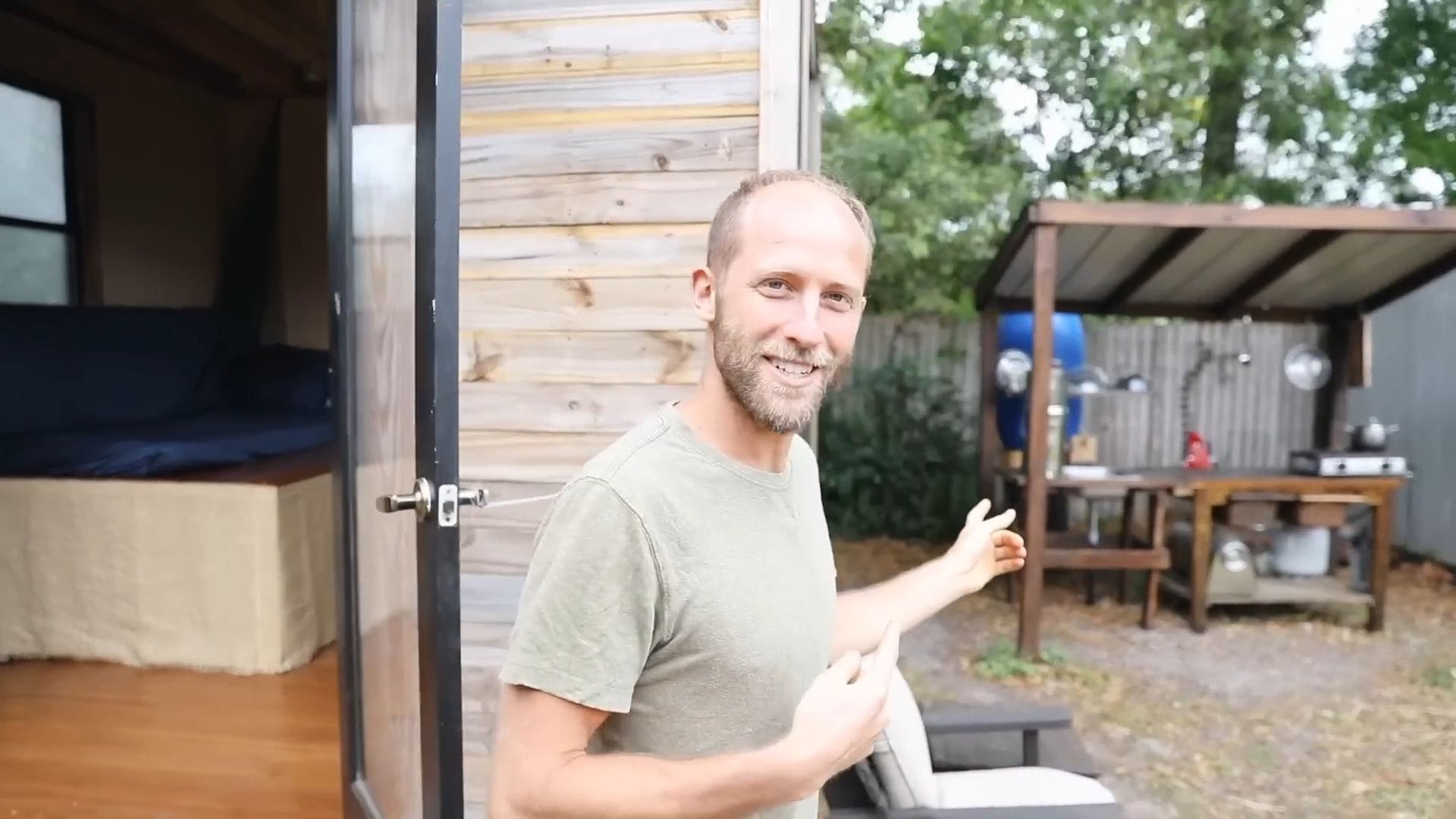
The outdoor kitchen serves as the heart of daily operations, where Rob typically prepares three meals each day using exclusively rainwater.
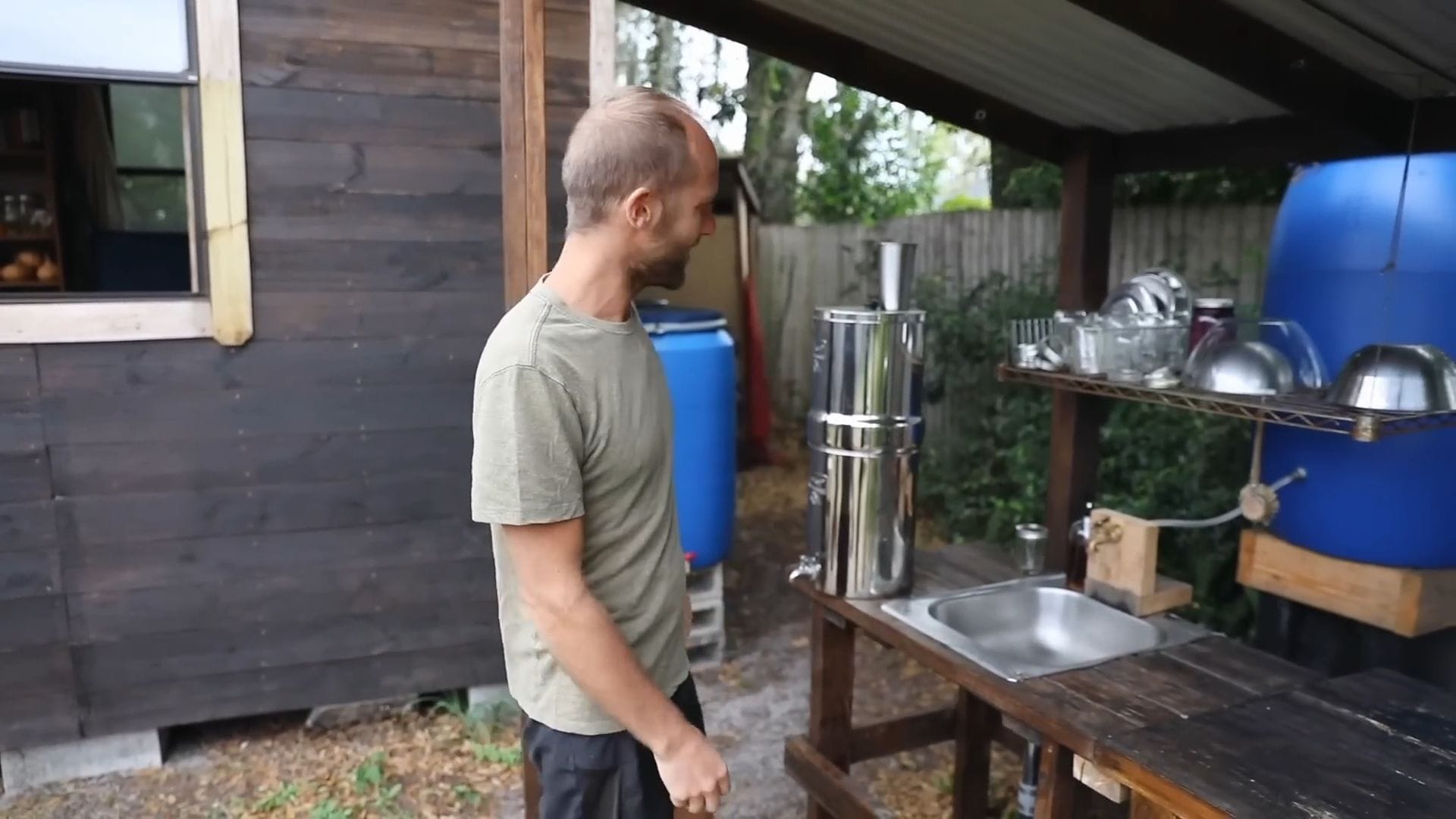
The rainwater collection system begins on the tiny house roof, flowing through a purification system that produces pure, delicious drinking water.
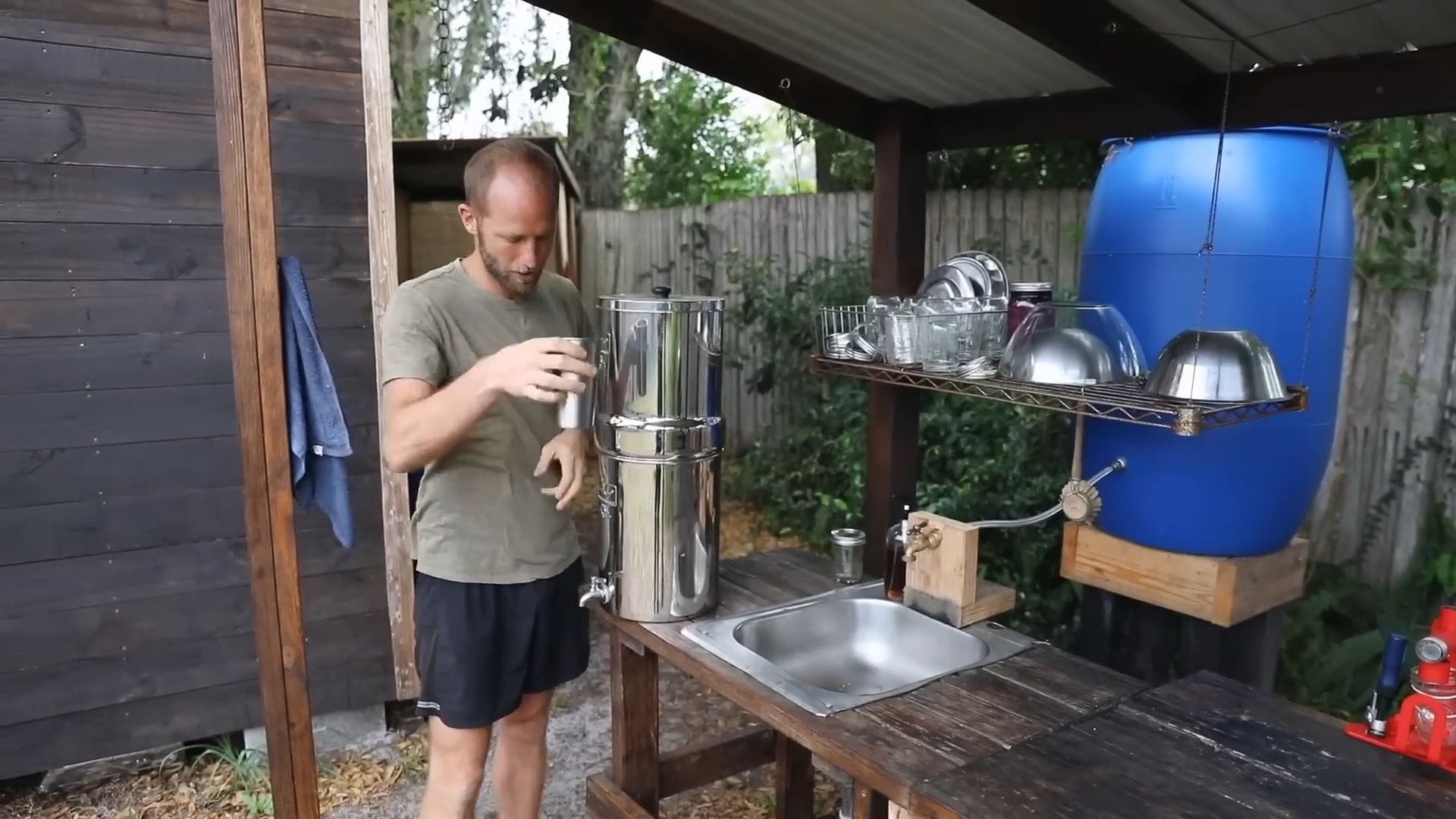
A 275-gallon barrel collects additional water from the main house roof, feeding a gravity-powered sink that requires no electricity.
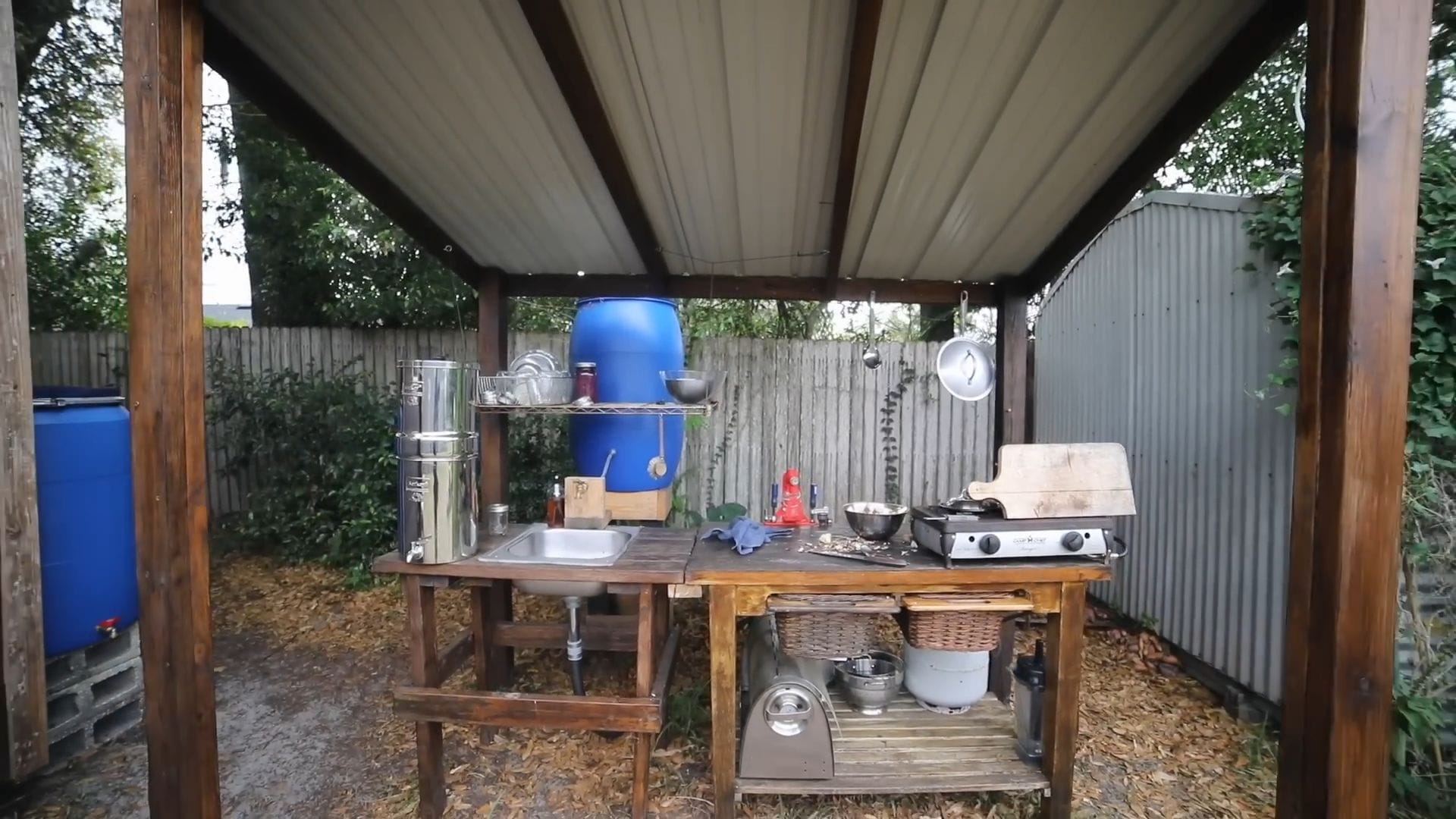
Used water doesn’t waste away into sewers but instead flows directly to water-loving plants like bananas and taro.
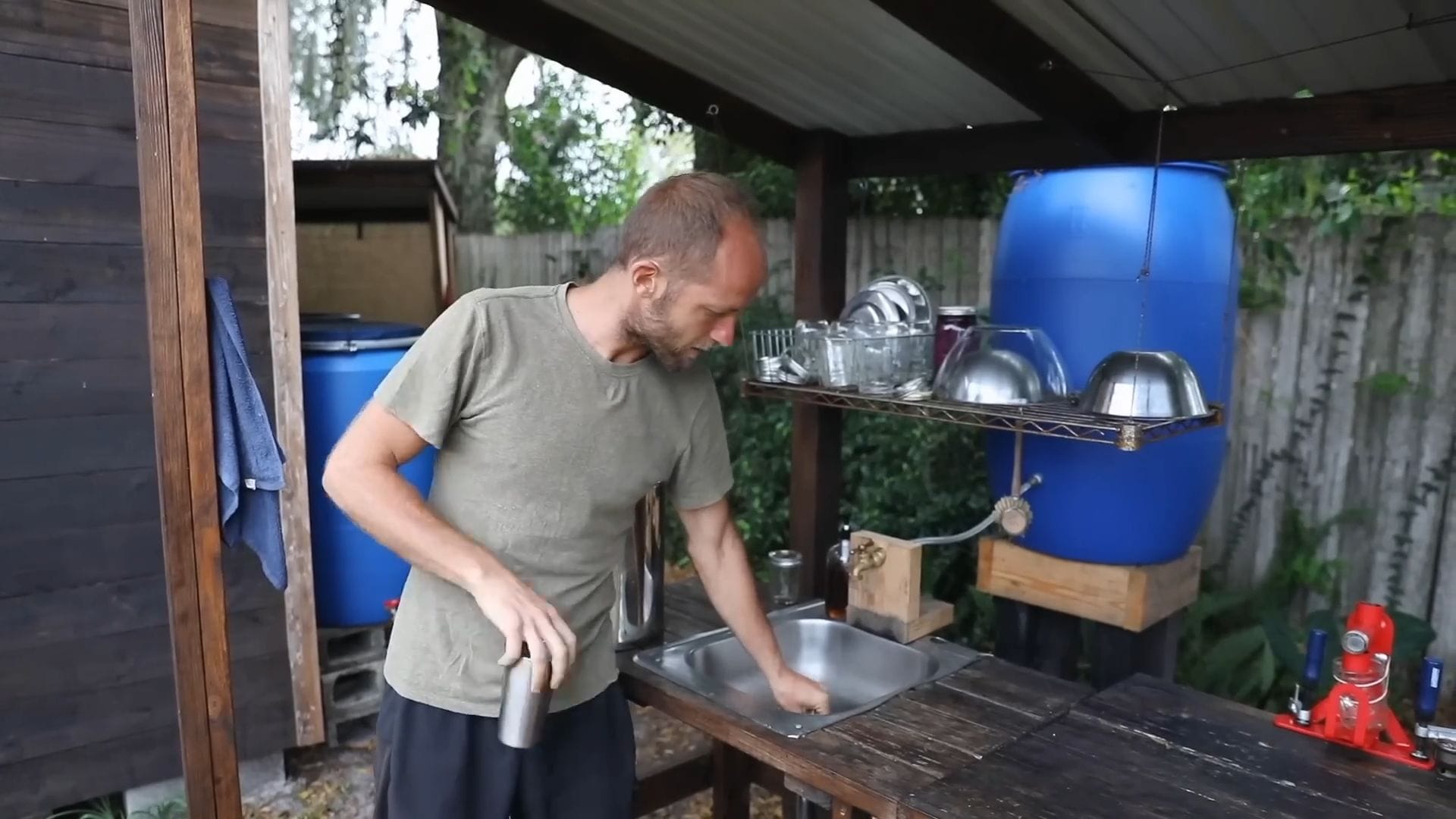
Multiple cooking options provide flexibility and sustainability, starting with a solar oven that sees increased use during Florida’s sunny summer months.

The primary propane stove uses a 20-pound tank for consistent cooking power.

An innovative bio digester converts food waste into methane for cooking fuel, though it doesn’t yet produce enough to eliminate the need for propane.
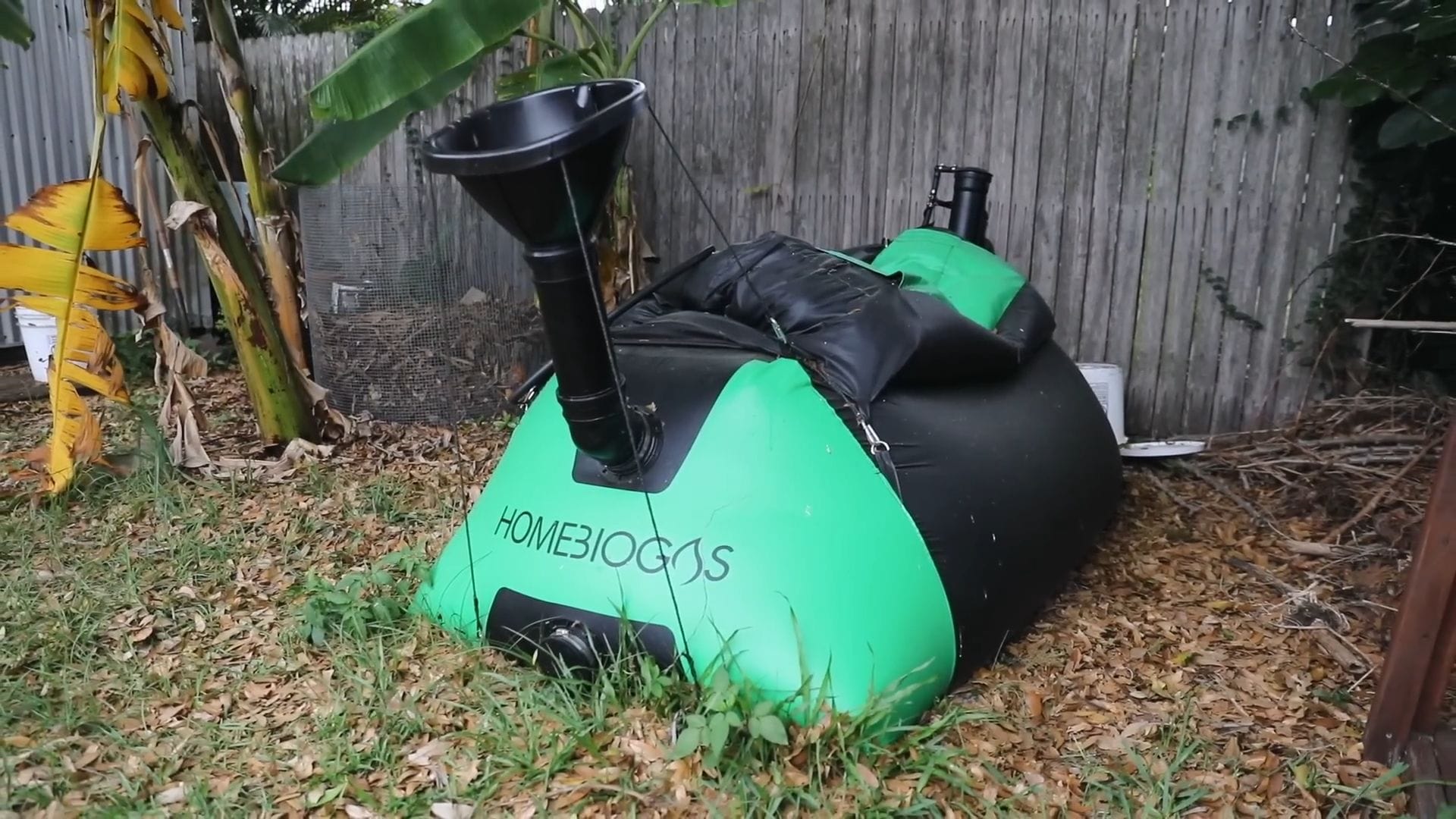
Wood burning provides another option using neighborhood fallen trees and clean heat-treated pallets.
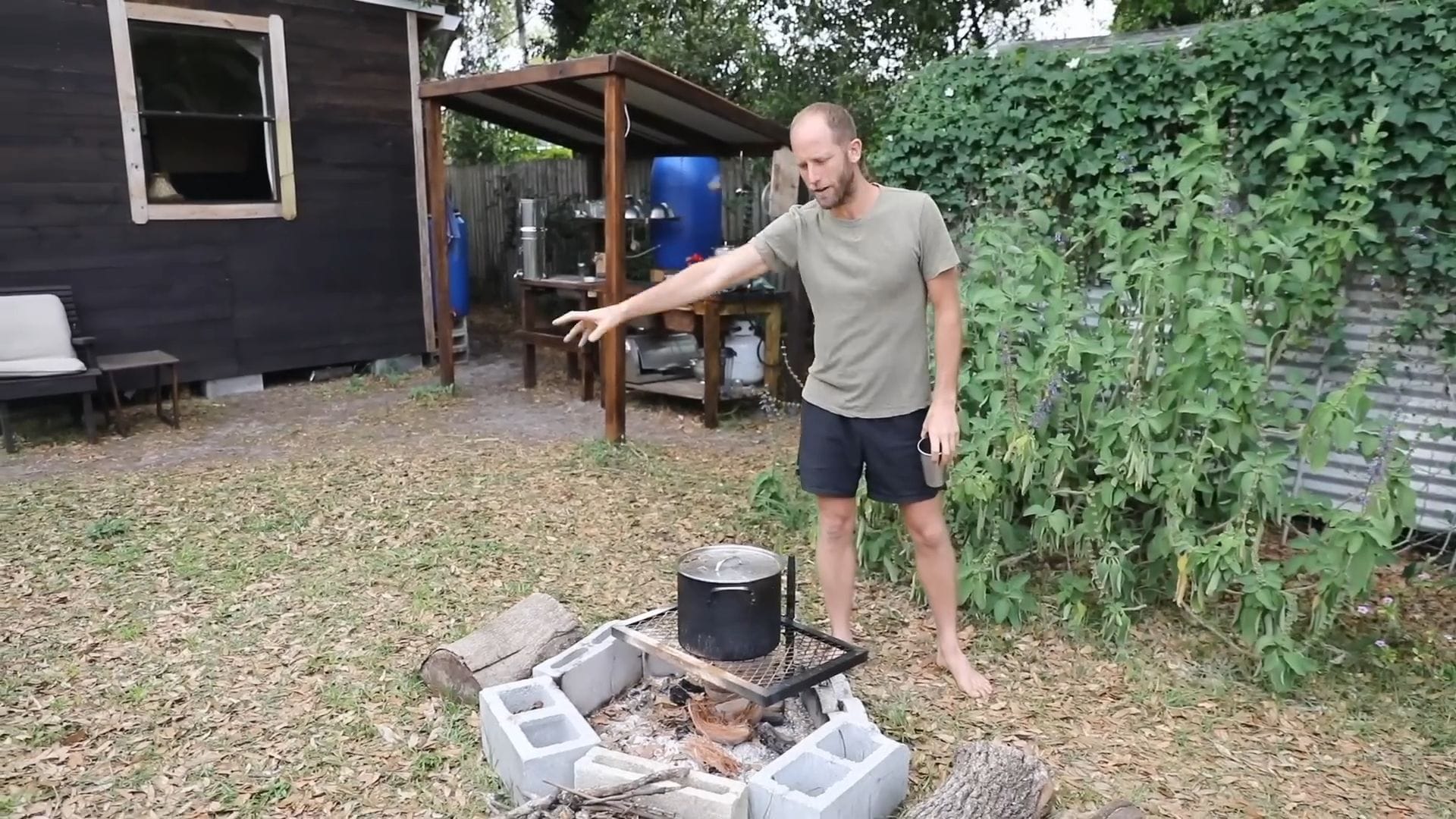
The bio digester operates like a giant stomach, where bacteria break down food waste to create methane that collects in a bladder and travels underground to the stove.
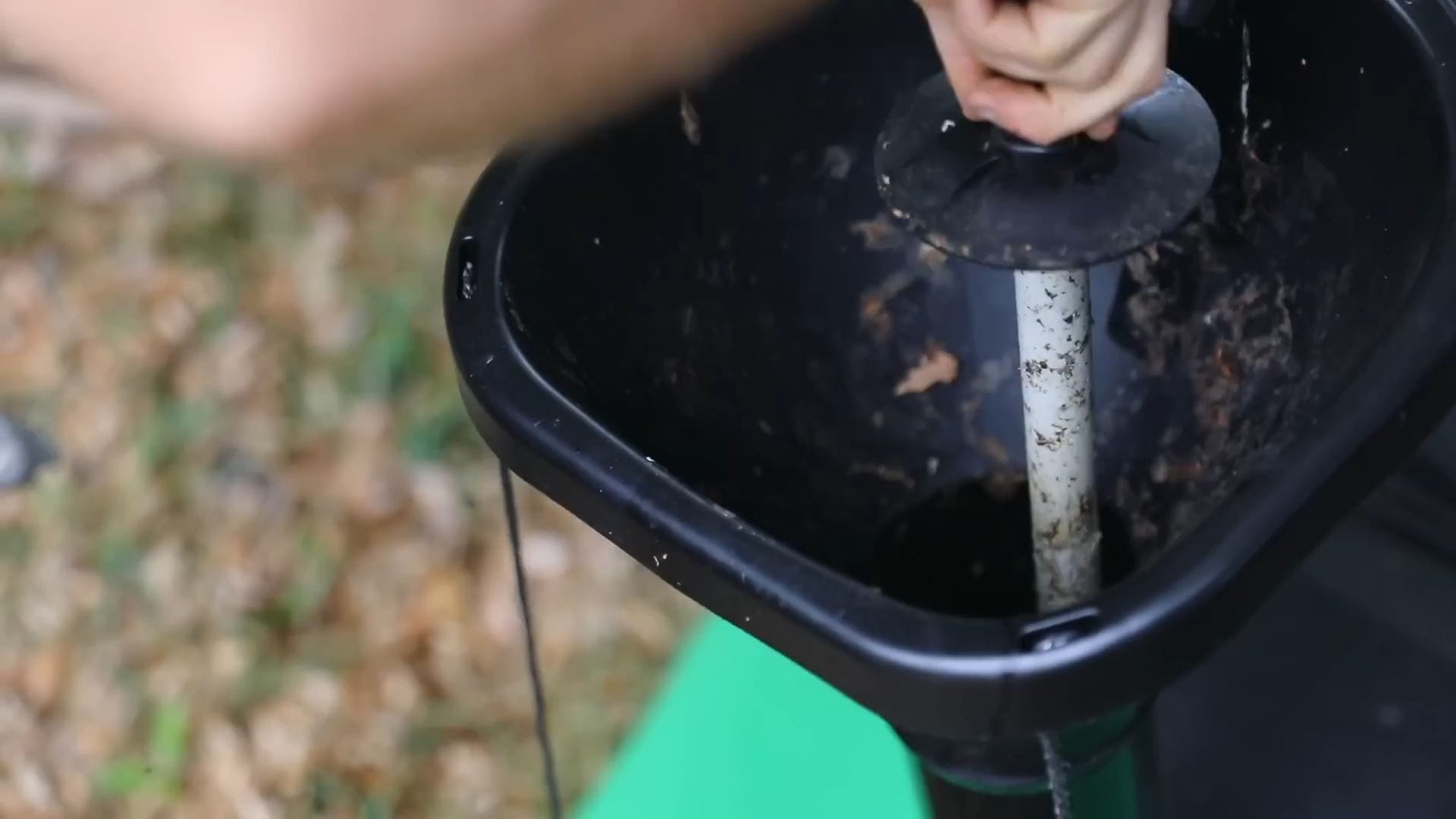
A simple compost bin made from chicken wire handles additional food waste, transforming what would be landfill burden into rich soil for growing more food.
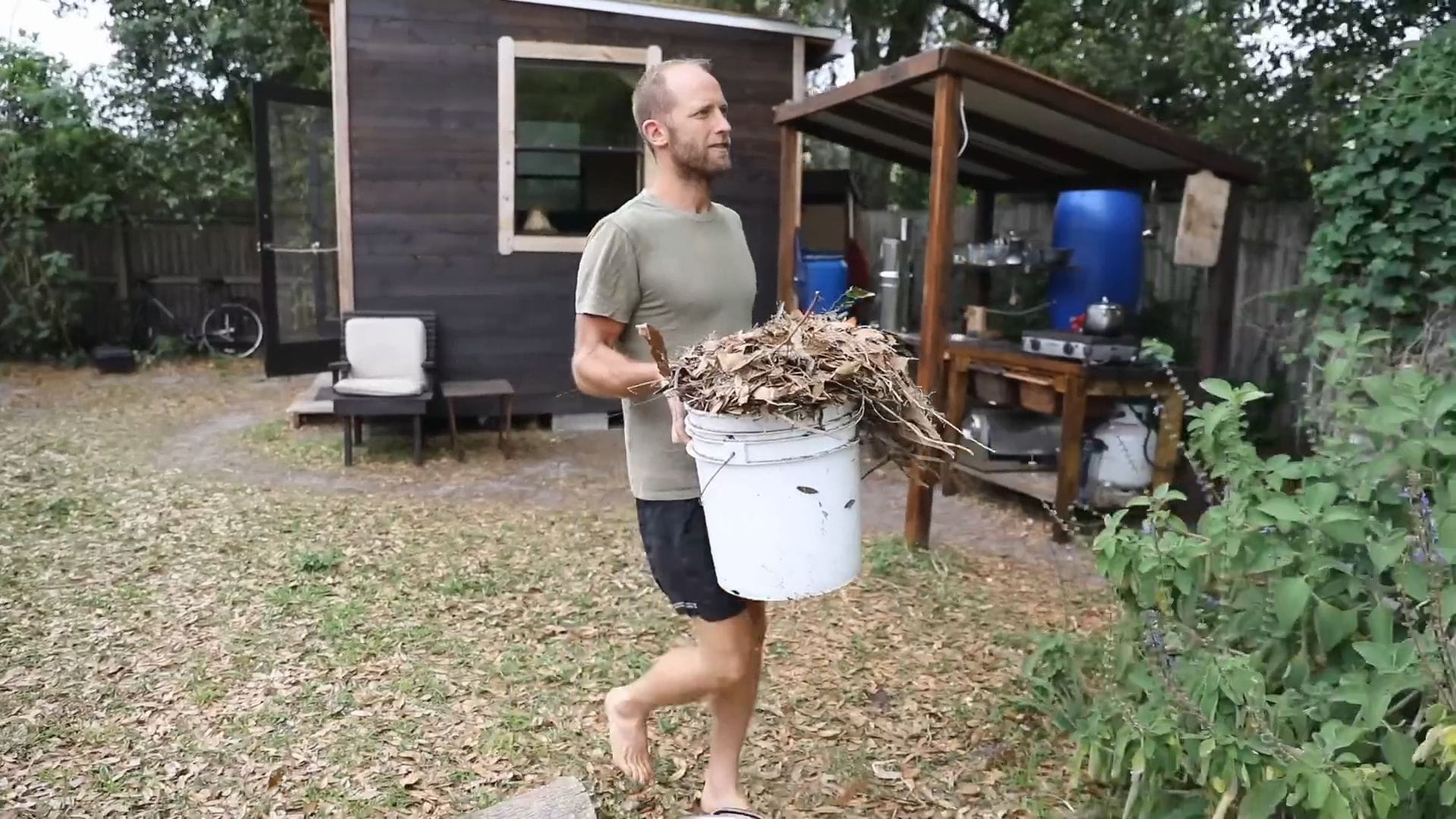
One of the most fascinating features is Rob’s toilet paper plant – a blue spur flower from the mint family that’s incredibly soft and aromatic.
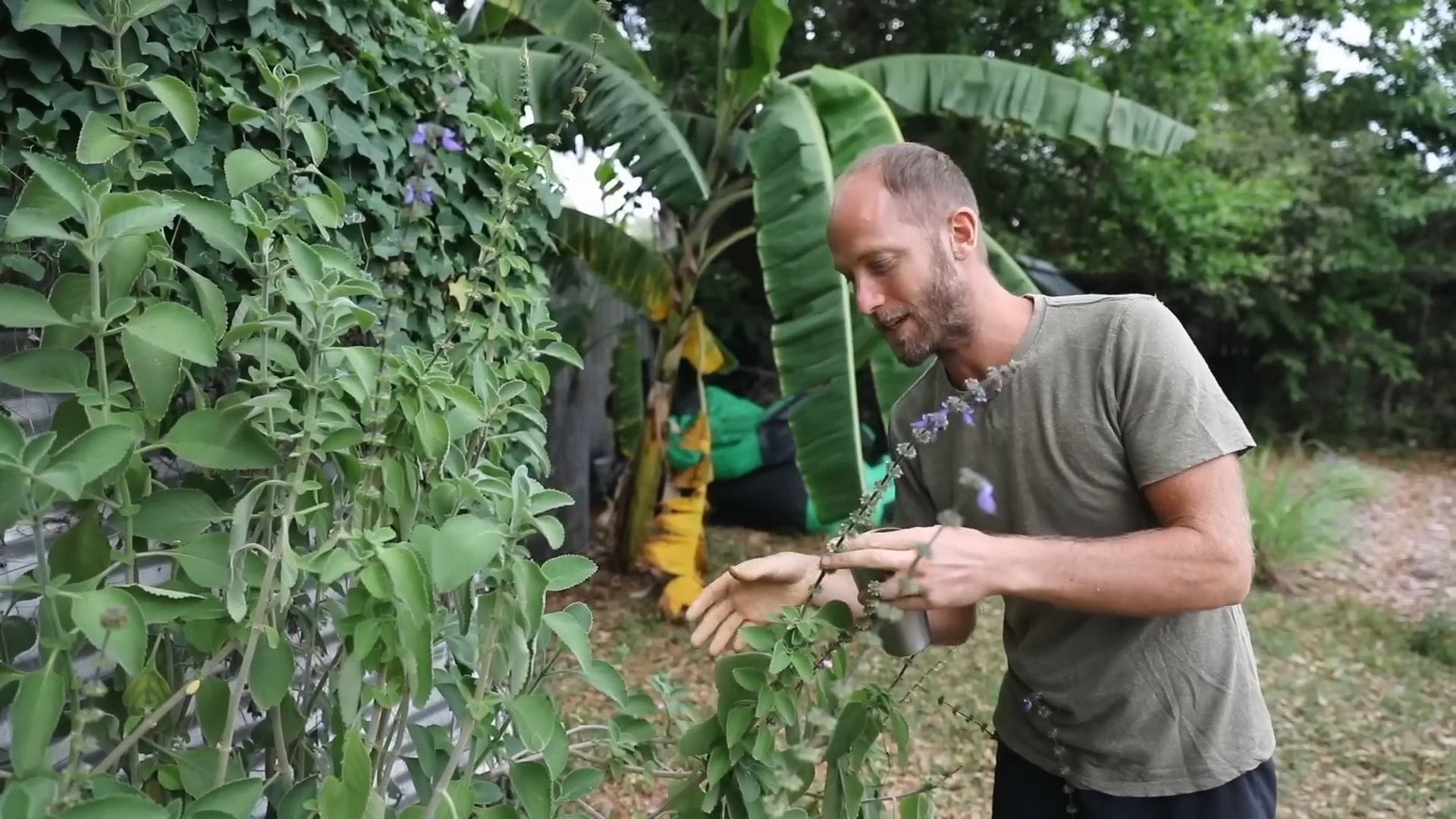
He hasn’t purchased toilet paper in five years, simply harvesting leaves that remain soft and strong for days after picking.
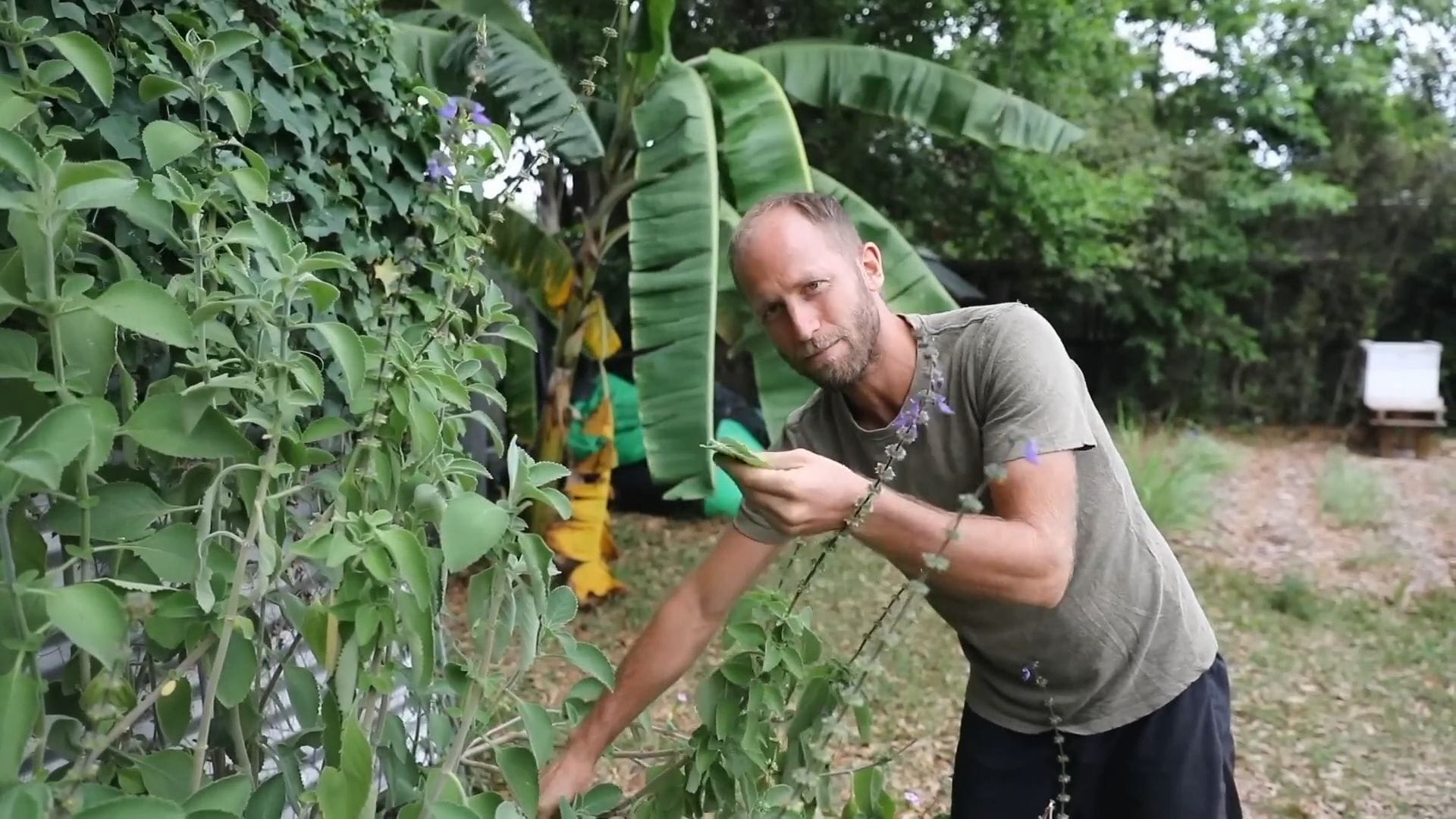
The compost toilet system exemplifies Rob’s philosophy of turning waste into resources rather than burdening others with disposal.
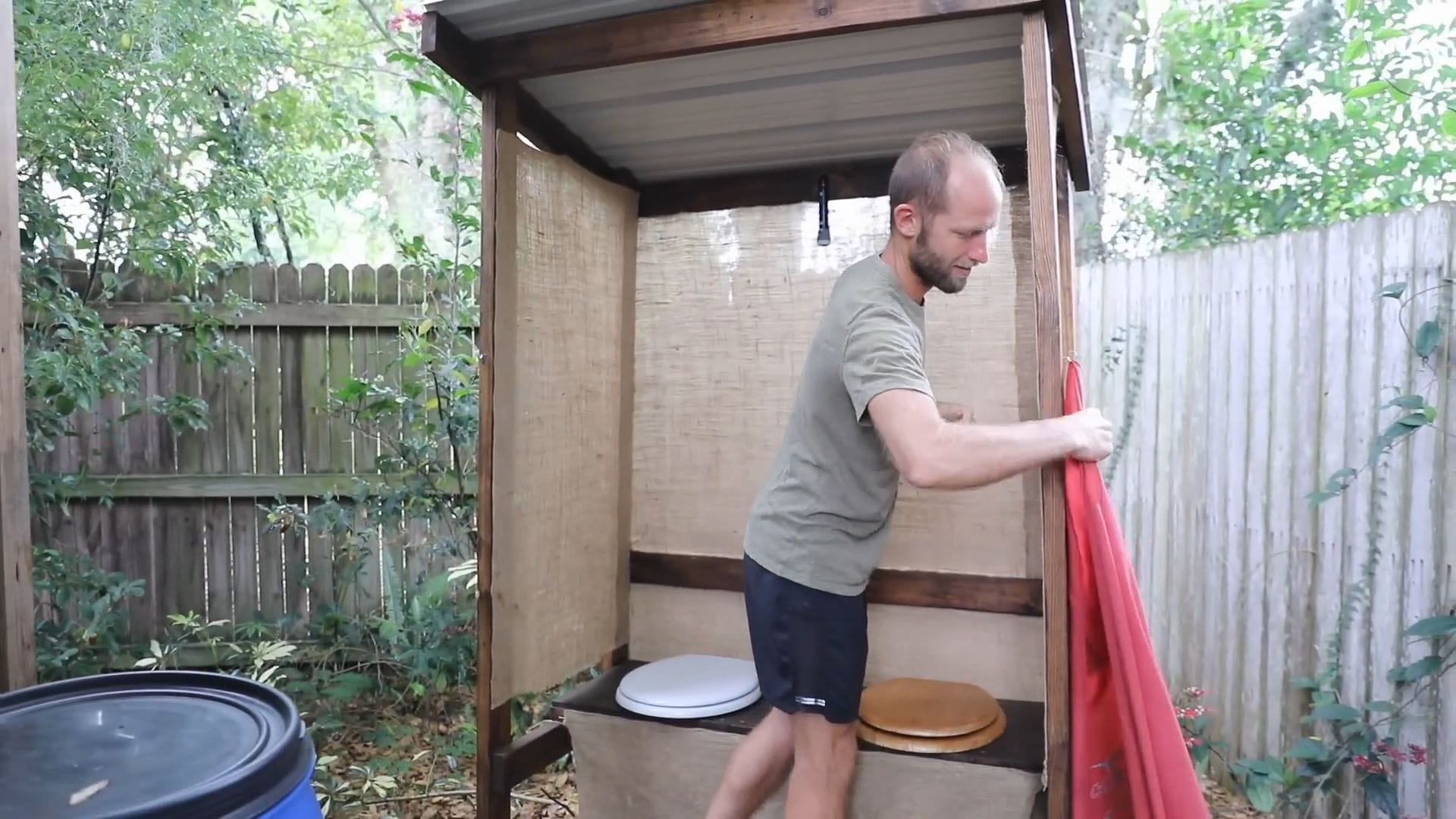
The simple design separates urine, which provides nitrogen for fruit trees and bushes when diluted with water.
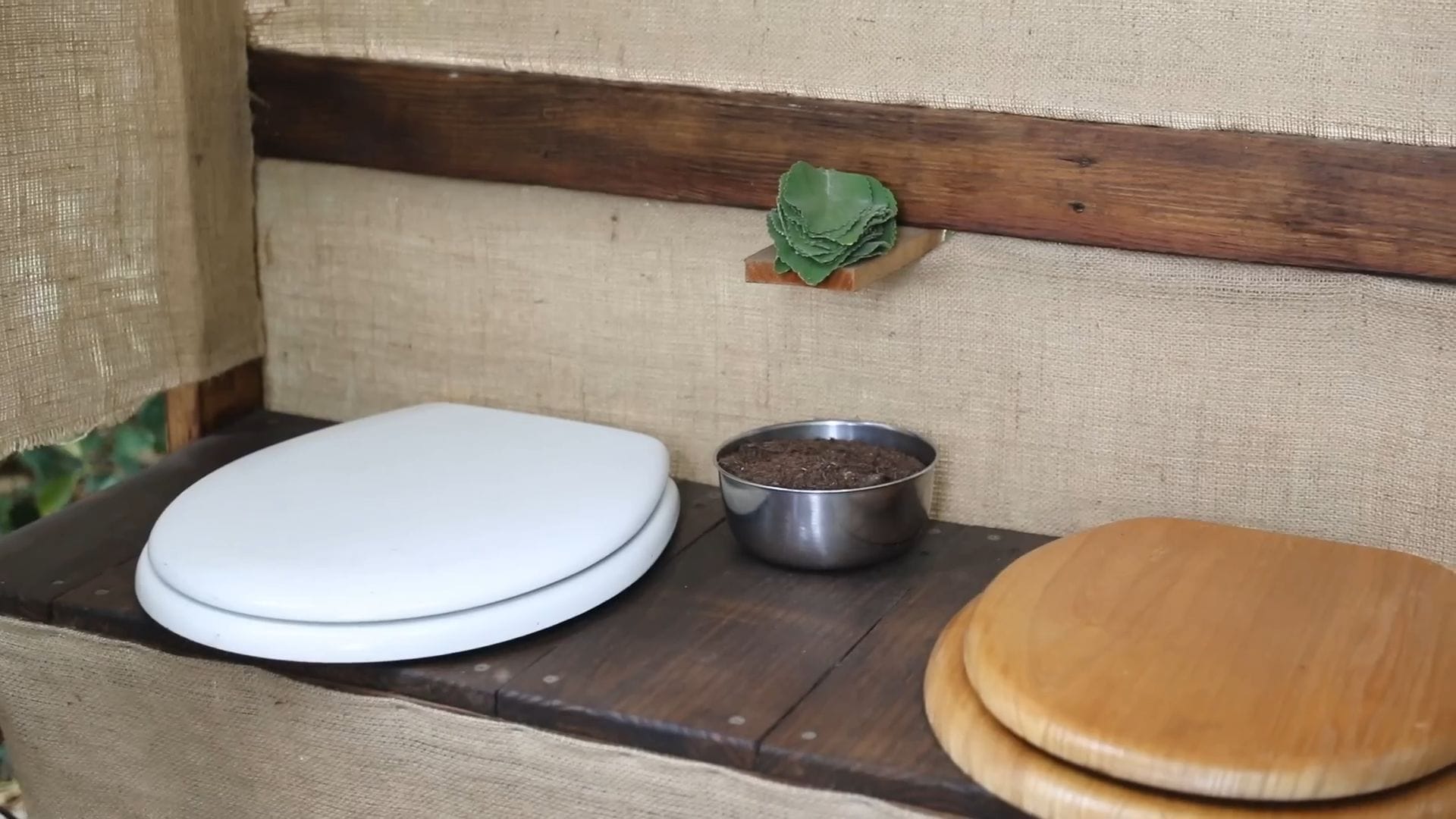
Solid waste gets covered with sawdust in a 5-gallon bucket system, then composted for a full year before being used as fertilizer for fruit trees.
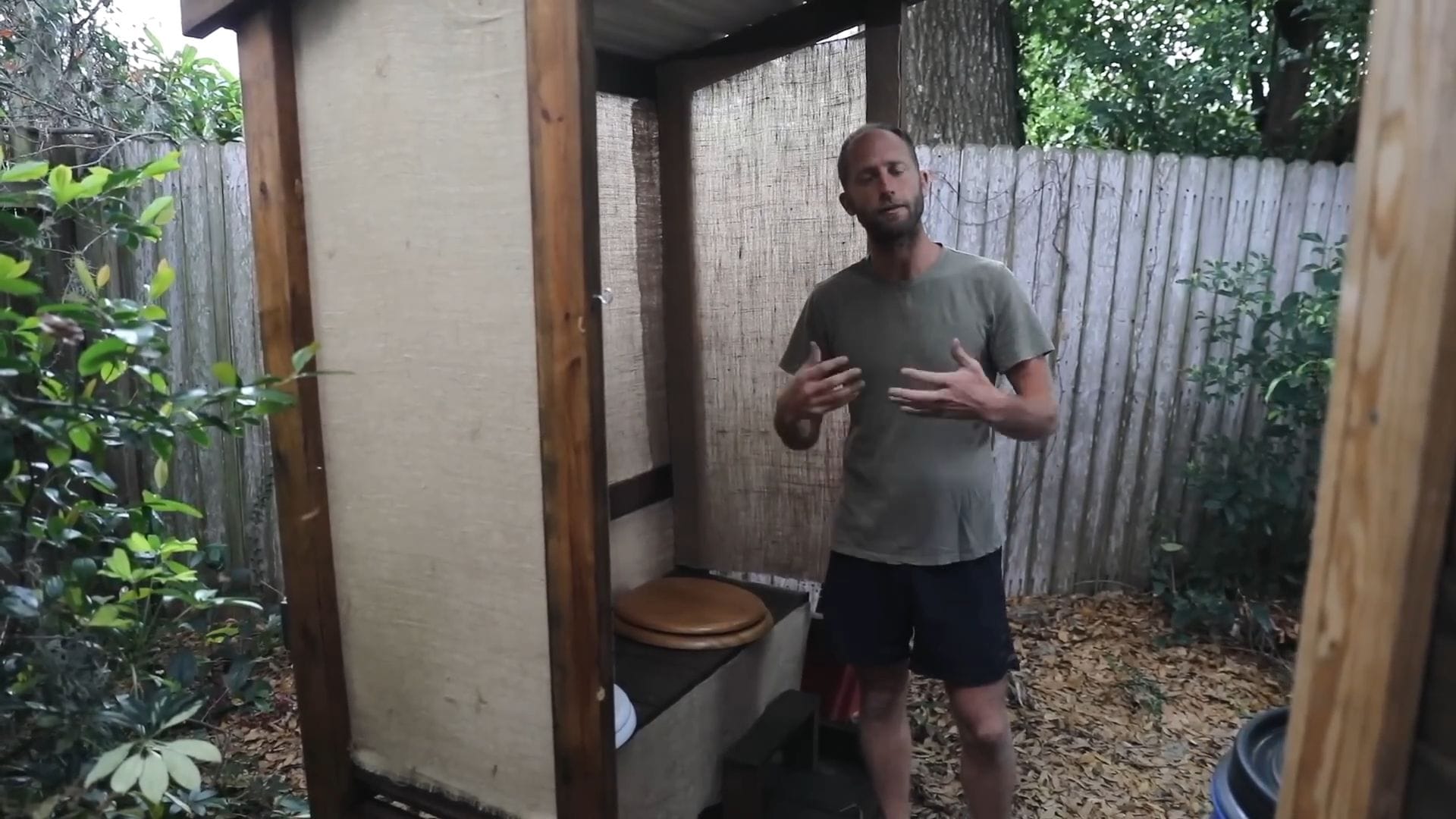
This entire bathroom setup cost just $30-40 using mostly leftover materials from the house construction.
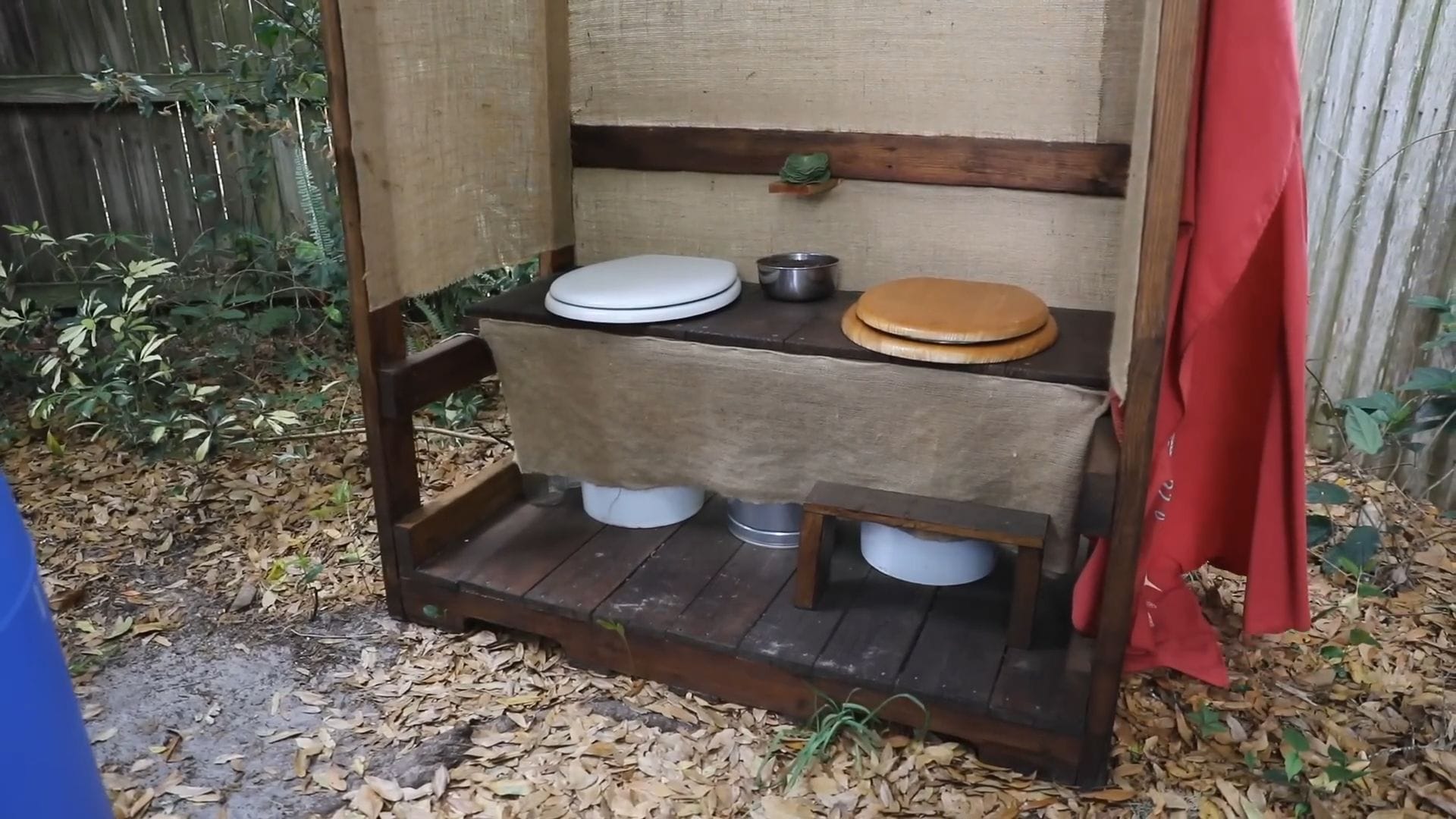
The rainwater shower represents Rob’s favorite way to clean up, utilizing another 275-gallon tote positioned for maximum collection from the main house.
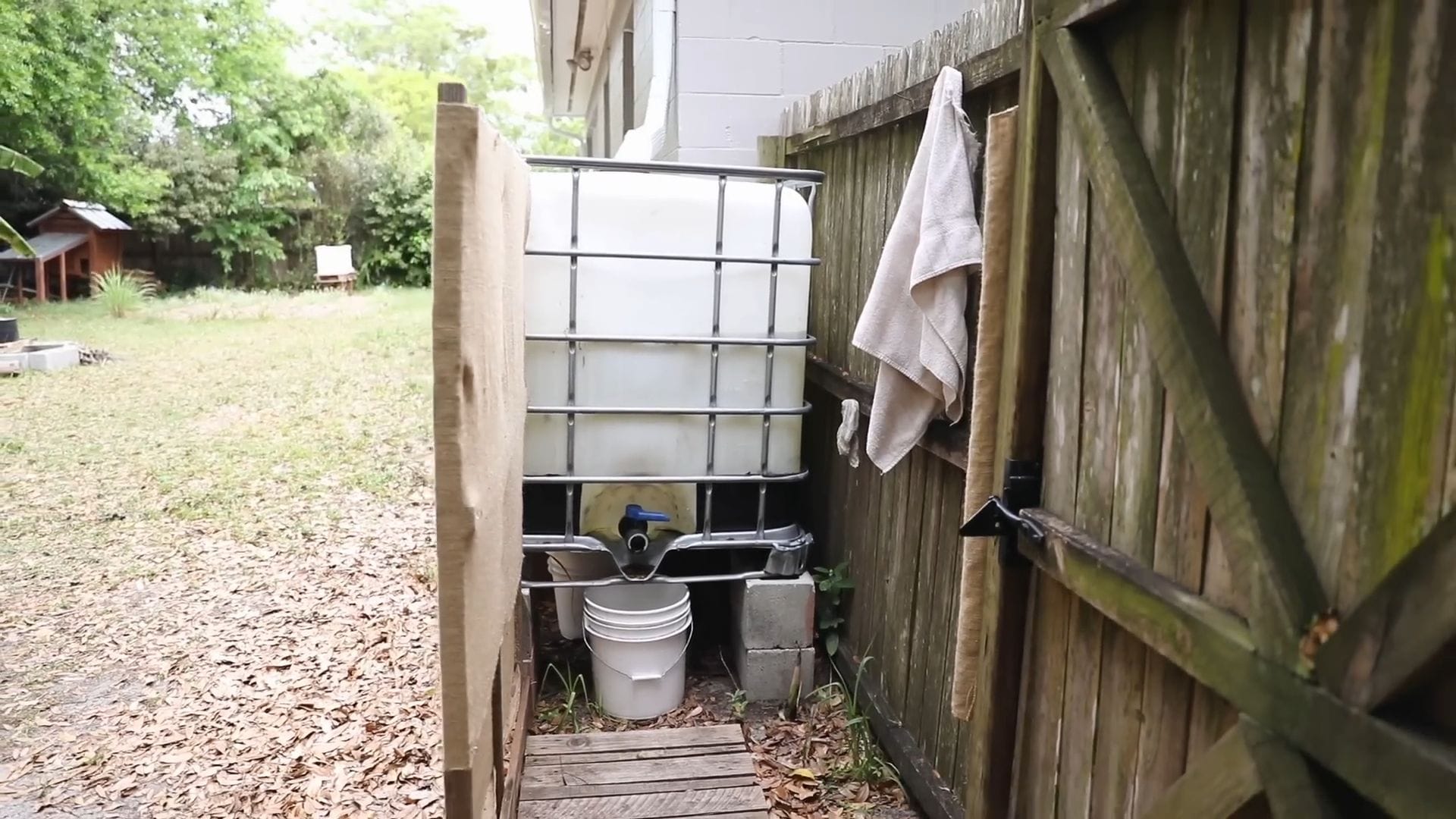
This system eliminates any concept of wasting water – it simply slows the natural journey from sky to ground while watering a newly planted banana tree.
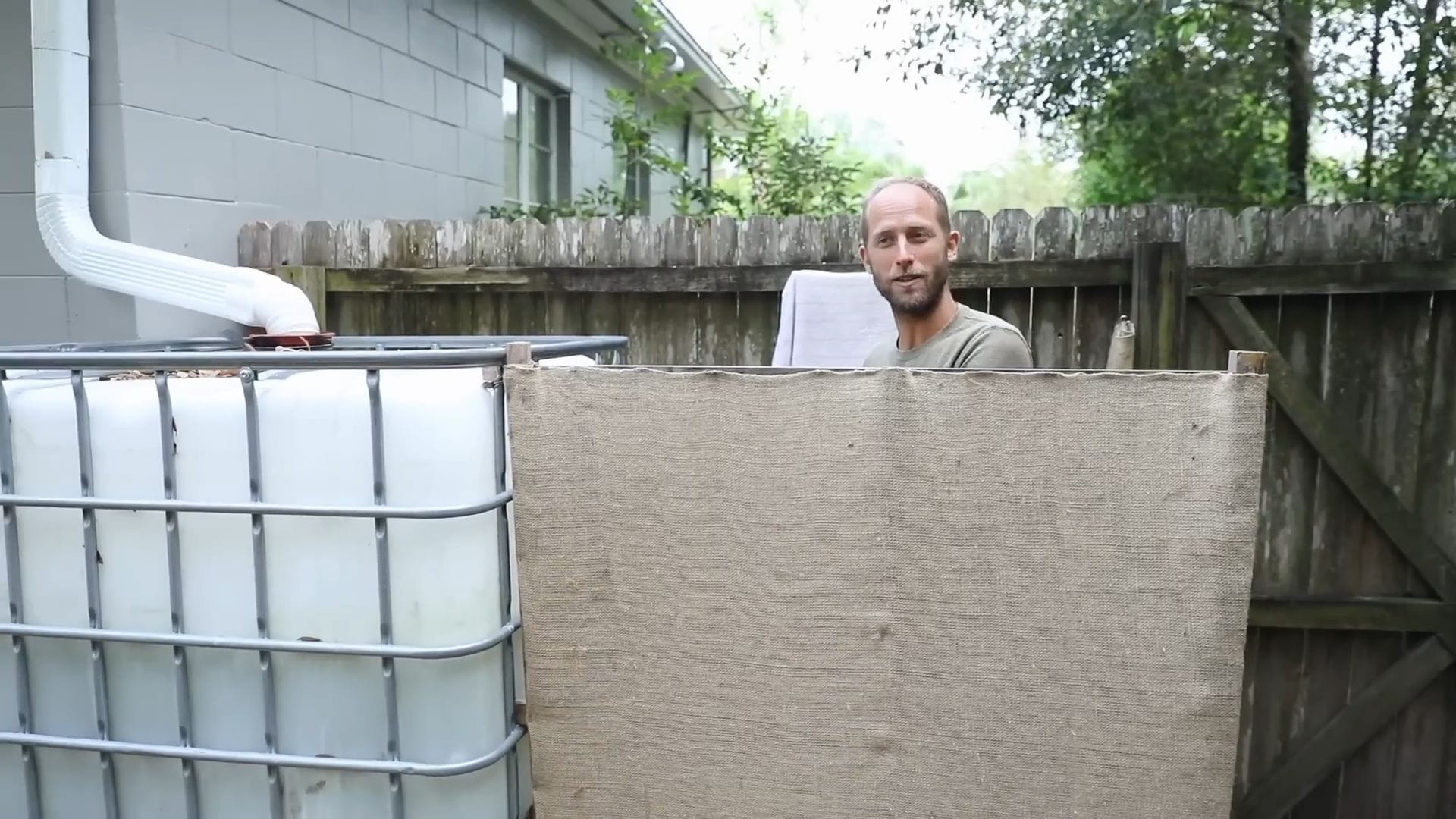
Transportation needs are met entirely by bicycle, equipped with baskets and a 300-pound capacity trailer that has supported six years of car-free living.
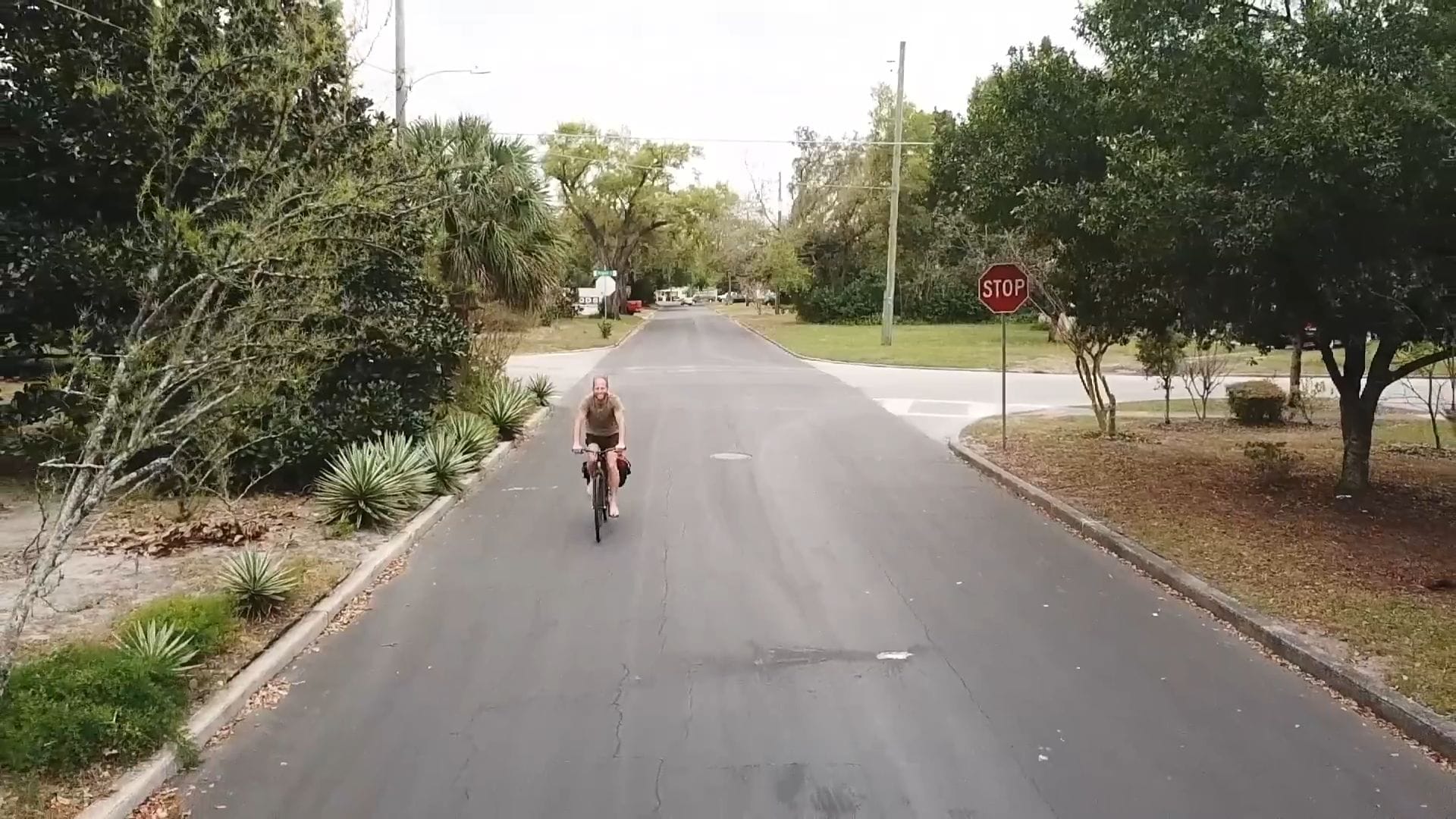
The entire homestead operates through a brilliant work exchange arrangement that benefits everyone involved.
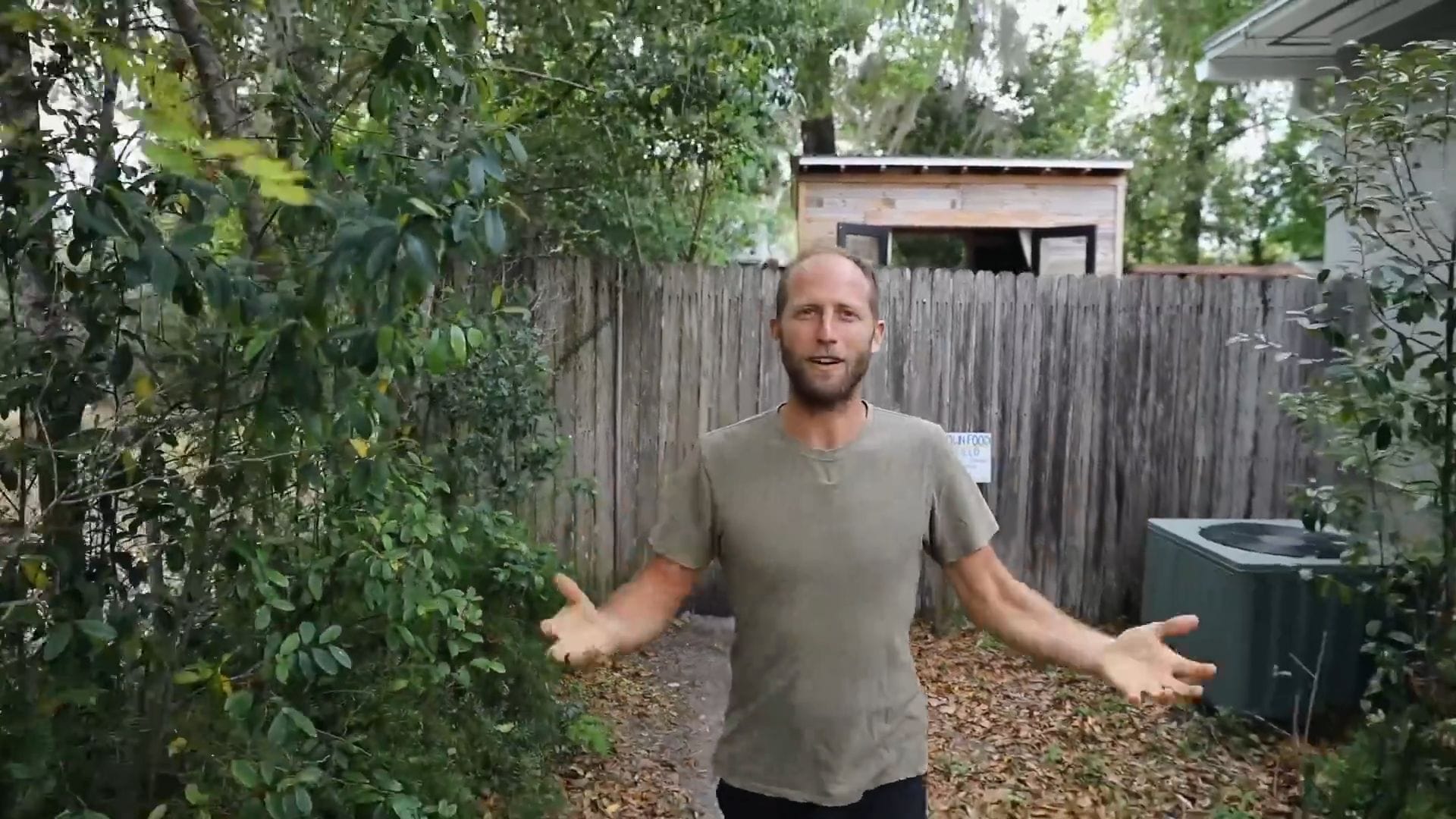
Rob found a property owner who wanted to grow food and live more sustainably, then transformed their front yard into a productive garden while installing rainwater harvesting, composting, and other sustainable systems.
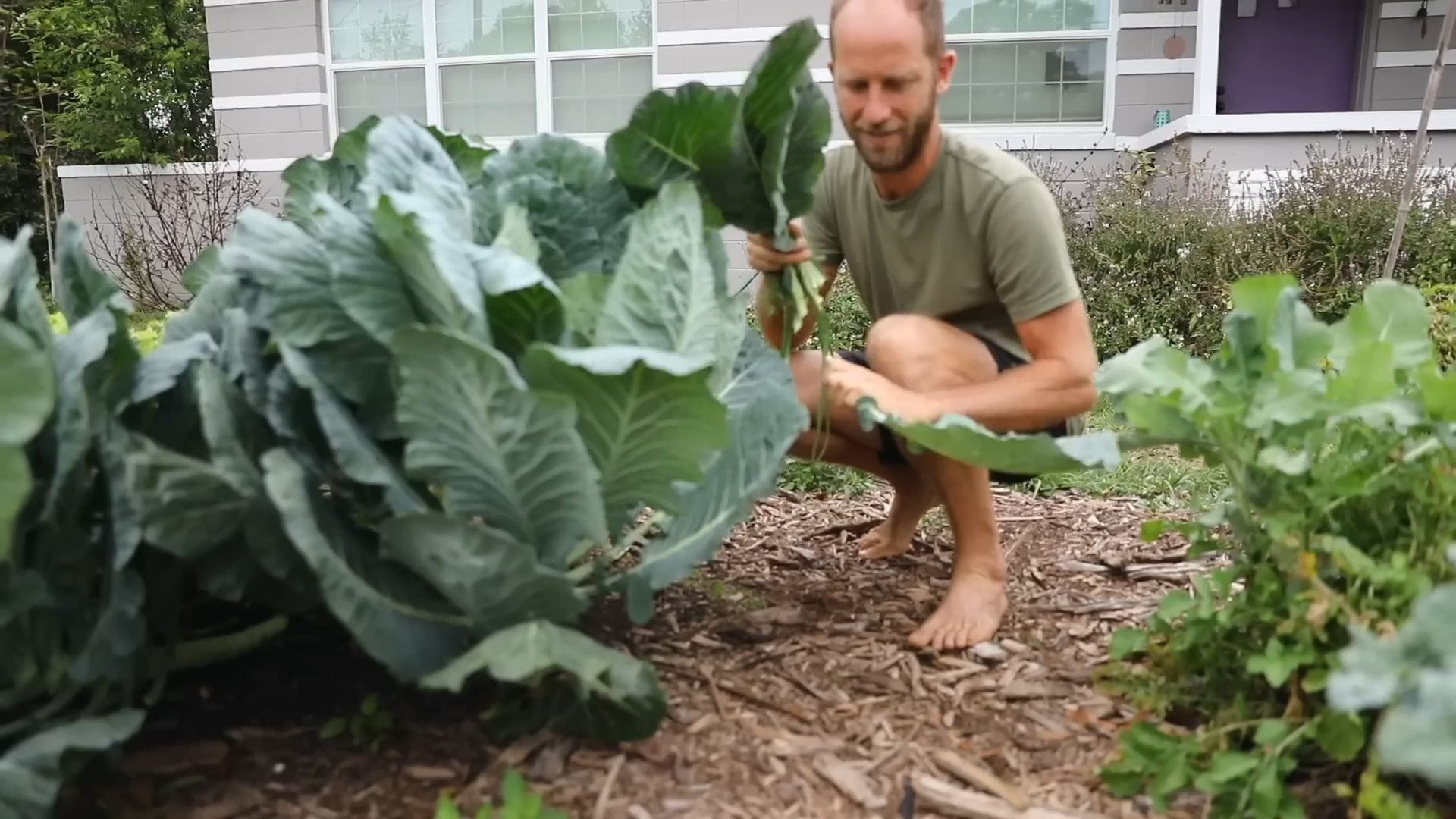
In exchange for using the backyard, the property owners now enjoy homegrown food and sustainable living systems they’d always dreamed of implementing.
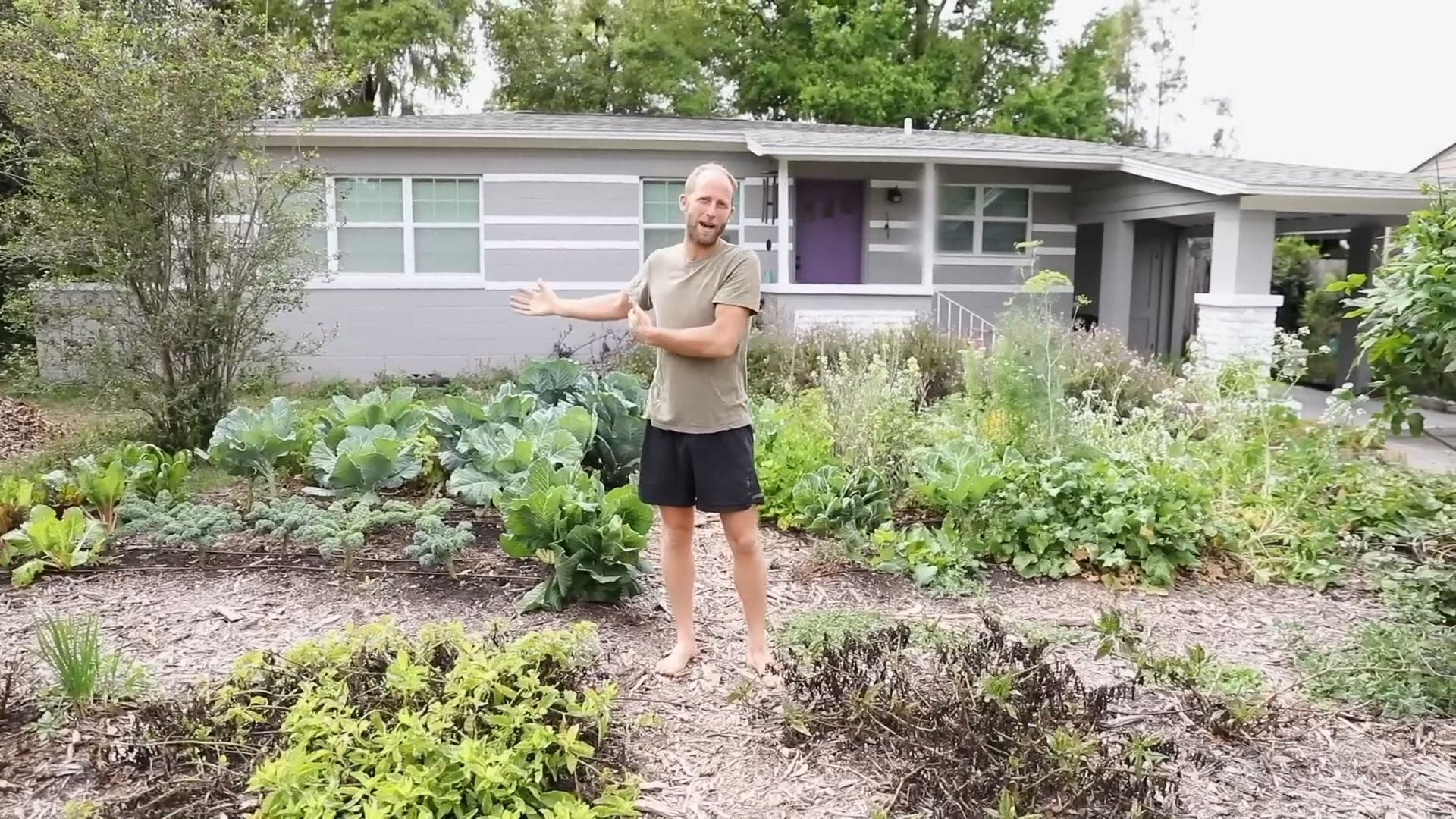
This same arrangement previously worked beautifully in San Diego, creating a lifestyle with zero bills, no debt, and genuine service to others.
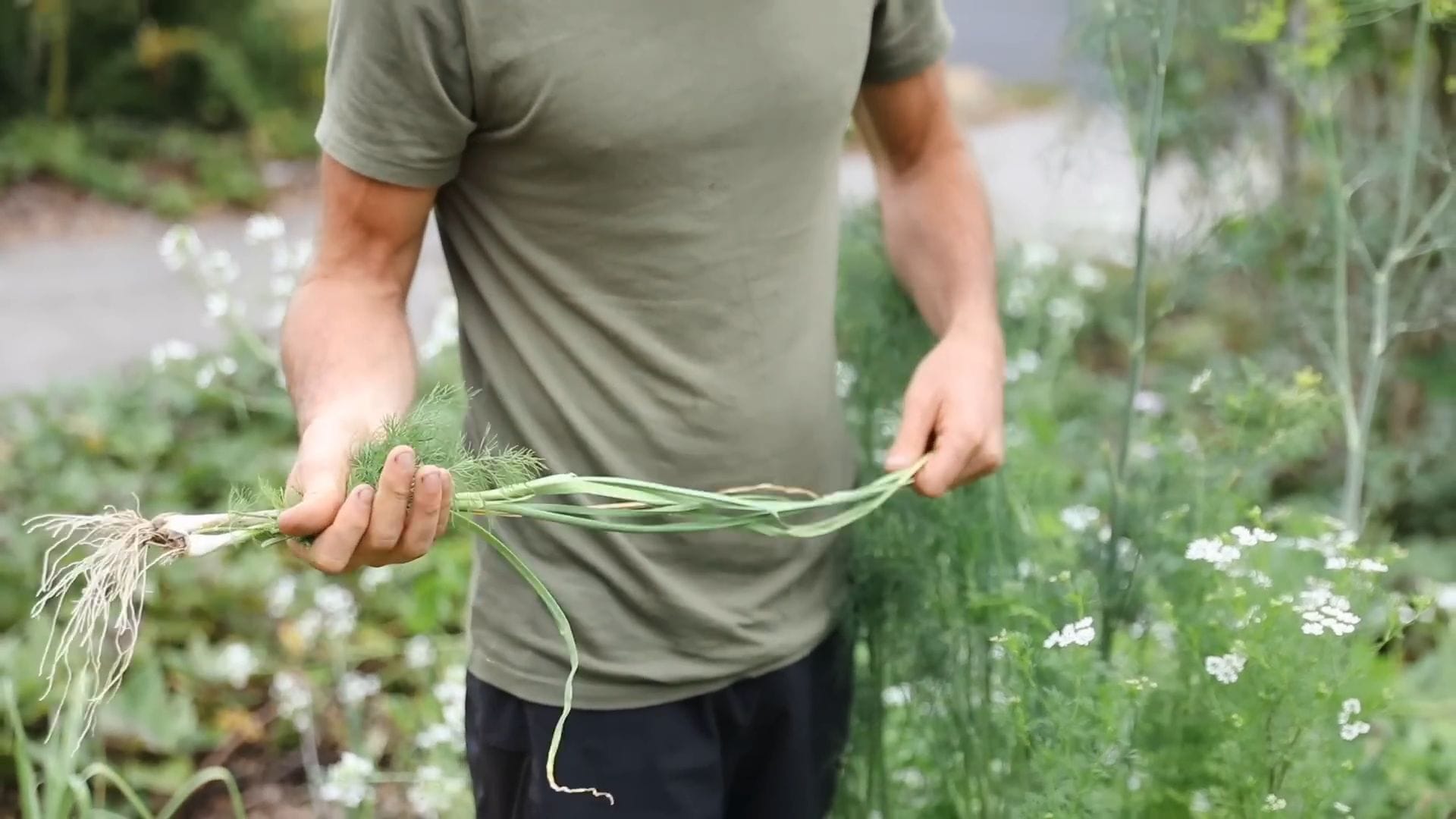
Rob maintains six gardens spread throughout Orlando, spending countless hours in spaces that demonstrate how much food can grow in surprisingly small areas.
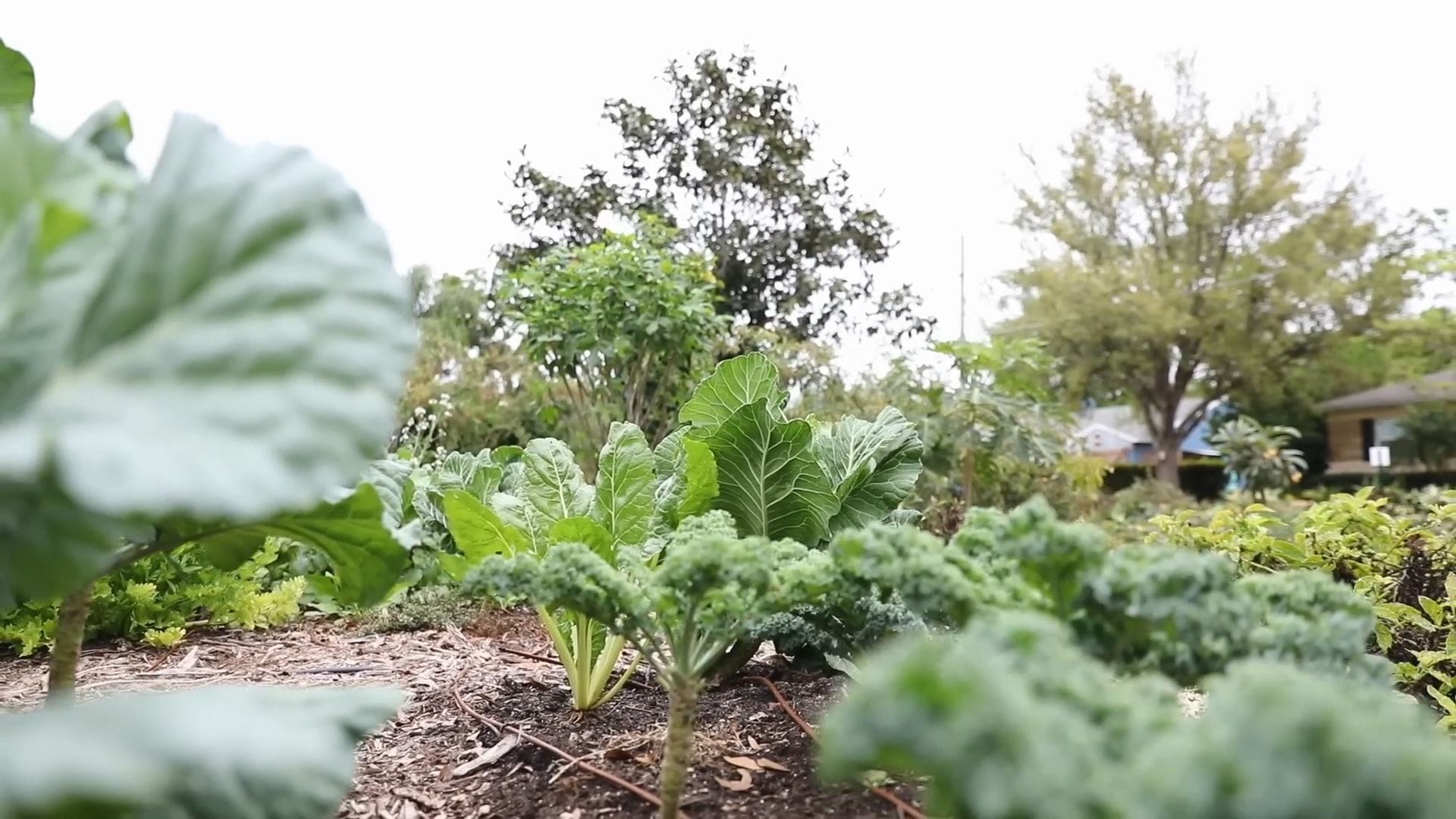
The front yard garden showcases an incredible variety of crops thriving in the urban environment.
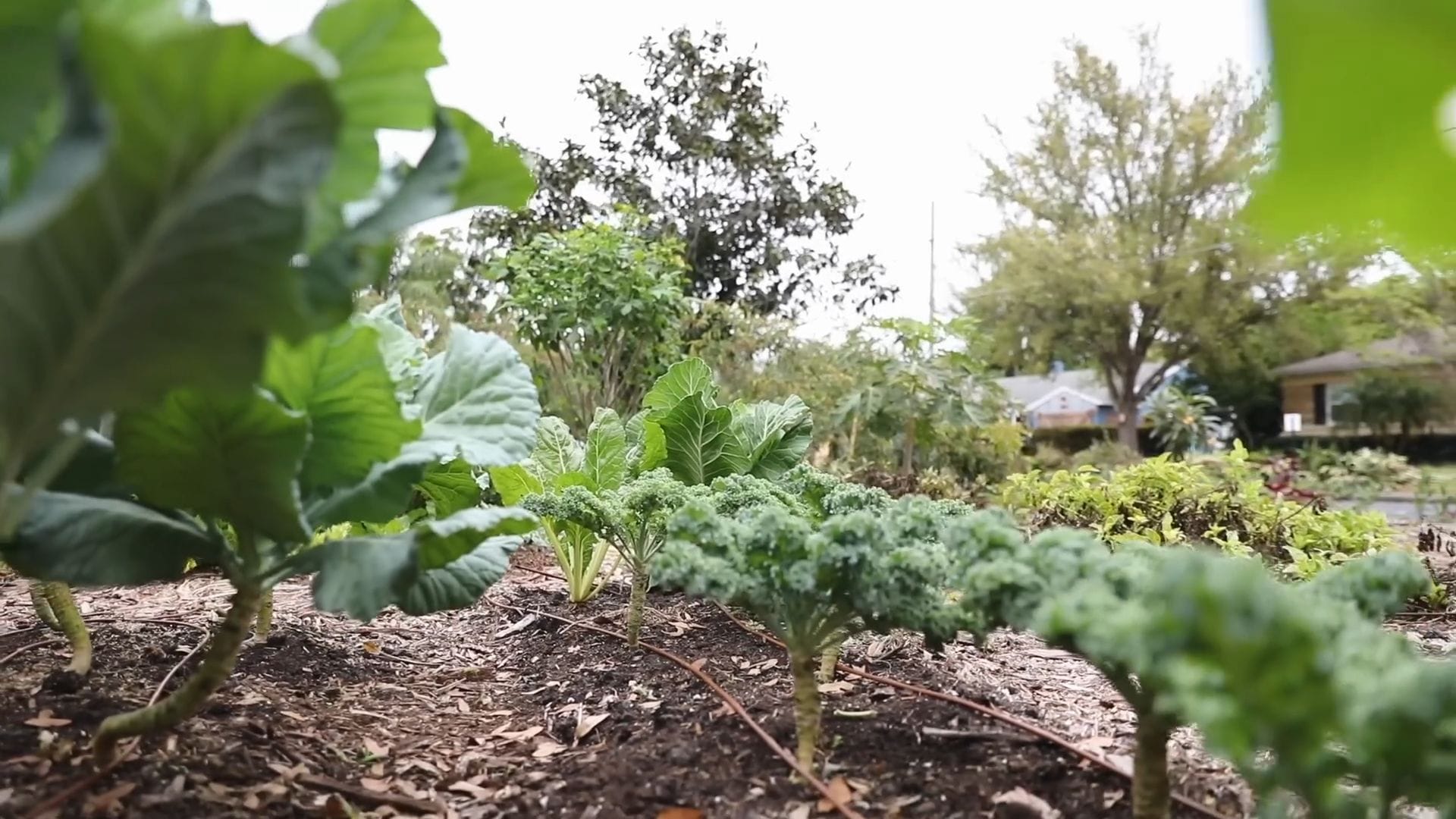
As an environmental activist and adventurer, Rob uses extreme projects to capture attention and inspire thinking about important environmental and social issues. His “Trash Me” project involved wearing every piece of trash he produced for a month, creating a visual representation of individual waste production.
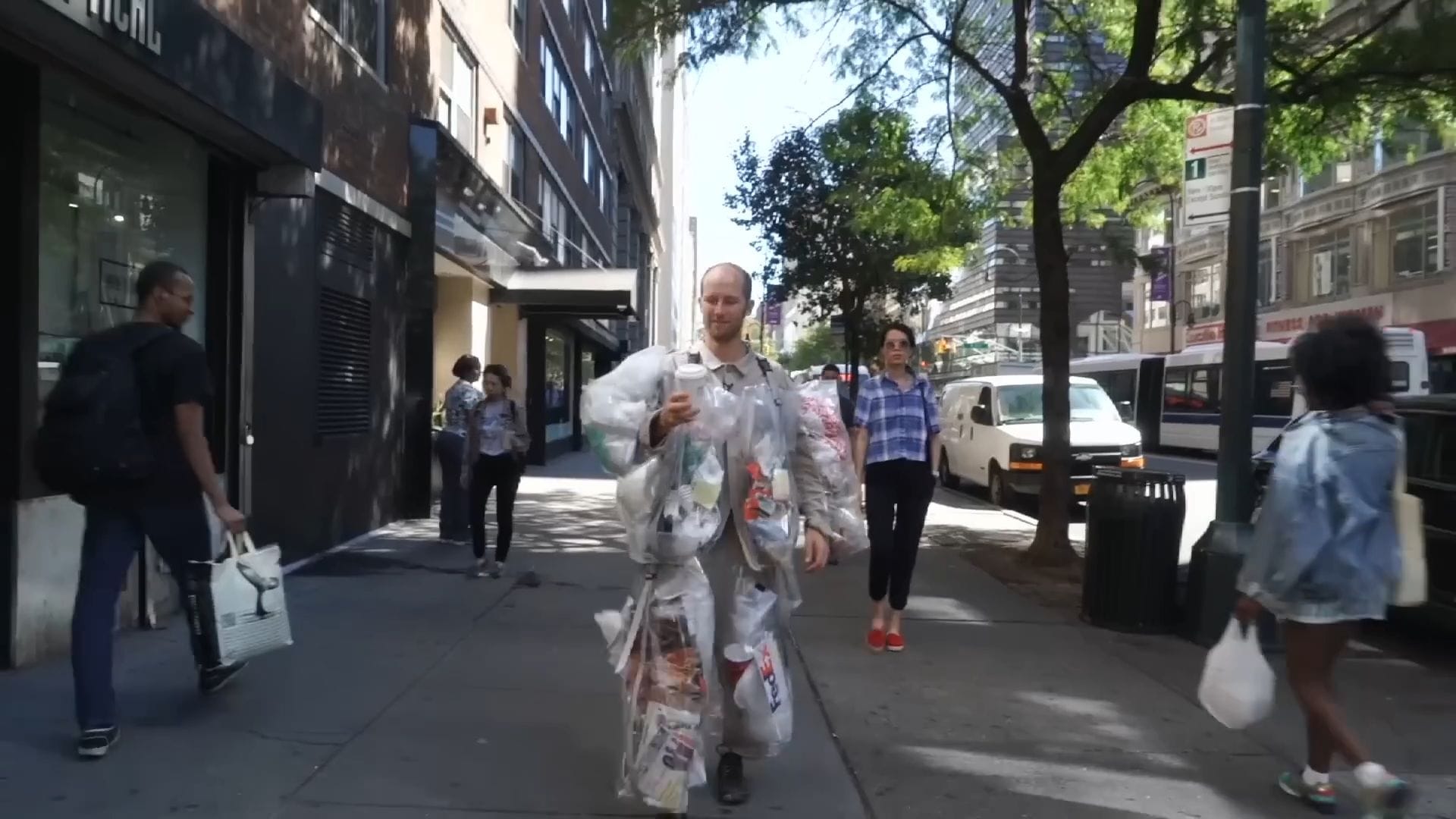
Three cross-country bike trips on a bamboo bicycle raised sustainability awareness while he lived with just 111 possessions that fit entirely on his back.
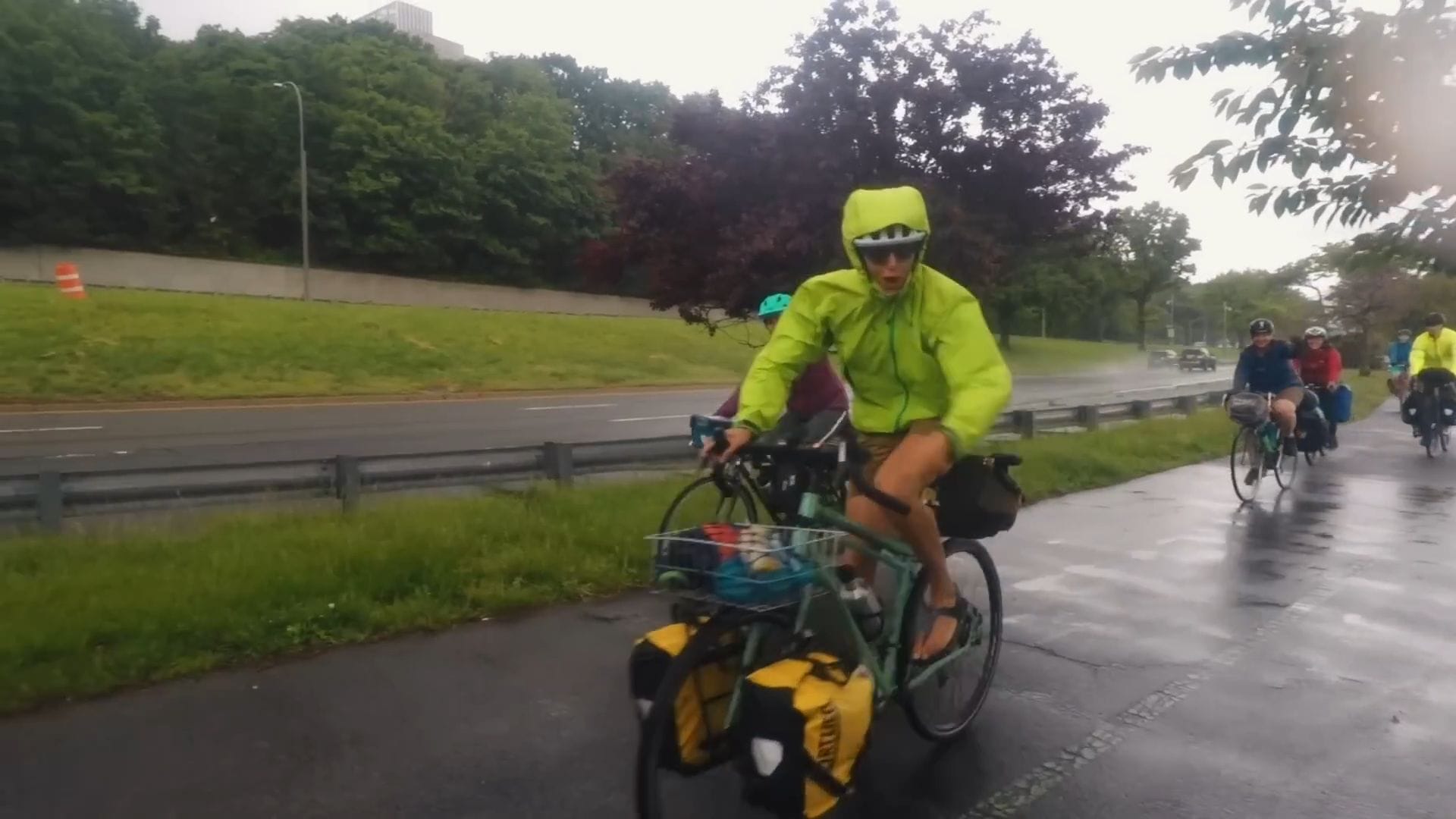
The simplified lifestyle creates a foundation that allows maximum service to others through inspiring, educating, and helping people live better for the world, earth, communities, and themselves.
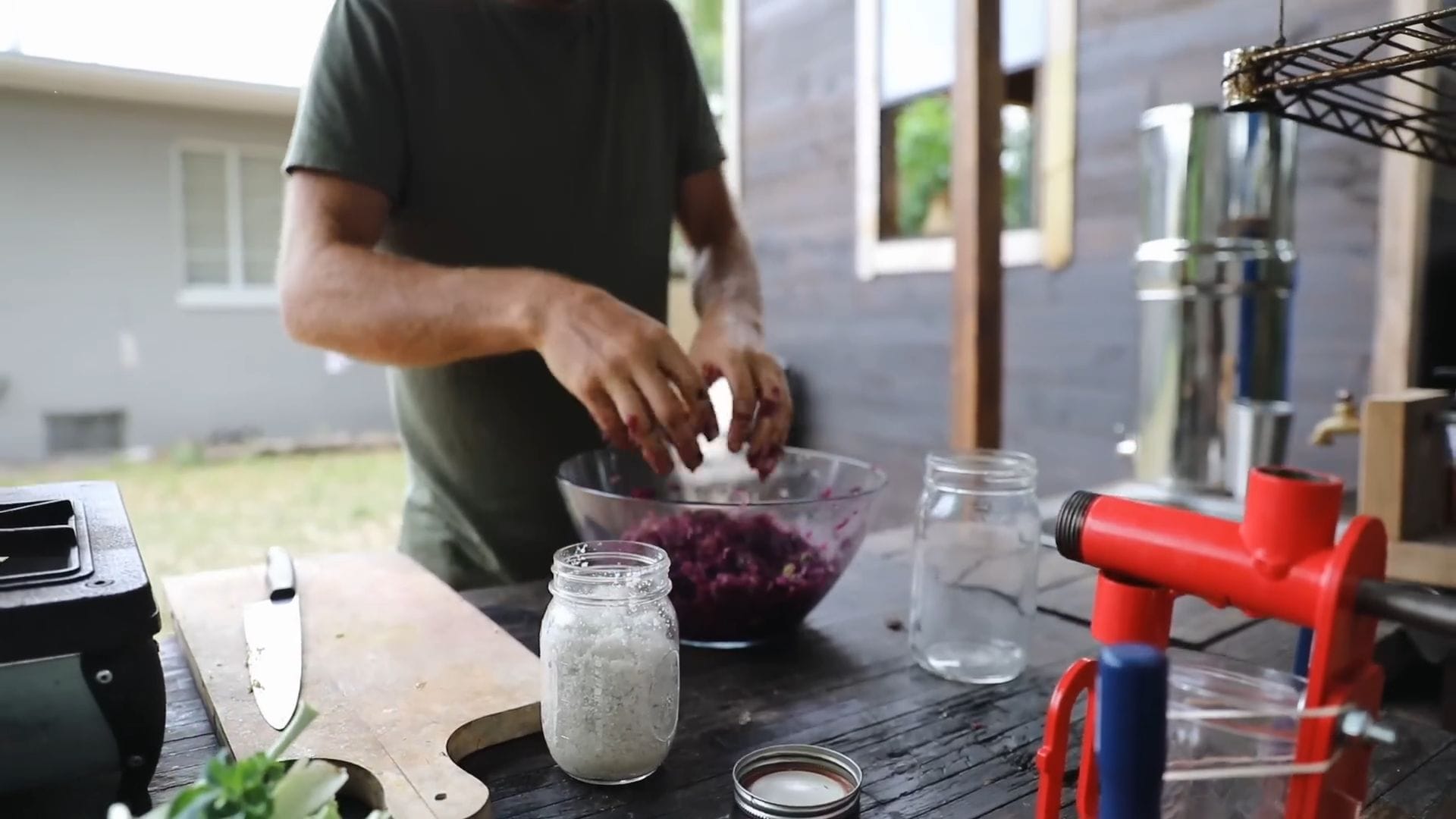
Rather than giving things up, this approach opens space for more purpose, passion, and time with loved ones instead of spending life maintaining, insuring, cleaning, and organizing excess possessions.
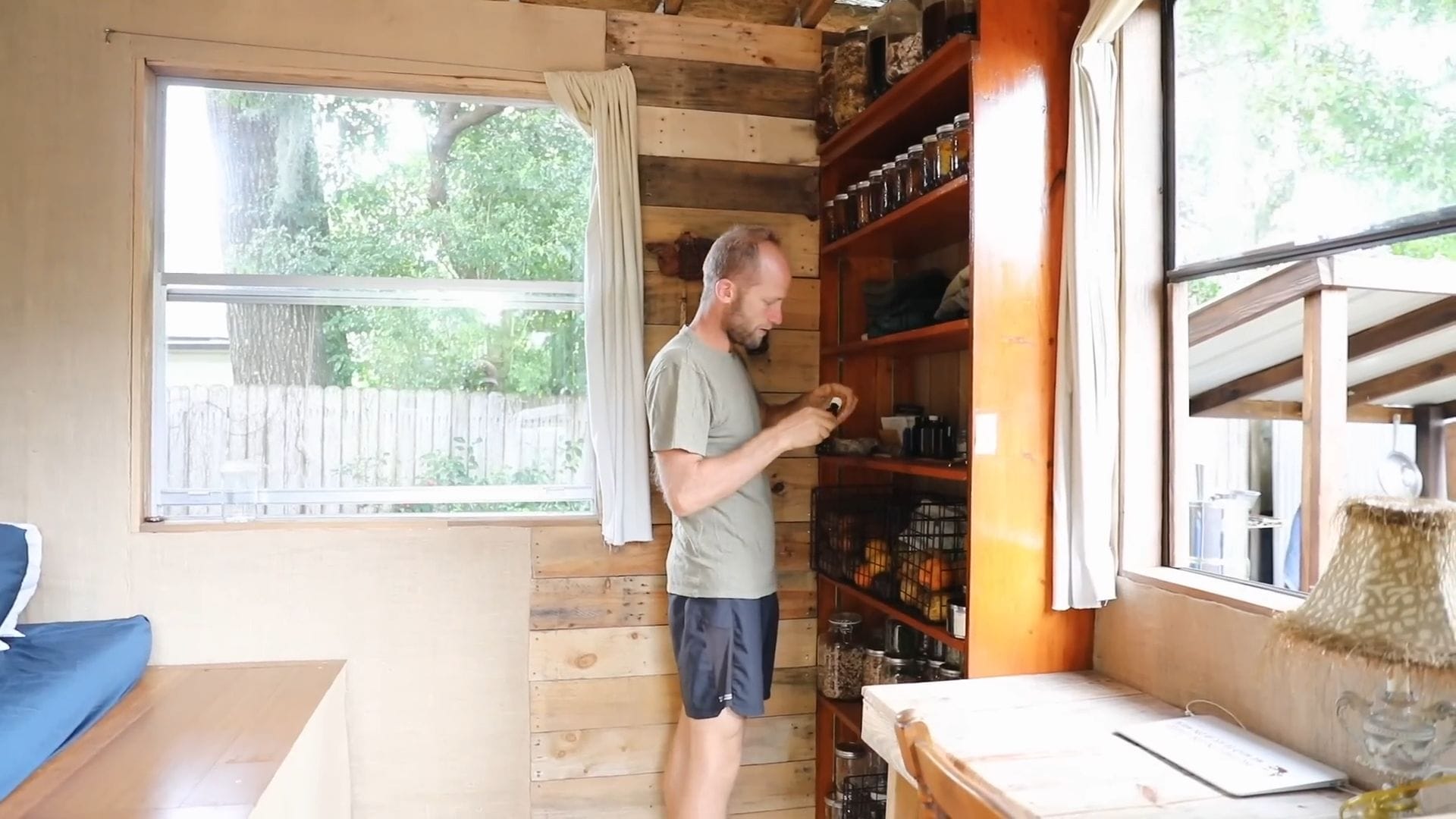
Living with less ultimately provides more life by eliminating the need to constantly earn money for stuff that doesn’t truly matter.
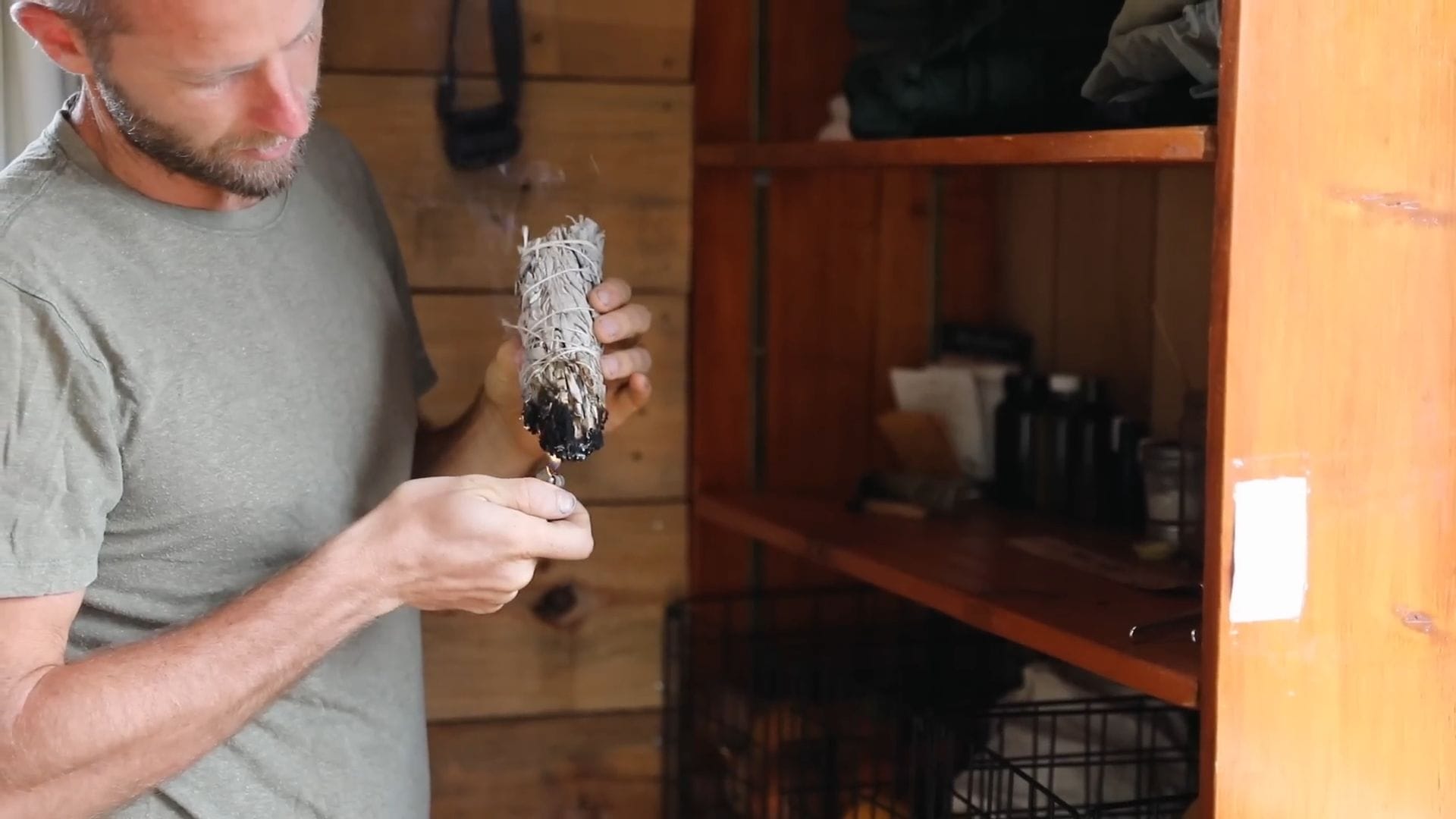
This lifestyle certainly comes with daily challenges that Rob openly acknowledges, from constant upkeep of systems like the compost toilet and rainwater purification to extensive garden maintenance and food preservation.
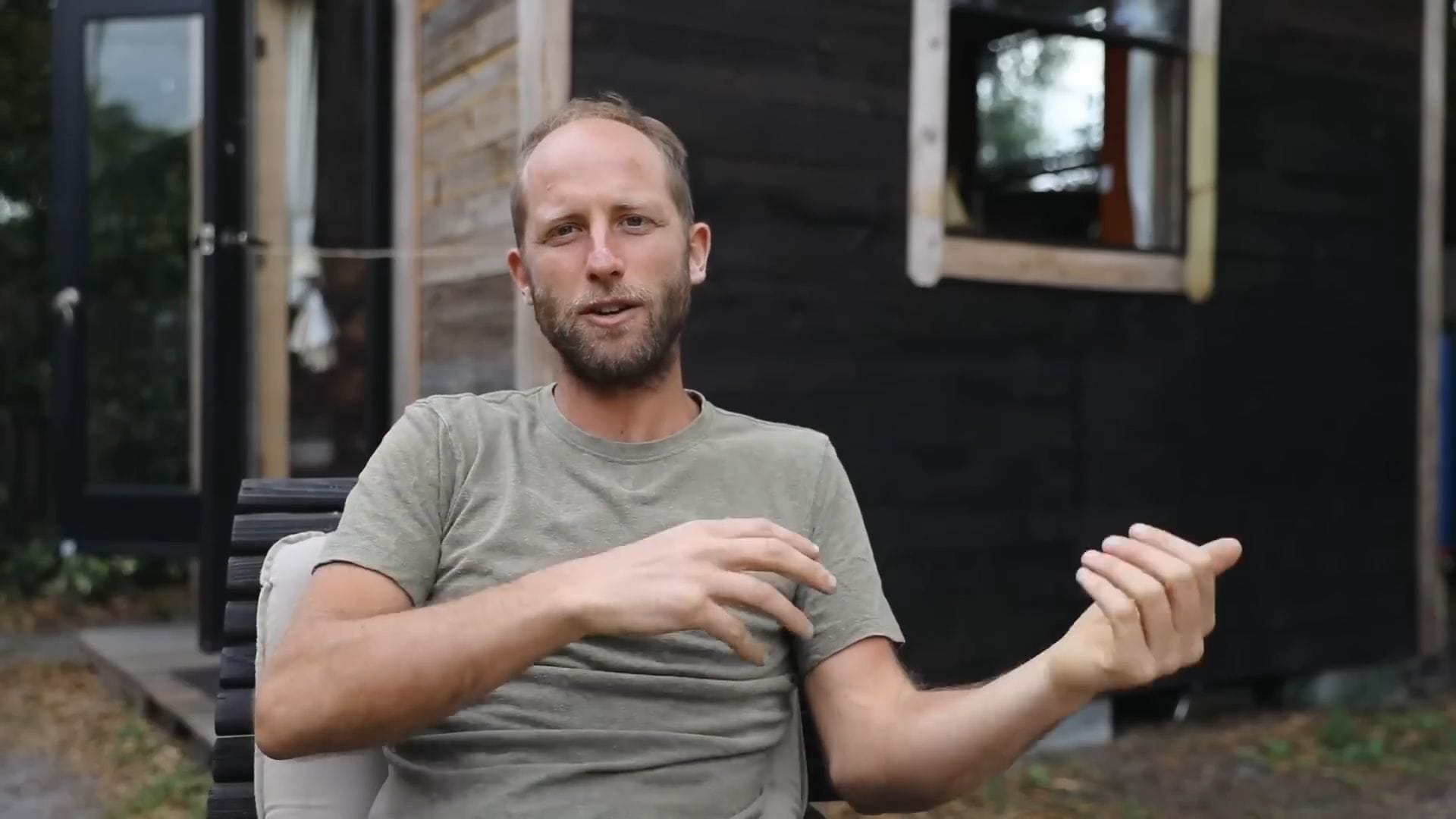
The small space does get messy more easily without extensive storage, requiring frequent but thankfully quick cleaning sessions.
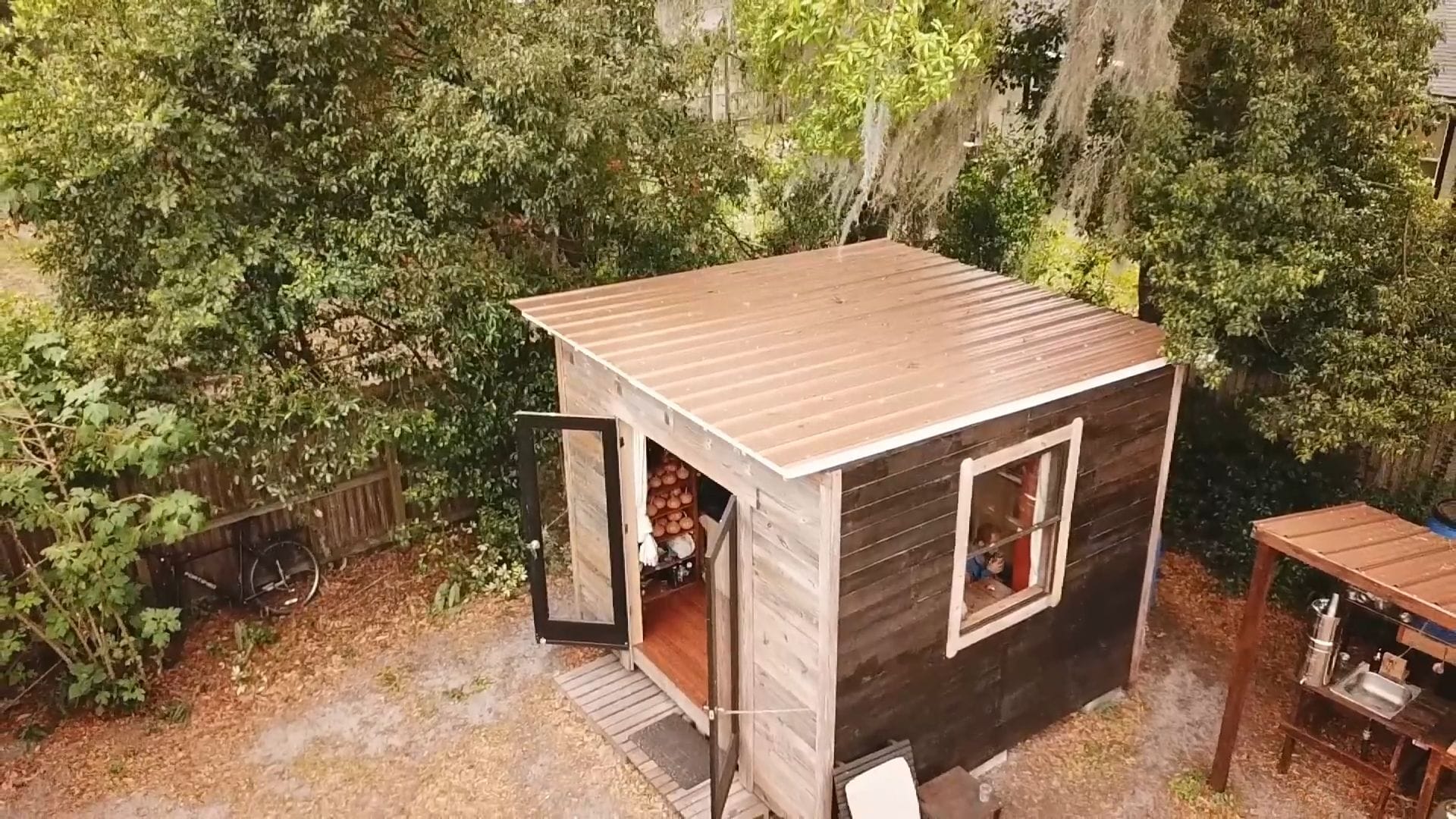
Living without climate control means being more connected to weather patterns – cold in winter, hot in summer – rather than outsourcing that burden to fossil fuel-powered systems.
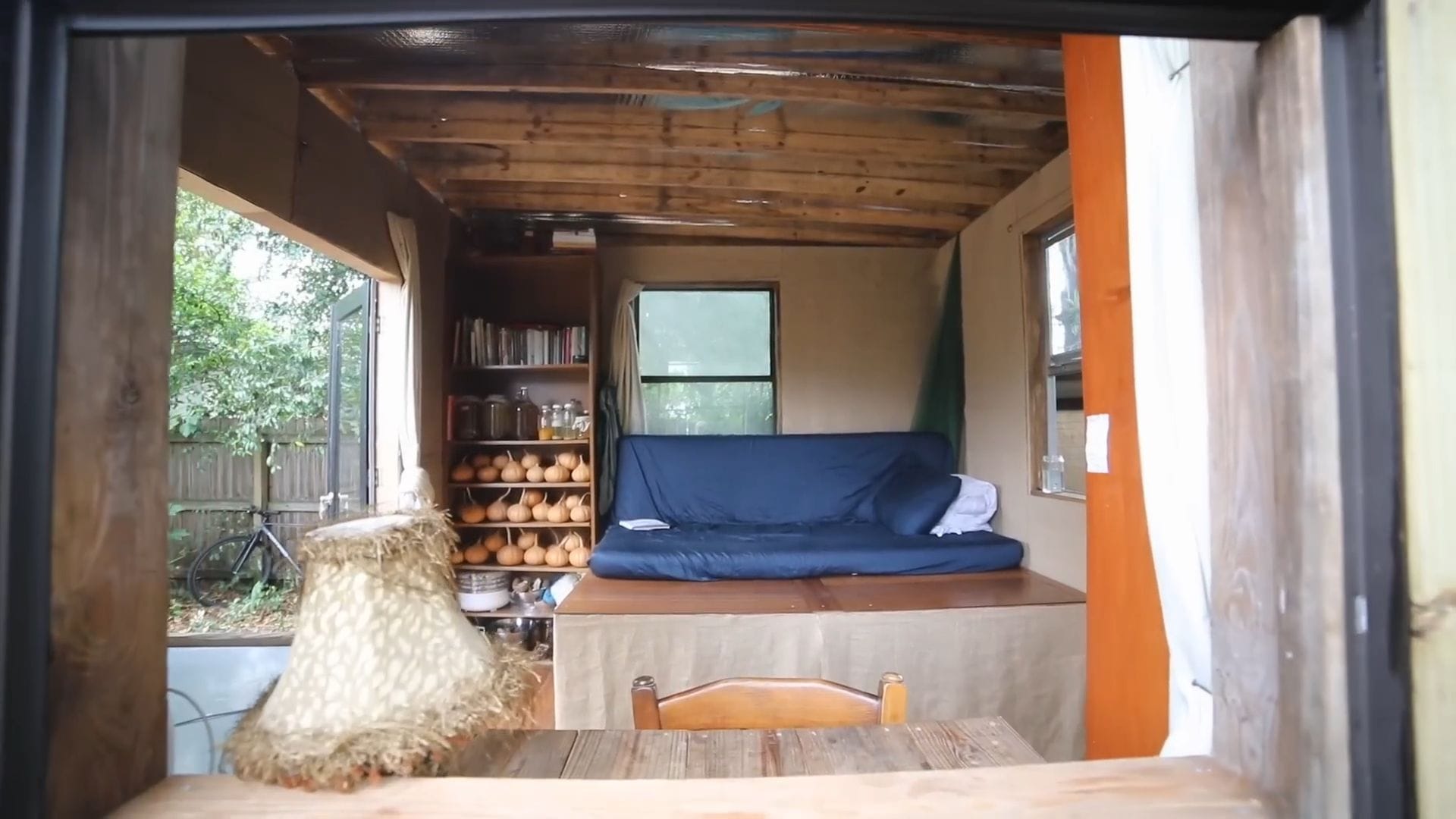
Florida’s insects present ongoing challenges, especially without screens, leading to numerous mosquito bites during the first summer.
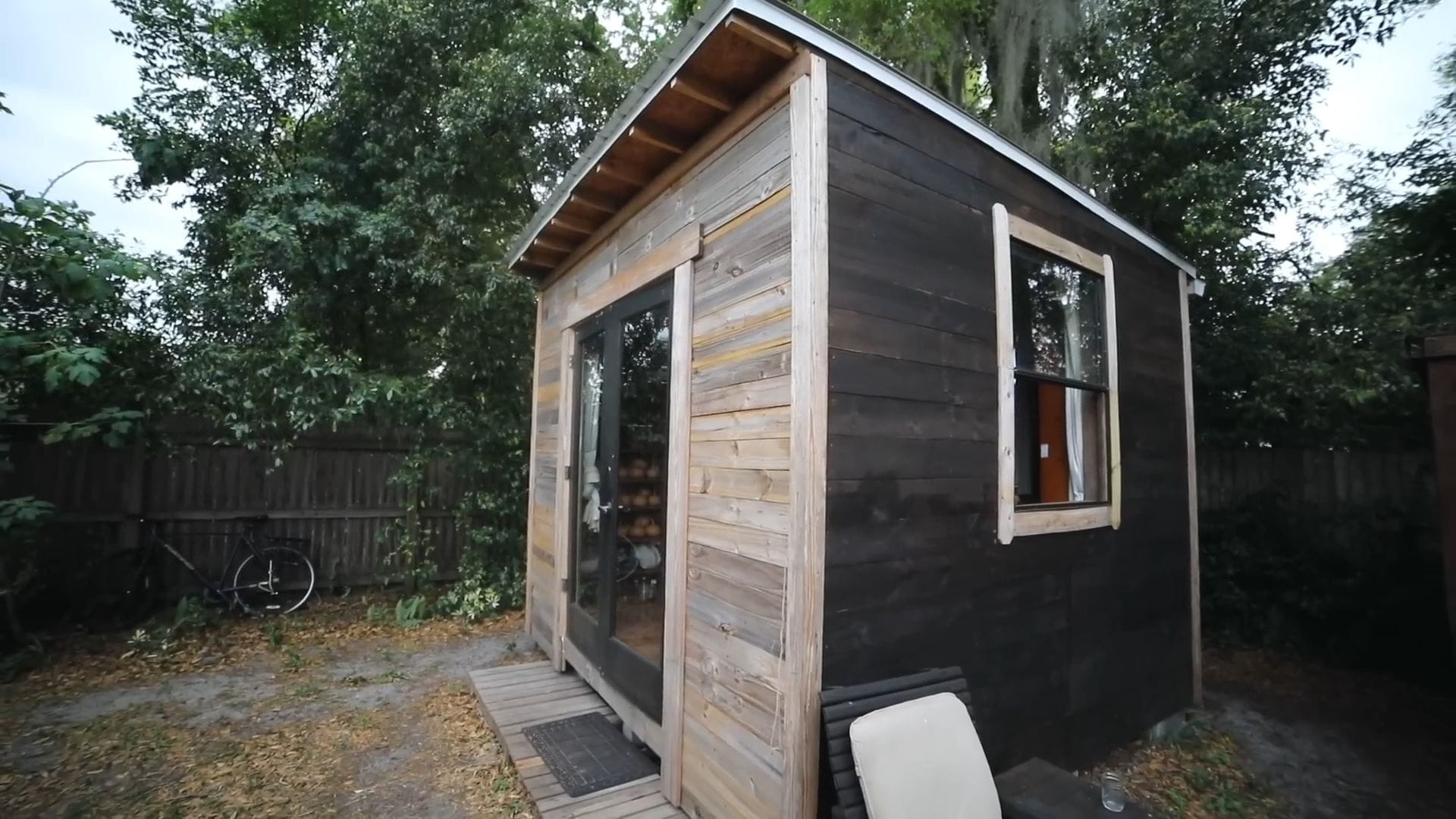
An outdoor kitchen screen system could help address this issue for the coming season.
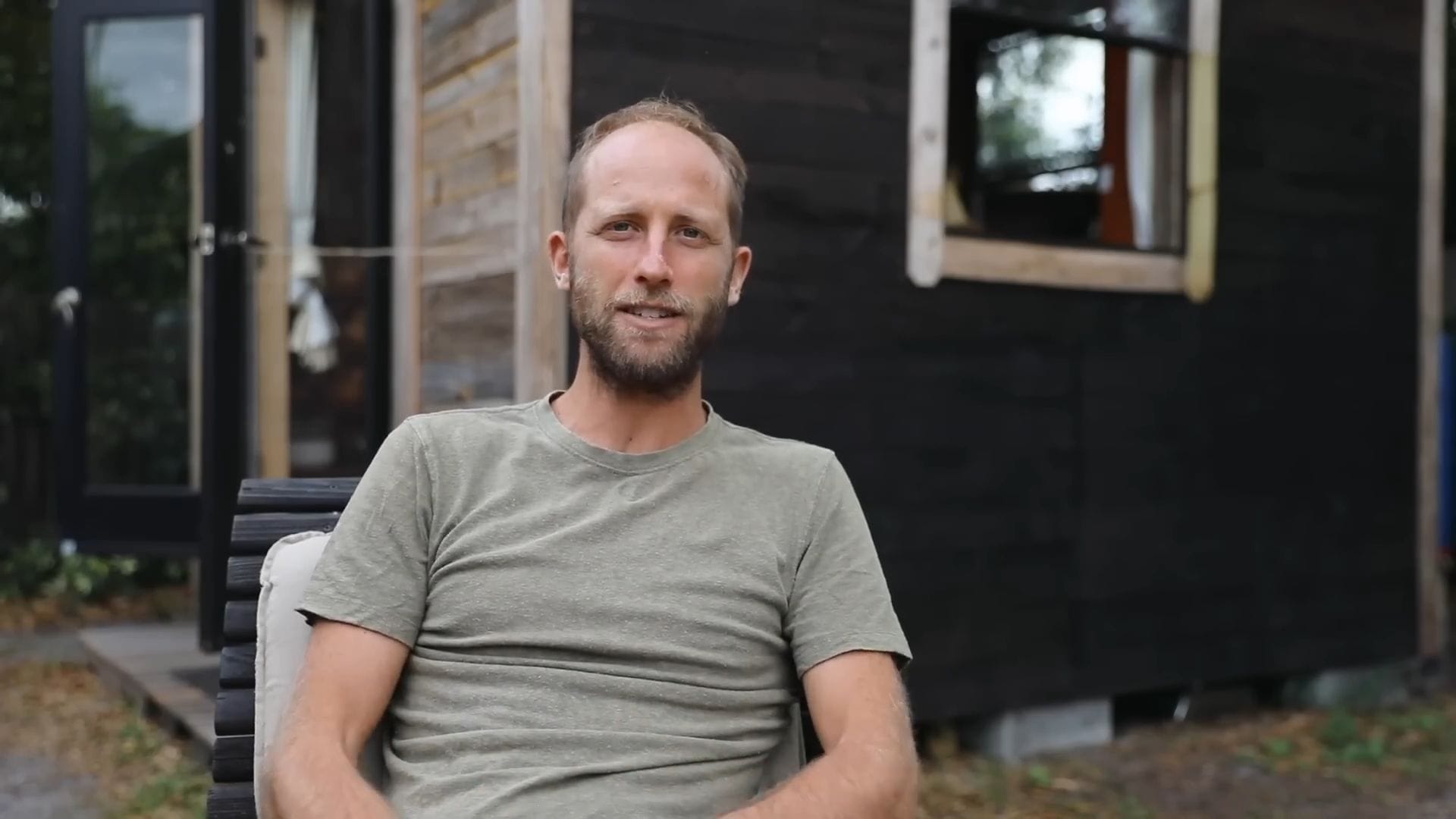
Living on just $8,000 last year and $5,000 the year before requires careful attention to spending and occasional sacrifice of momentary wants.
Yet all these challenges contribute to creating the exact lifestyle Rob desires – living simply, sustainably, and serving as an example for others who share similar goals.
